This one time Detroit wasn’t just a city—it was the city. In the first half of the 20th century, it was the beating heart of American industrialization. The fourth-largest metropolis in the country and, more importantly, the undisputed king of the automobile industry. If you wanted to build cars, you came to Detroit. If you wanted to own a car, well, chances are it was built in Detroit.
But long before that, back in the 19th century, Detroit was already making a name for itself—as a beacon of freedom for Black Americans escaping slavery (we’ll get to that bit later). Fast forward to the early 20th century, and things got… complicated. The South was in the grip of a cotton crisis, jobs were vanishing, and if you were Black and unemployed, you weren’t just out of work—you were at risk of being deported. Meanwhile, World War I had slammed the brakes on immigration from Europe, leaving a massive gap in the workforce. And so, the North—industrialized, booming, desperate for labor—opened its doors to a wave of african-american workers from the South, who suddenly found themselves with opportunities they’d never had before.

Then came Henry Ford, a man who looked at a car and thought, what if I built a million of these, really, really fast? His technological revolution turned Detroit into a factory-filled wonderland, churning out cars and jobs by the hundreds of thousands. No fancy degrees required. No specialist skills necessary. All you needed was a pair of hands, a tolerance for soul-destroying repetition, and the ability to not drop dead of boredom.

And for a while, it worked. Brilliantly.
In the first 30 years of the 20th century, Detroit’s population didn’t just grow—it exploded, skyrocketing sixfold to a staggering 1.5 million people. During this massive boom, Black Americans made up barely 10% of the city’s residents.
World War II made one thing painfully clear—racial segregation in America wasn’t going anywhere, at least not in the military. But on the home front, things were shifting. As white men shipped off to fight, Black workers stepped in to take their places in the factories. This triggered a second wave of migration from the South—an even bigger one than before. In total, around six million of African-Americans moved to the northern states, and by the late 1960s, they made up a full quarter of Detroit’s population.
But while Black Americans were moving in, white residents were moving out. As the city’s demographics changed, those who weren’t thrilled about their new neighbours began selling their homes and fleeing to the suburbs. And the government, in its infinite wisdom, only sped up the process. The logic was simple: if every citizen owned a little plot of land, they’d be less likely to turn communist. So, naturally, suburban sprawl became the new American dream.
The more Detroit’s racial balance tipped, the more everyday culture shifted, and the more racial tensions flared. Which, of course, only made white flight happen even faster. It became a self-perpetuating cycle—a machine that kept feeding itself, accelerating the city’s transformation whether anyone liked it or not.
The dividing line between the predominantly white suburbs and the predominantly Black inner city became the now-iconic Eight Mile Road—yes, that Eight Mile, made famous by Eminem. And speaking of Eminem, the man himself is, of course, a Detroit native.
This growing tension reached its boiling point in 1967, when the arrest of several Black patrons at an unlicensed bar sparked what became known as the 12th Street Riot—one of the most violent uprisings in American history.
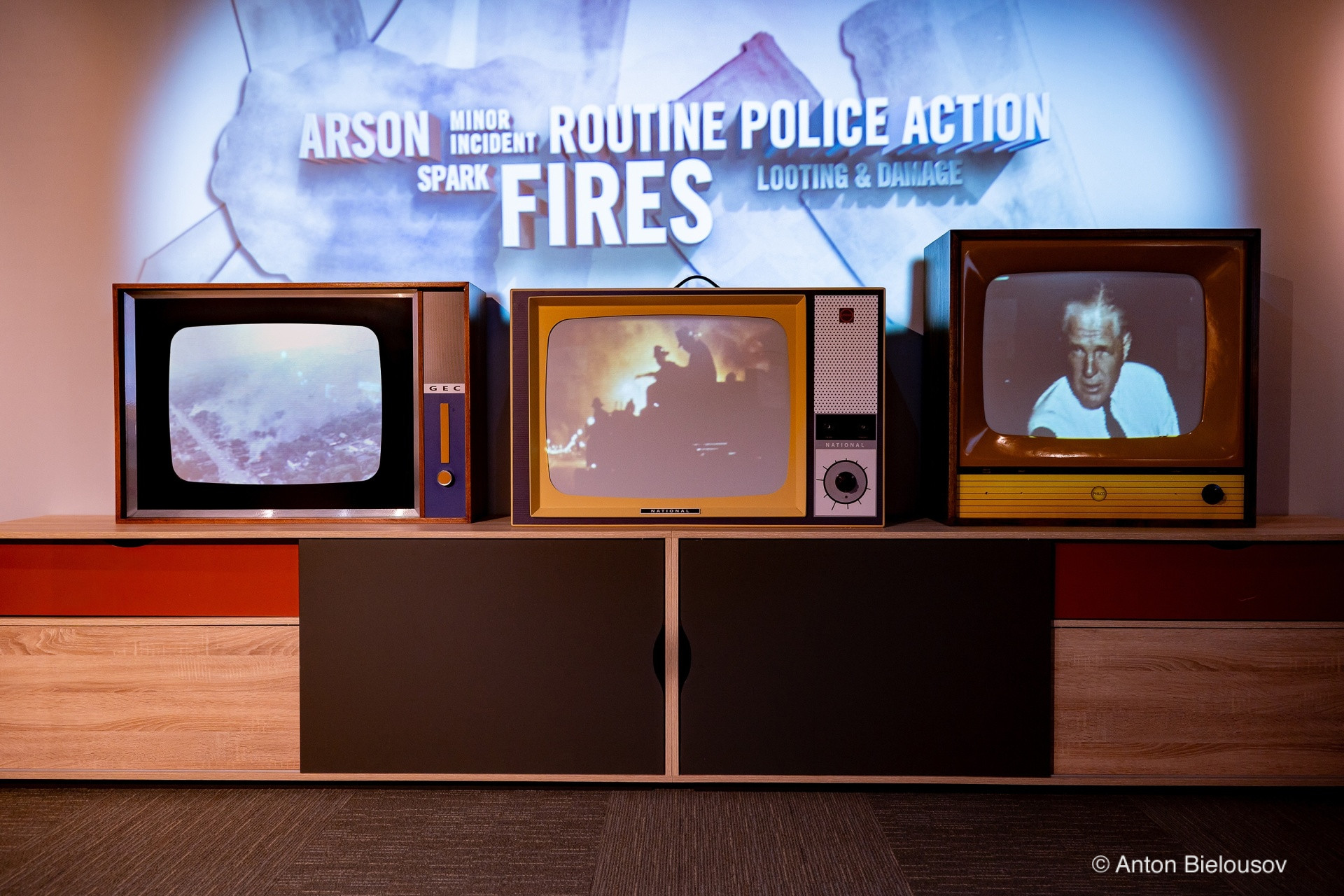
What started as a clash with the police quickly spiraled into looting, riots, and arson, lasting a full five days. The city was brought to its knees, and it wasn’t until the National Guard rolled in with 8,000 soldiers and armored vehicles that the chaos was finally brought under control.
During these riots, around 43 people lost their lives, 467 were injured, and over 2,000 buildings were damaged or destroyed. It was a grim chapter in the city’s history, marking the culmination of years of tension and unrest.


Right: Walter P. Reuther Library, Archives — Riots, Rebellions, 12th Street, 1967
By 1994, the city’s demographic shift was striking—90% of the remaining population in Detroit was African American.
The aftermath of these events was nothing short of devastating for Detroit. The riots accelerated the already-existing trend of people fleeing the city—particularly those who didn’t want to stick around if something like that were to happen again. The city’s population continued to dwindle as fear and uncertainty drove people out of the urban core.
Six years later, in 1973, the oil crisis hit, bringing with it massive job cuts, and the exodus of the middle class reached a full-blown avalanche. By this point, the only people left in the city were those who had nowhere else to go or nothing else to lose. With poverty and unemployment running rampant, crime became Detroit’s unwelcome companion, thriving in the chaos.
Today, Detroit’s population is nearly three times smaller than it was in the 1950s, shrinking from 1.85 million people to just 630,000 in 2023. Of those remaining, roughly one in three lives below the poverty line.
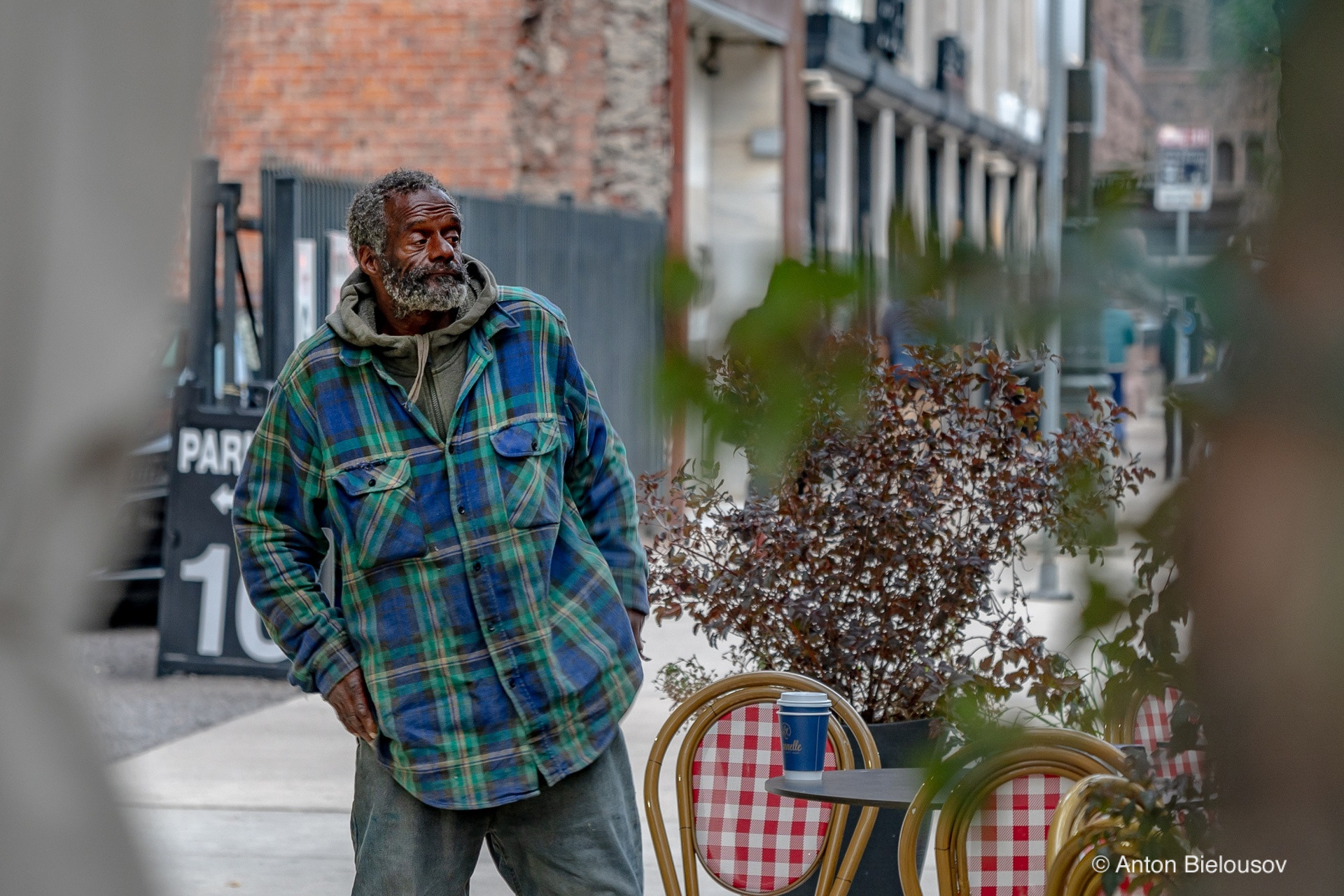
The lowest point for Detroit came in 2013, when the city declared bankruptcy, burdened with over $18 billion in debt. Interestingly, just five years earlier, Detroit’s mayor had been sentenced to 28 years in prison for corruption, a fitting reflection of the city’s turbulent decline.
When one candidate for Detroit mayor was asked why the city’s murder rate had dropped, his response was blunt: “The murder rate is down because there’s nobody left to kill”.
Coleman Young
Abandoned factories, warehouses, stores, skyscrapers—even entire neighbourhoods—turned Detroit into a ghost town. Some areas of the city started to look, quite frankly, like something straight out of a post-apocalyptic wasteland. You half expect to see zombies lurching around the corner or a lone survivor scavenging for supplies. It is the kind of place where you could almost hear the eerie wind howling through the ruins.
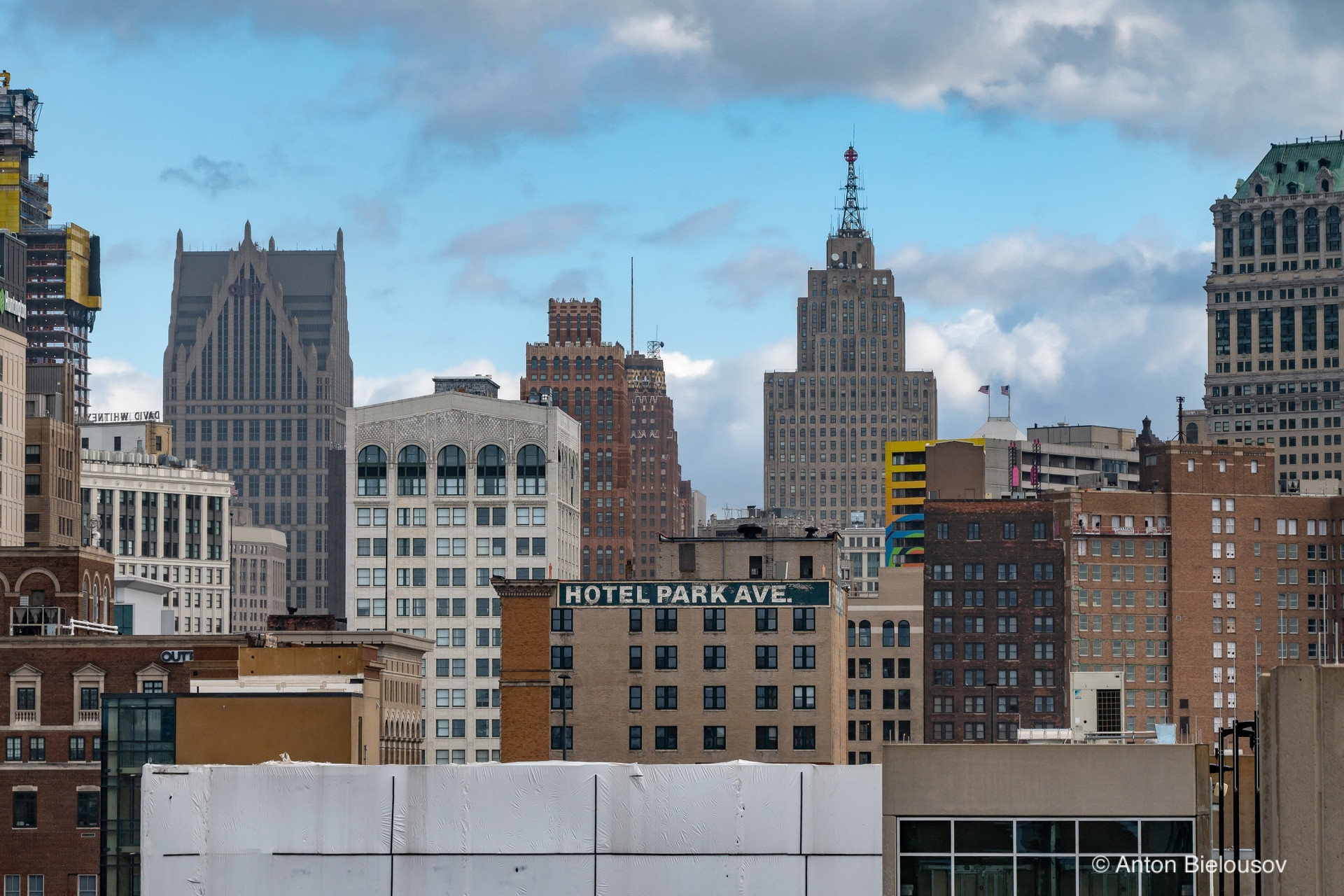
The historic neighborhoods of Detroit, primarily developed by Irish settlers in the 1800s, became known as “Corktown,” a tribute to their homeland. Corktown played a crucial role in shaping Detroit, both during the city’s industrial boom and in the subsequent rise and fall of its fortunes. The area witnessed the prosperity and the decay, embodying the city’s story in its bones.
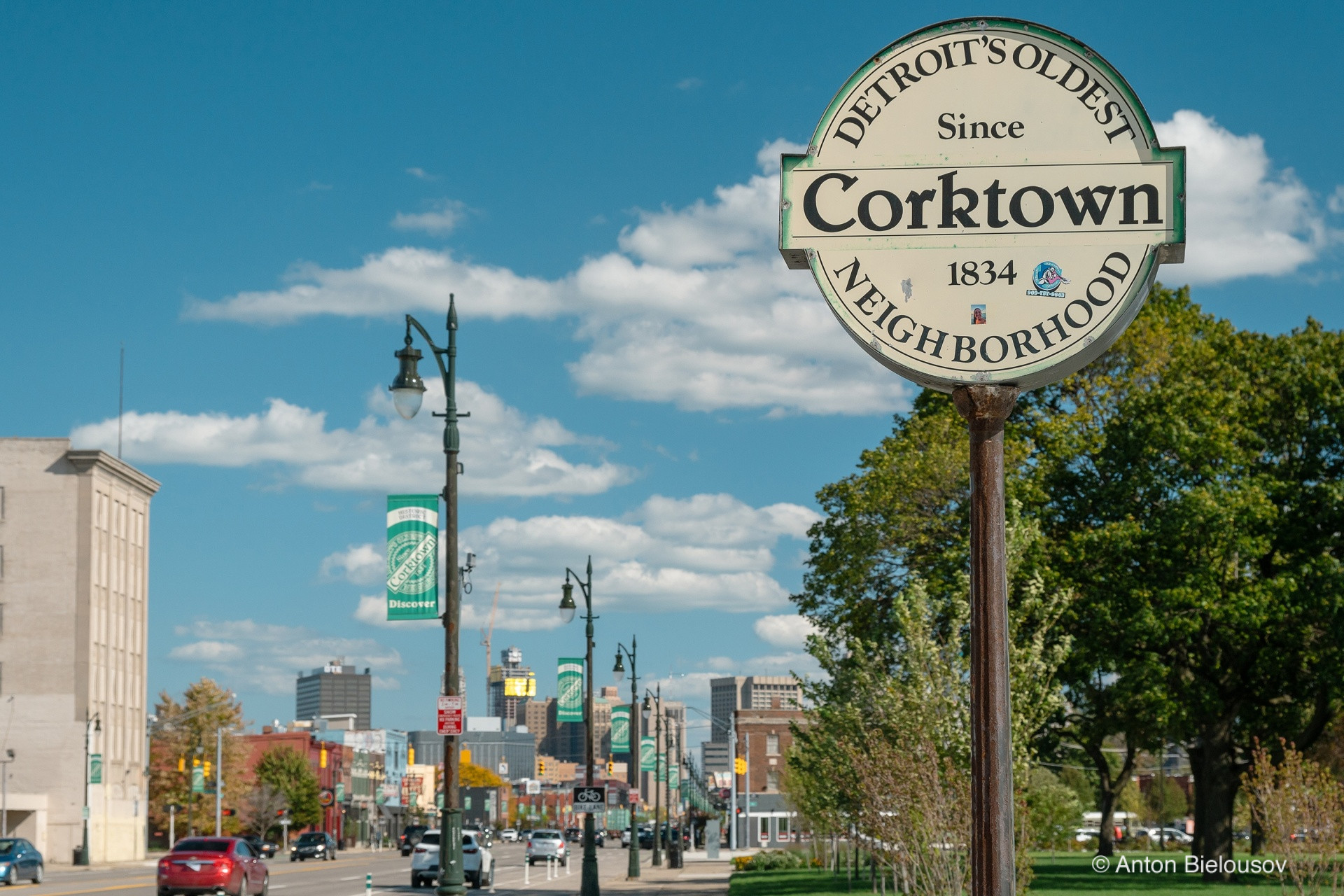
From a bird’s-eye view, Detroit today might actually look like a pretty decent place—lush, green, and thriving in ways you wouldn’t expect from a city with such a notorious past. It’s almost as if the city decided to turn the page and say, “Right, enough with the ruins. Let’s give this a fresh start.” You could almost mistake it for a perfectly respectable city… if you didn’t know its history, of course.
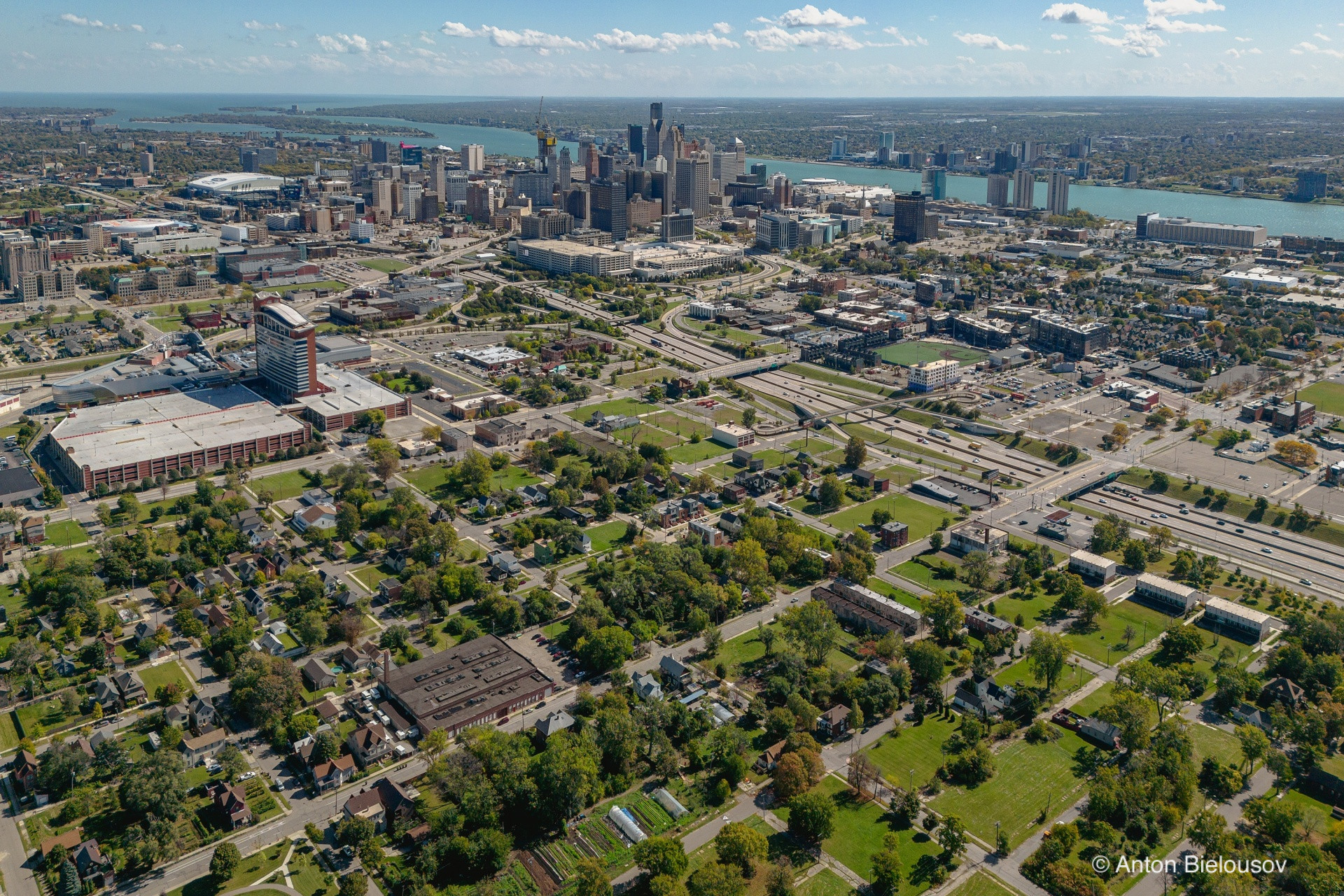
But take a closer look, and those lush green lawns and well-kept grass patches turn out to be vacant lots where homes once stood. It’s as if the city tried to cover up its scars with a coat of grass, but scratch the surface, and you realize it’s still very much a place trying to rebuild itself from the inside out.
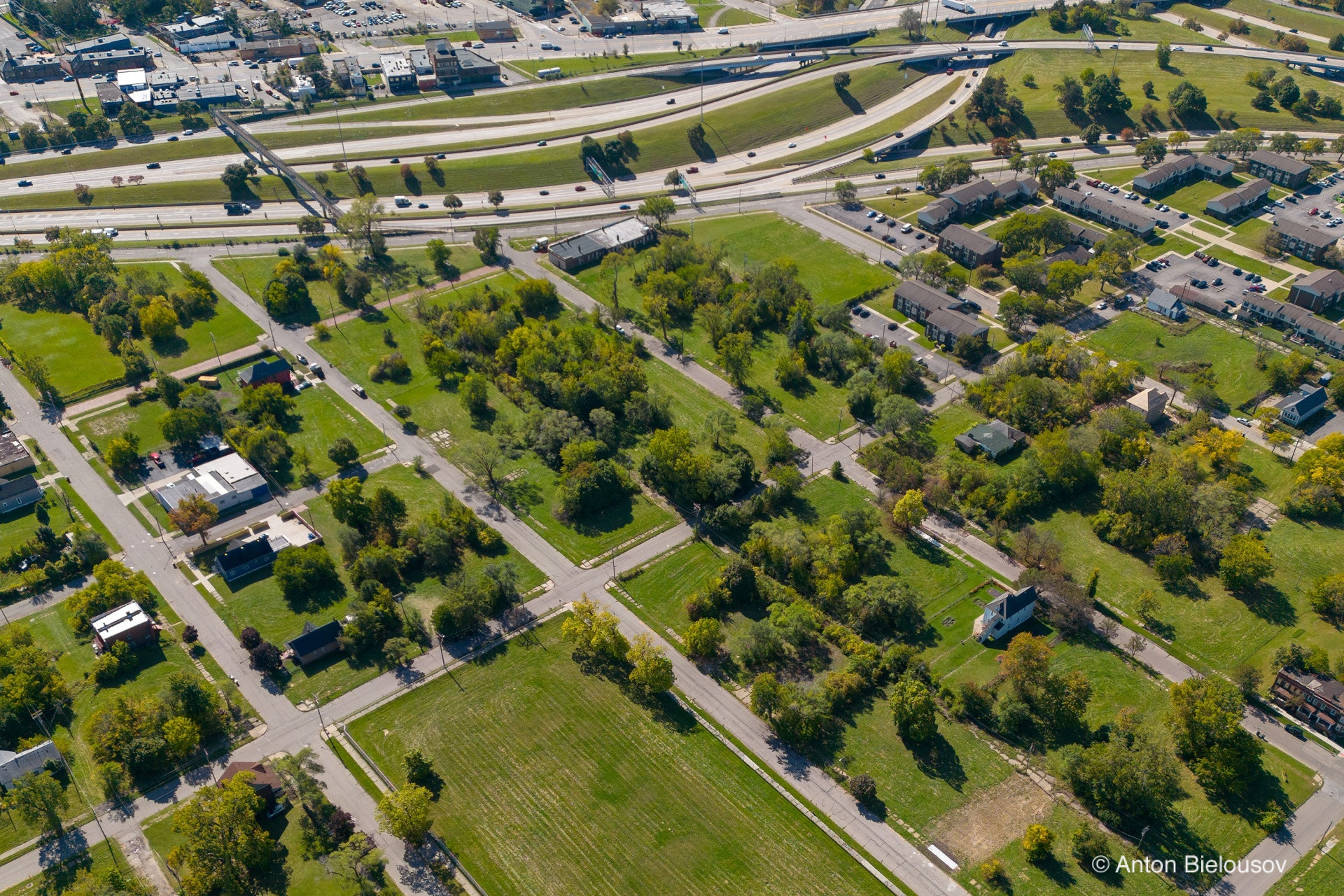
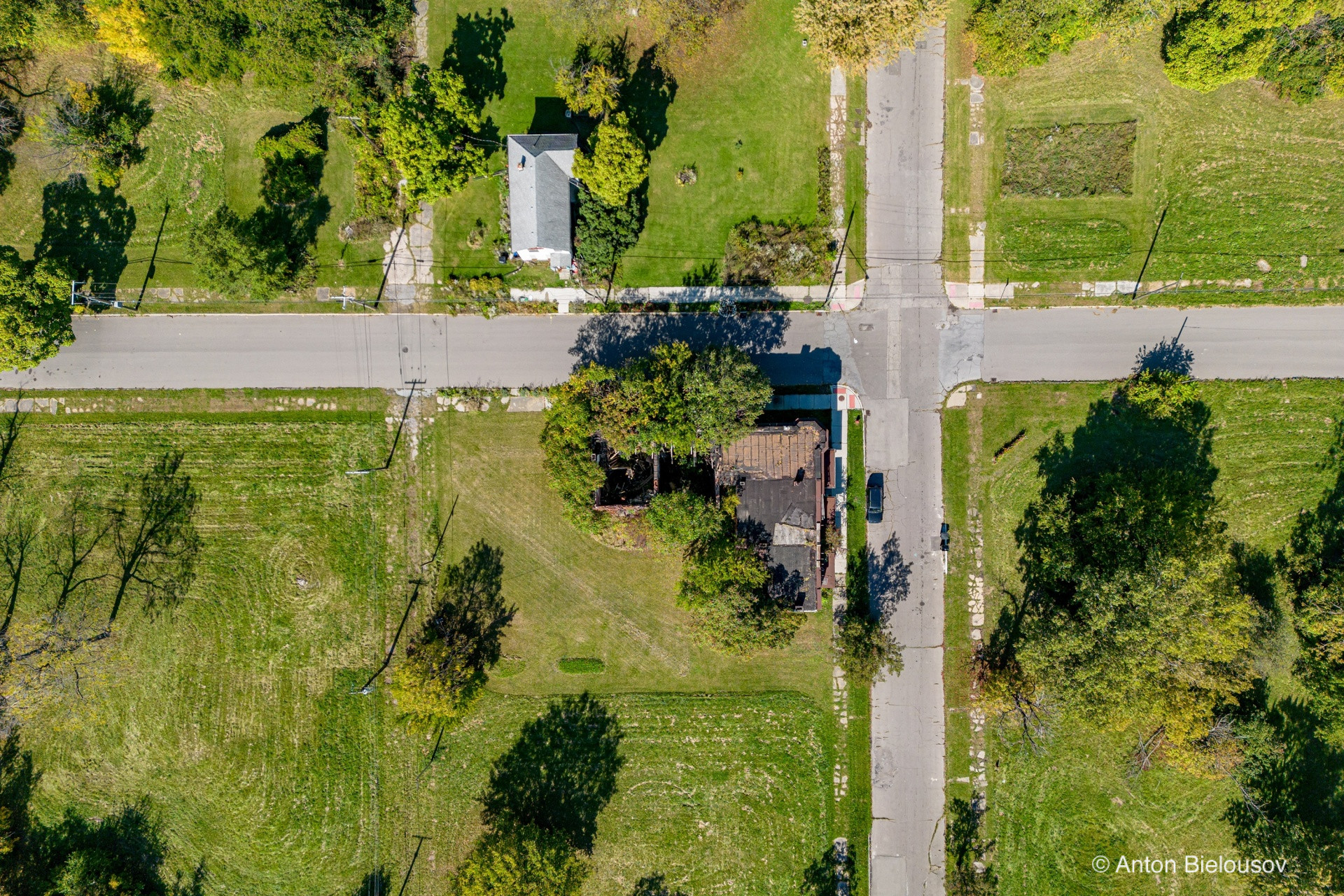
In the 1980s, a new “game” emerged among Detroit’s teenagers—setting fire to abandoned houses on Halloween night. They dubbed it Devil’s Night, and it reached its peak in 1984, when more than 800 homes were set ablaze. There were even some opportunistic souls who, under the cover of this chaotic night, decided to torch their own homes—because, why not? They could cash in on the insurance payouts and at least get something back for their devalued property. It was like a twisted combination of arson and financial strategy.
In 1986, ahead of Halloween, Detroit even had to introduce a curfew for minors.
Little by little, entire neighborhoods were reduced to nothing, with just one or two houses stubbornly standing among the ruins.
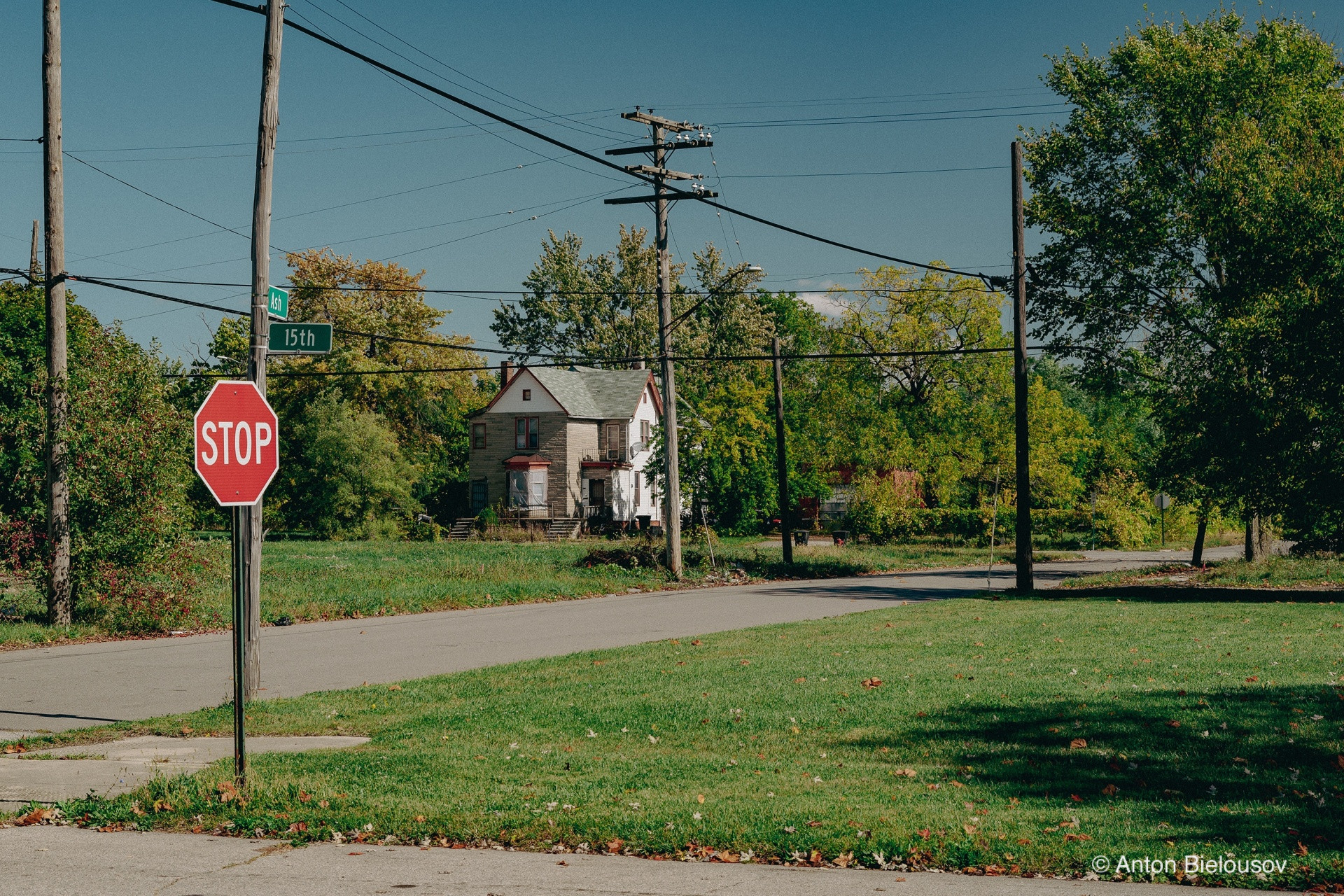
It was as though the city had been slowly, methodically dismantled—until all that was left were a few lonely survivors clinging to the past. It was like watching an entire city crumble into a ghost town, piece by piece.
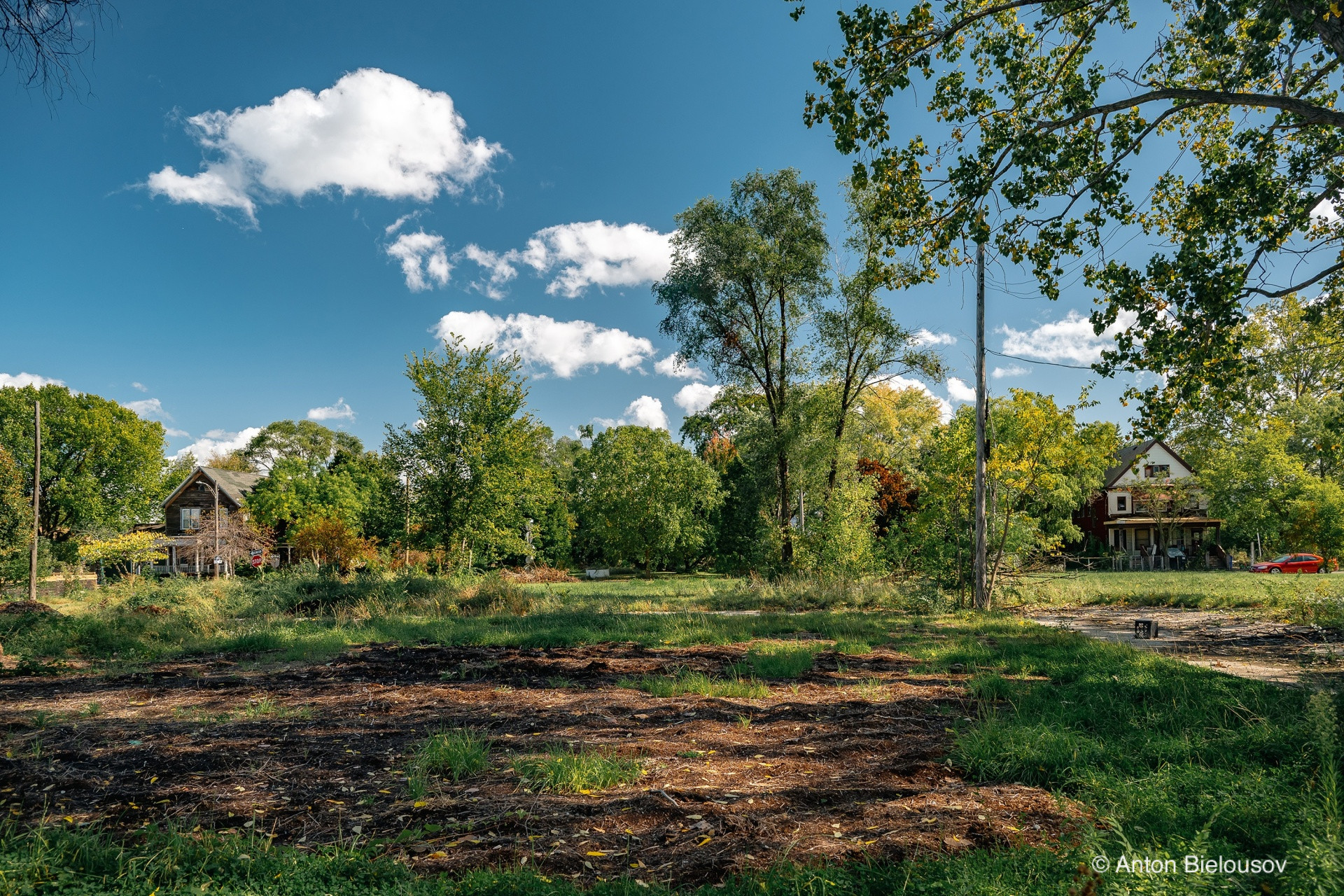
And then there were a few streets that were just completely empty. No houses, no people—just vast stretches of nothingness, once again, like a scene out of a post-apocalyptic game.
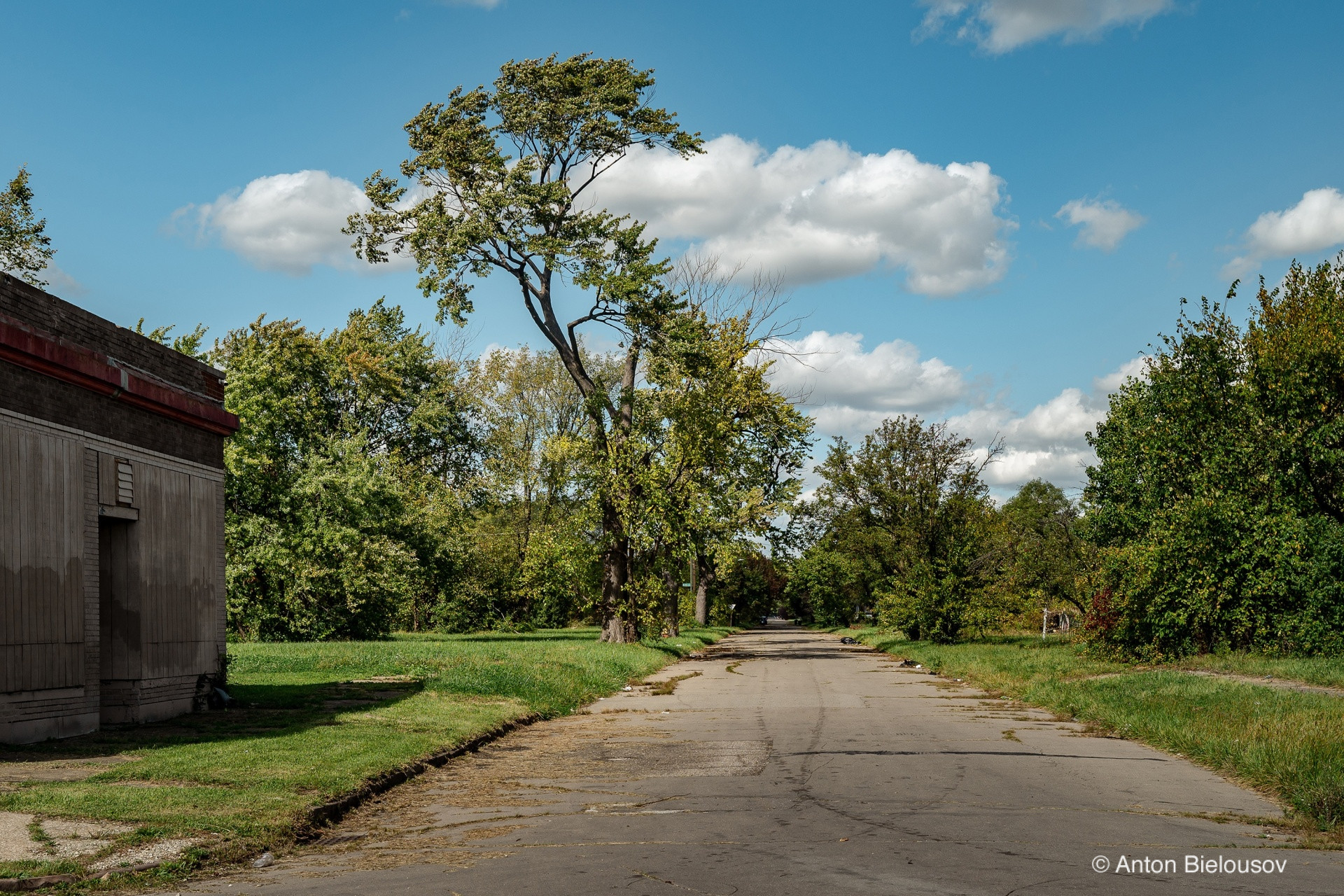
It might seem like a dream—huge yards, neighbors far off in the distance—but in reality, the size of the lot never changed. You’re still stuck with that same old postage stamp of land, but now it’s surrounded by emptiness.

And not every neighbor is quite the same.
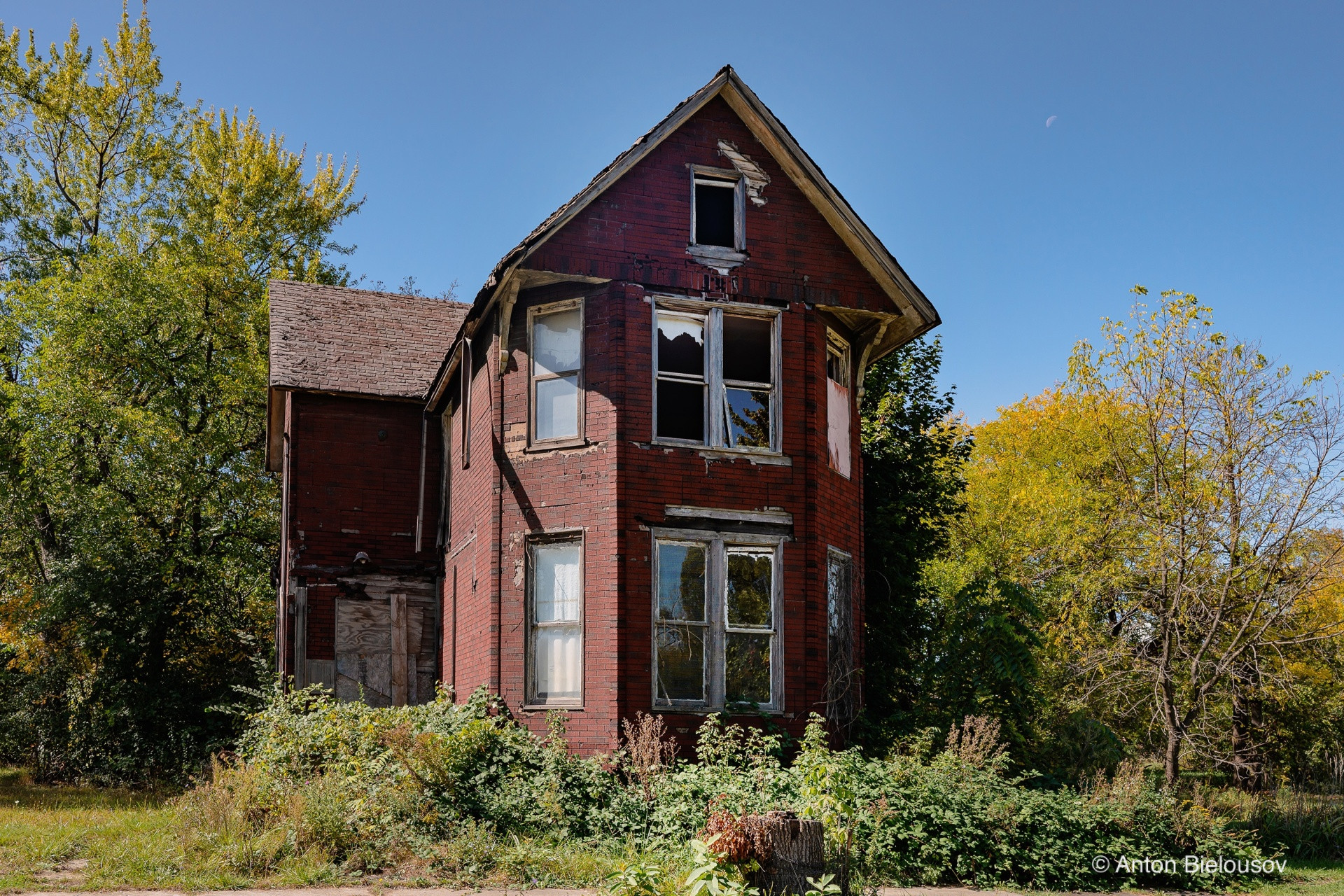
You never know who might move into an abandoned house next door.
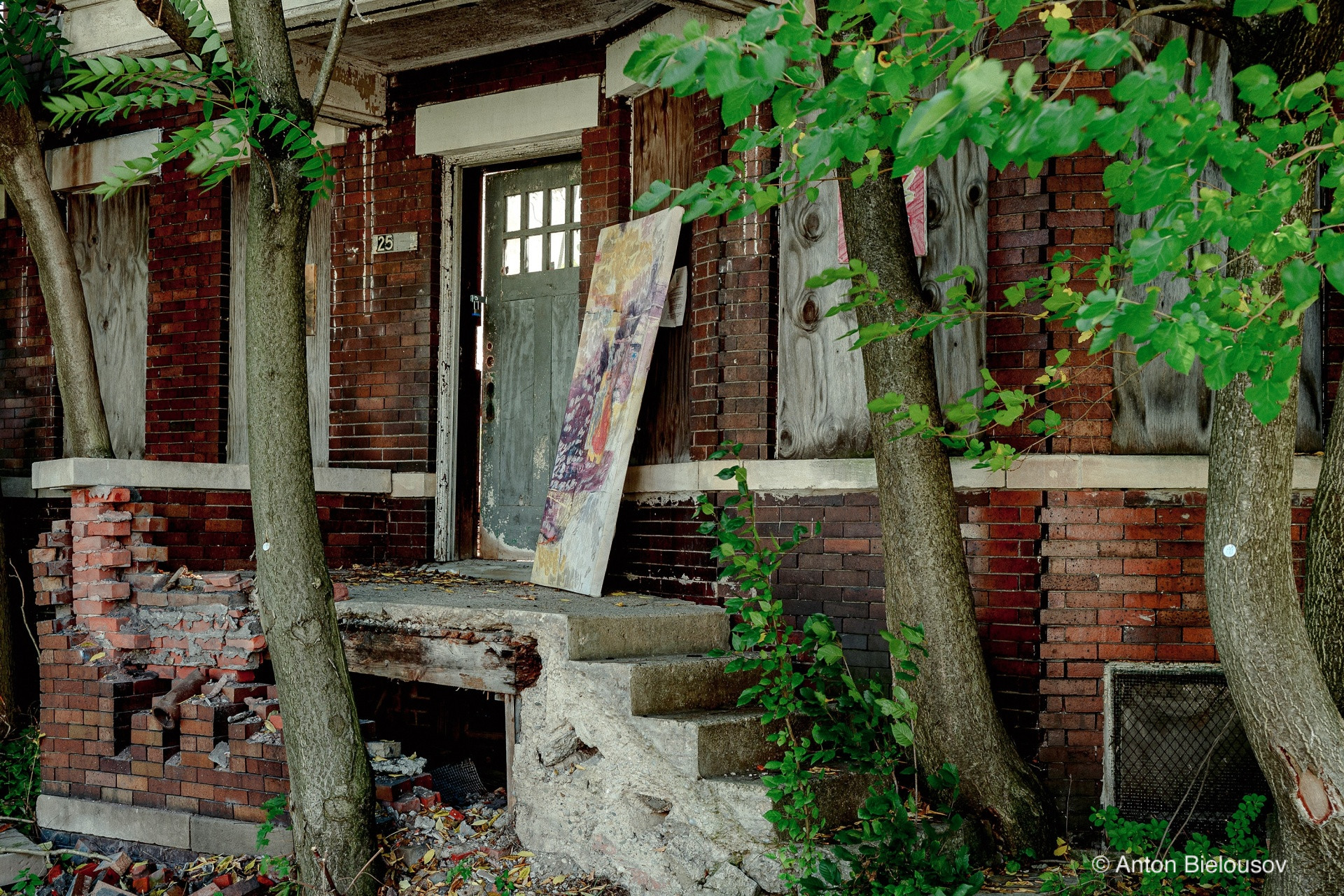

Not every house in the area is abandoned though. Look at the the mailbox: is packed with mail, it means someone’s either been gone for a bit or still pops in now and then.
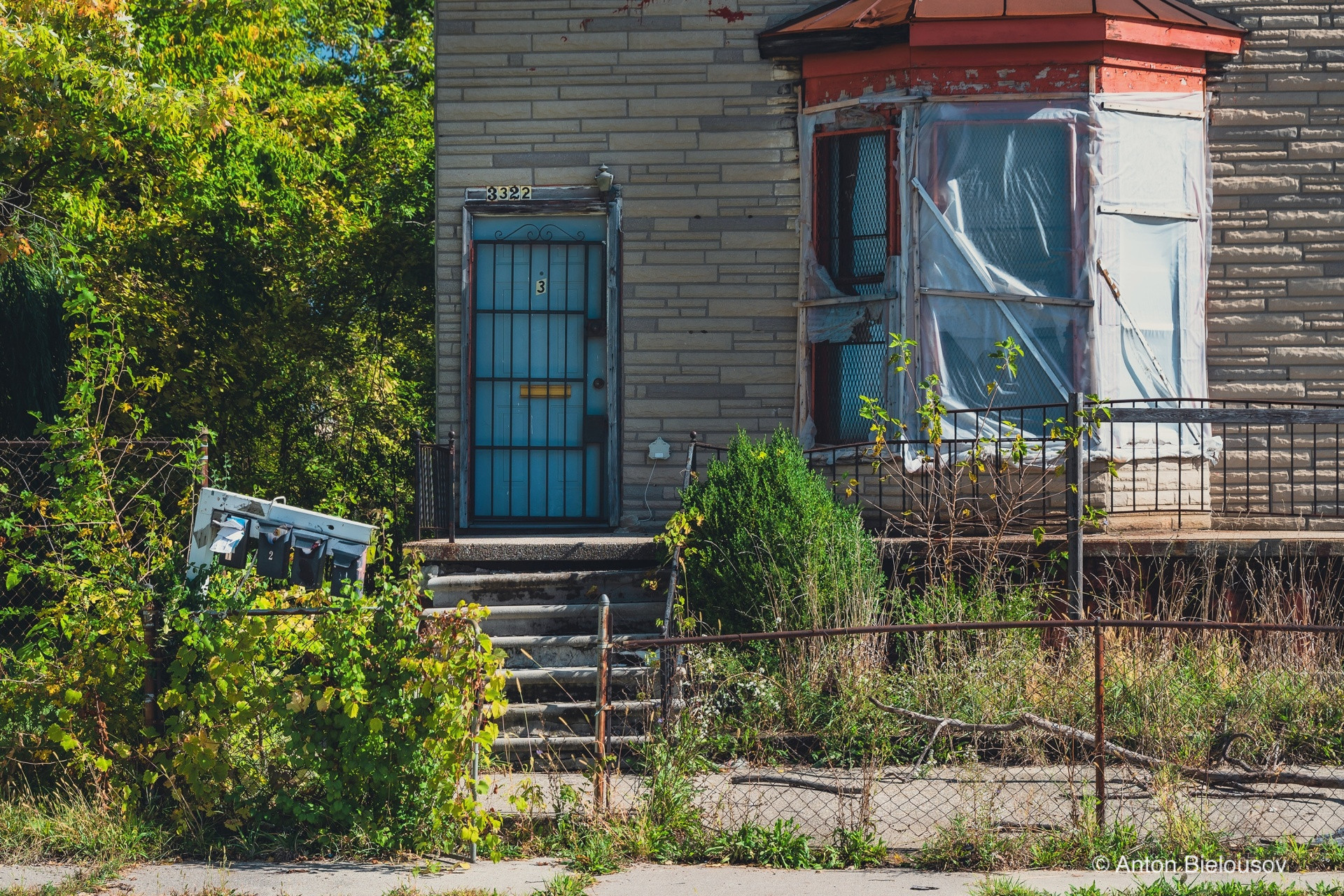
The easiest way to tell? Check the doors and windows—abandoned houses have them boarded up or sealed shut.
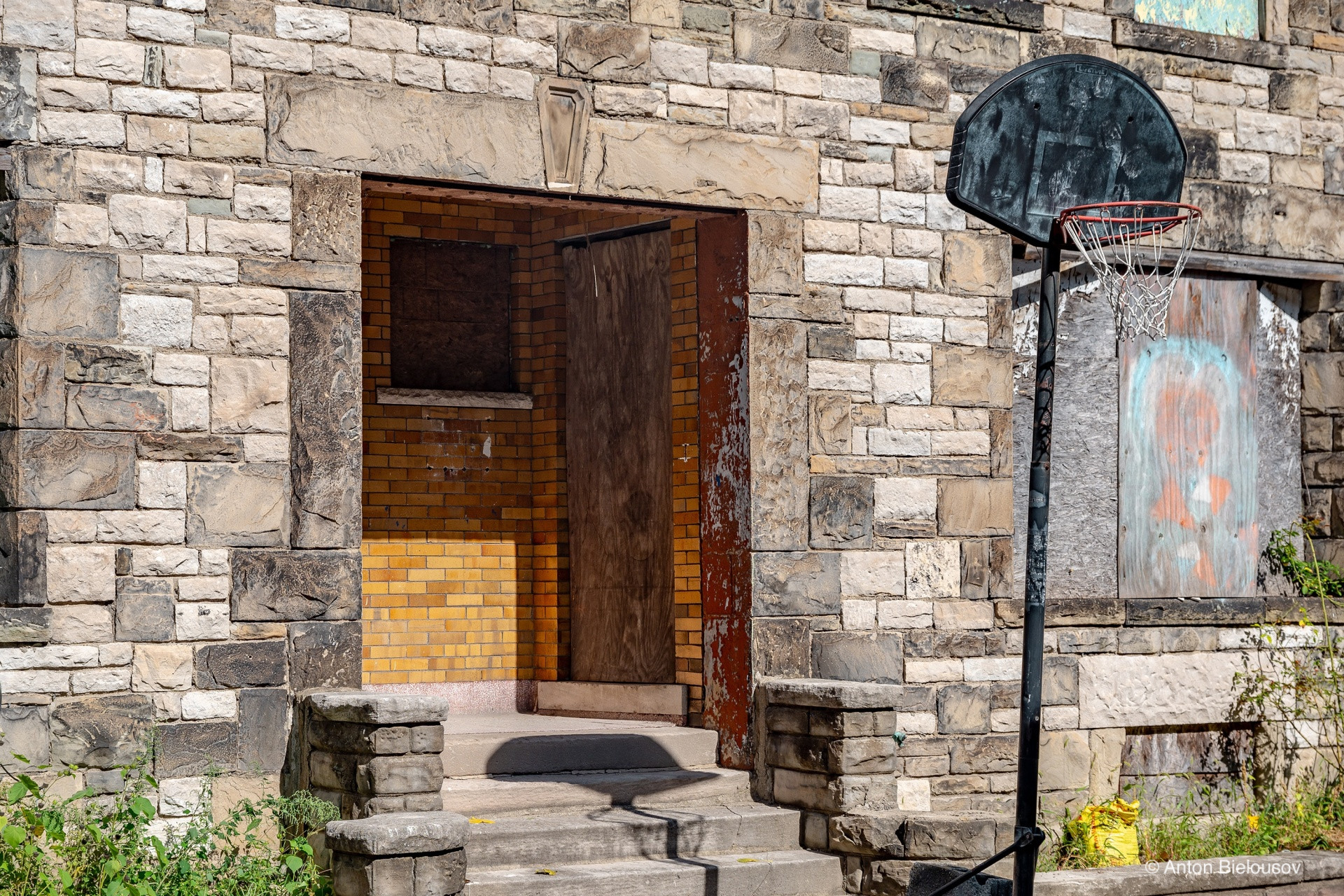
Check the doors and windows—abandoned houses have them boarded up or sealed shut.
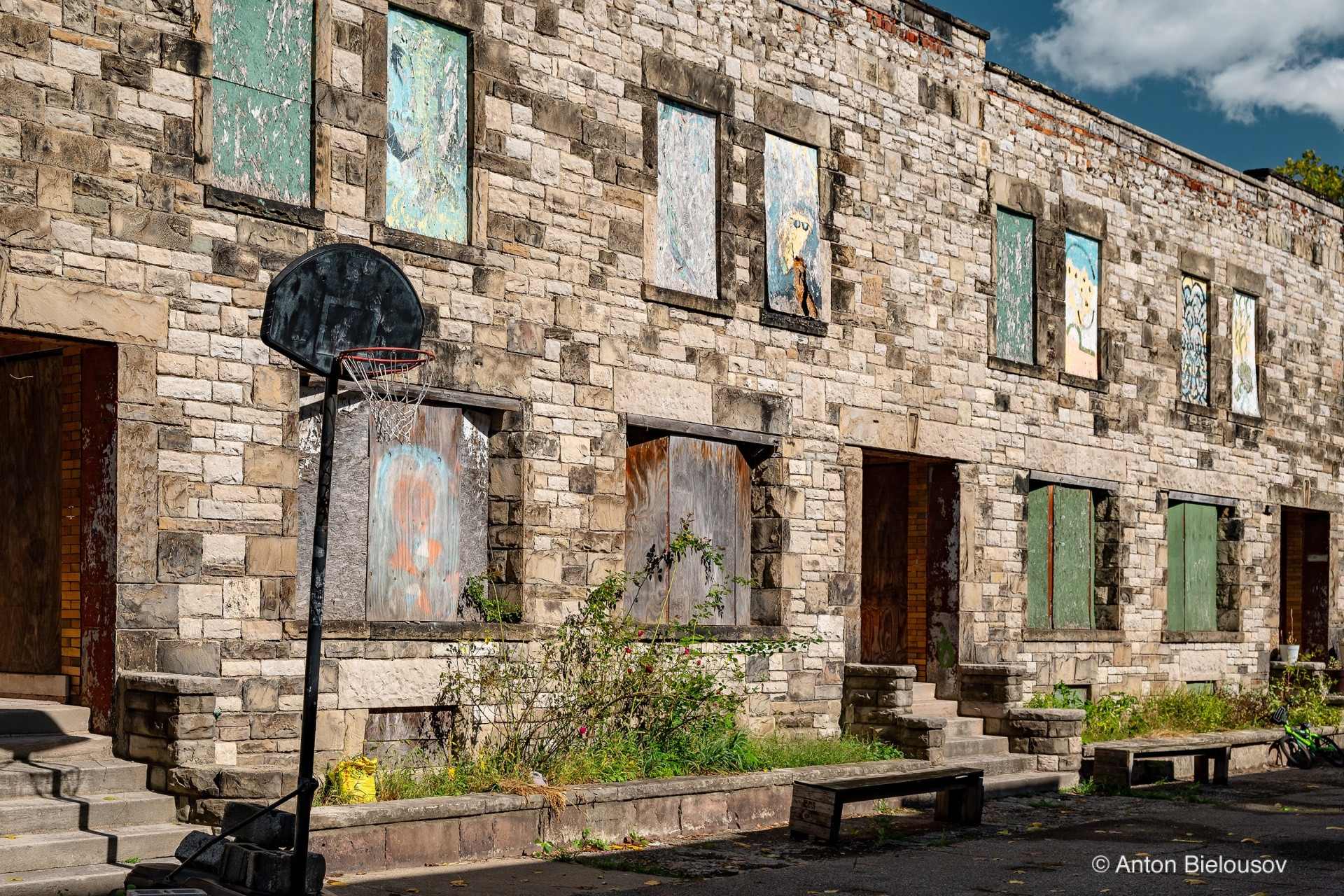
In the inhabited houses, the windows are still intact. Well, for the most part.
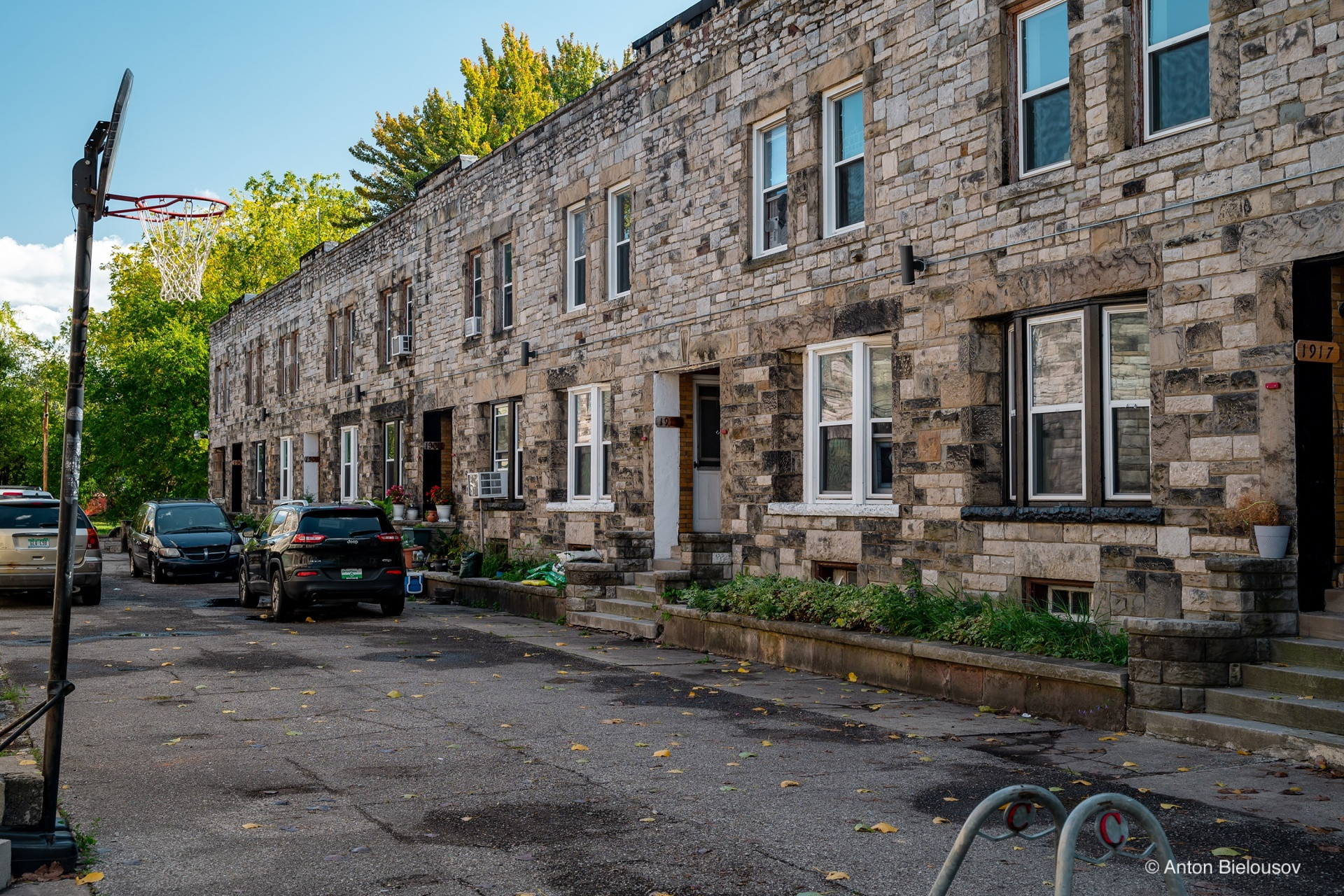
Often, you can even stumble upon a house where one half would be abandoned, while the other half is still occupied.
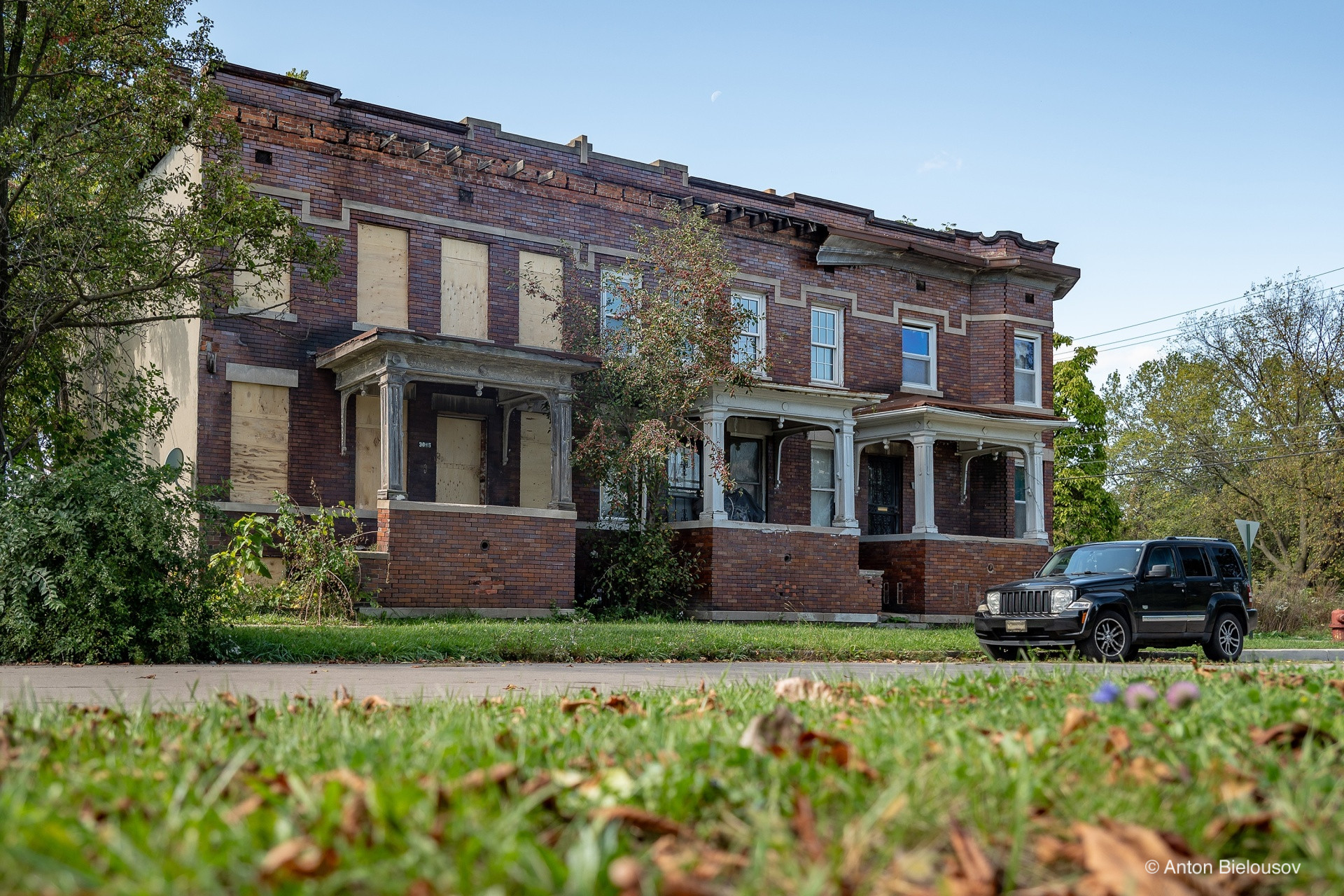
Then there are the houses where you can’t tell if anyone’s living there at all.
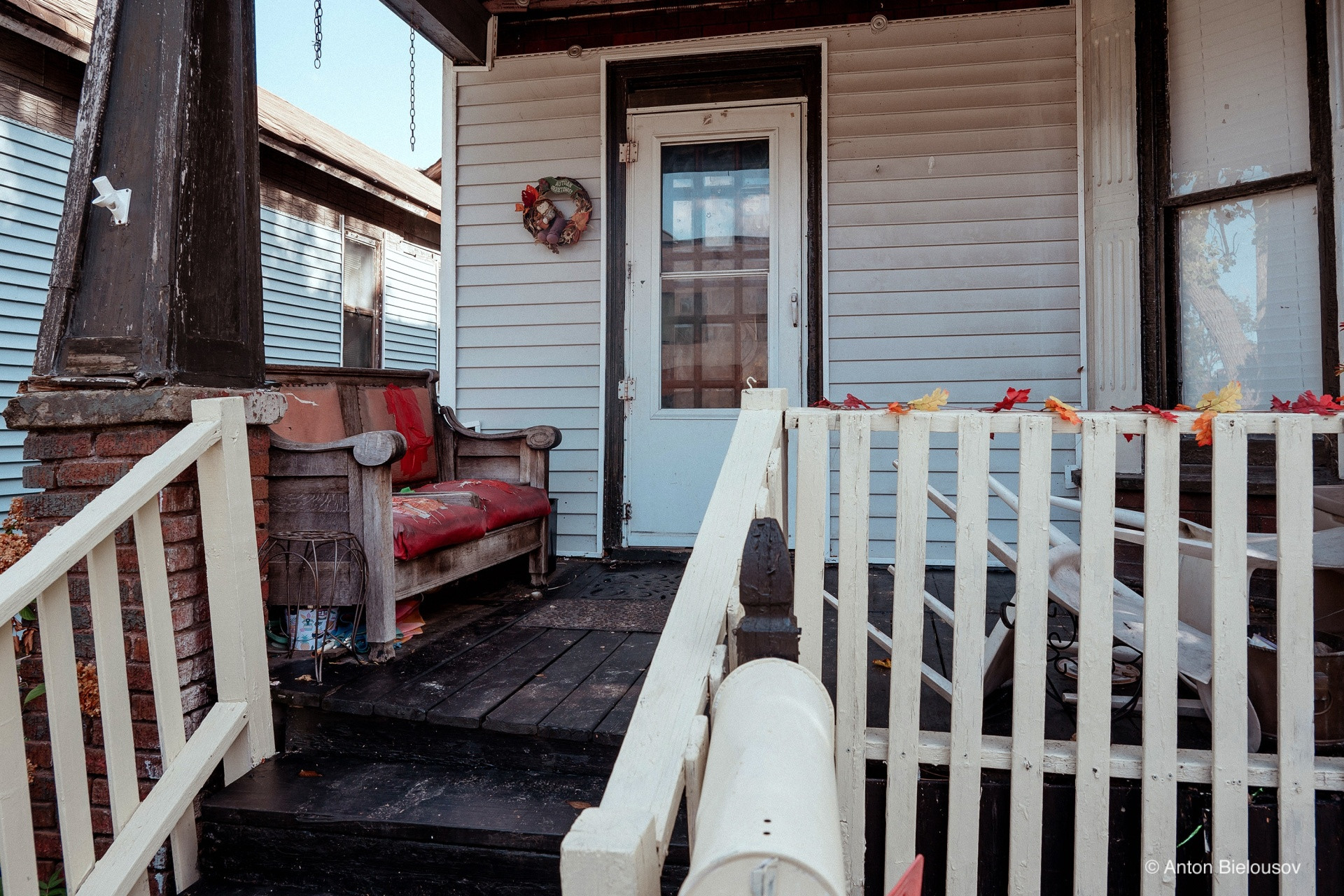
But one thing I cant tell you for certain—nearly every time, the owners were home on a Friday, smack in the middle of the workday. It’s as if they’d decided that was the perfect time to kick back, relax, and watch the world fall apart.
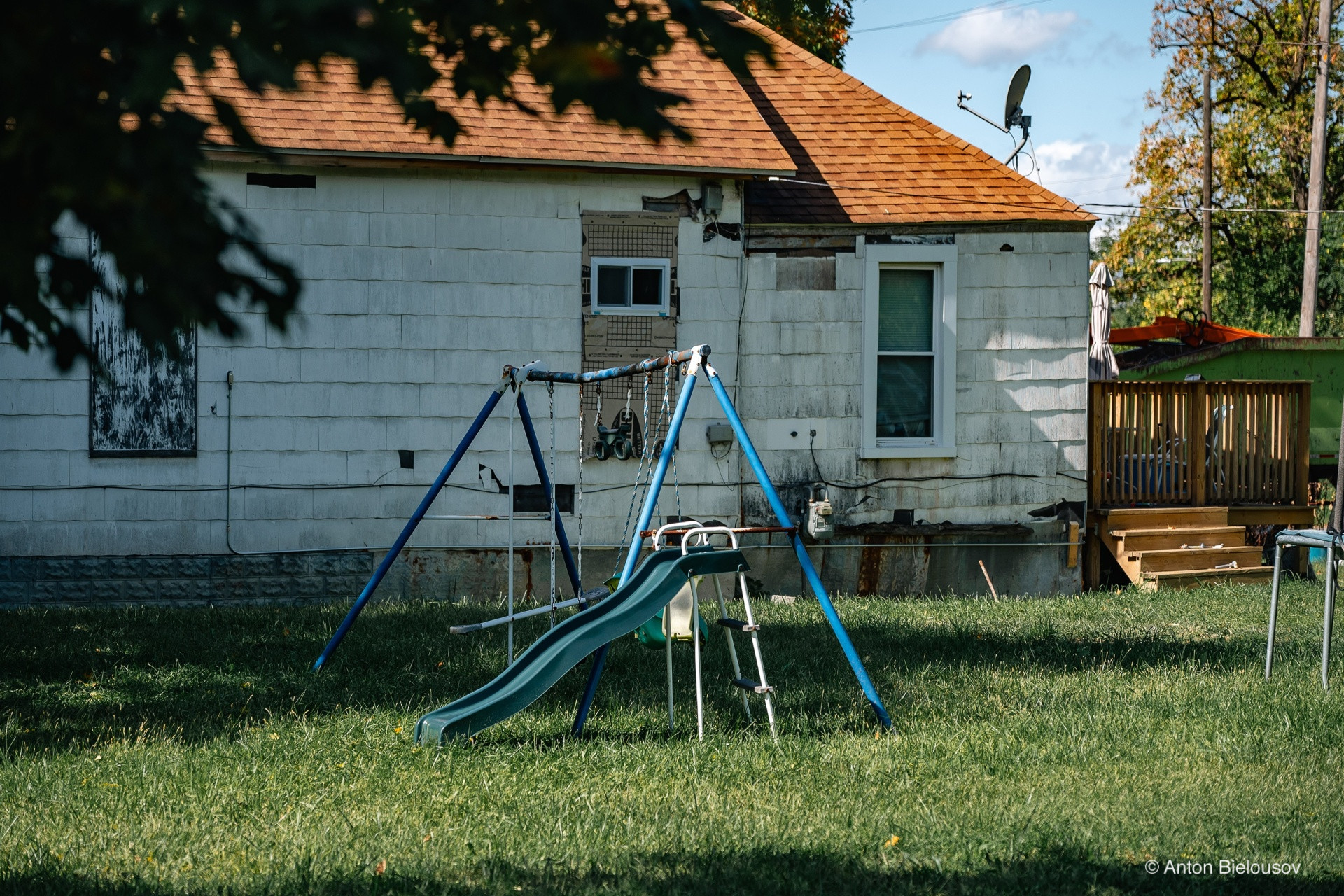
One more sign of being occupied is that there must at least one pitbull on the property. It’s like a rule—no house is complete without one of these snarling, muscle-bound guardians of the ruin. You’d better hope it’s not in a particularly bad mood when you walk by.
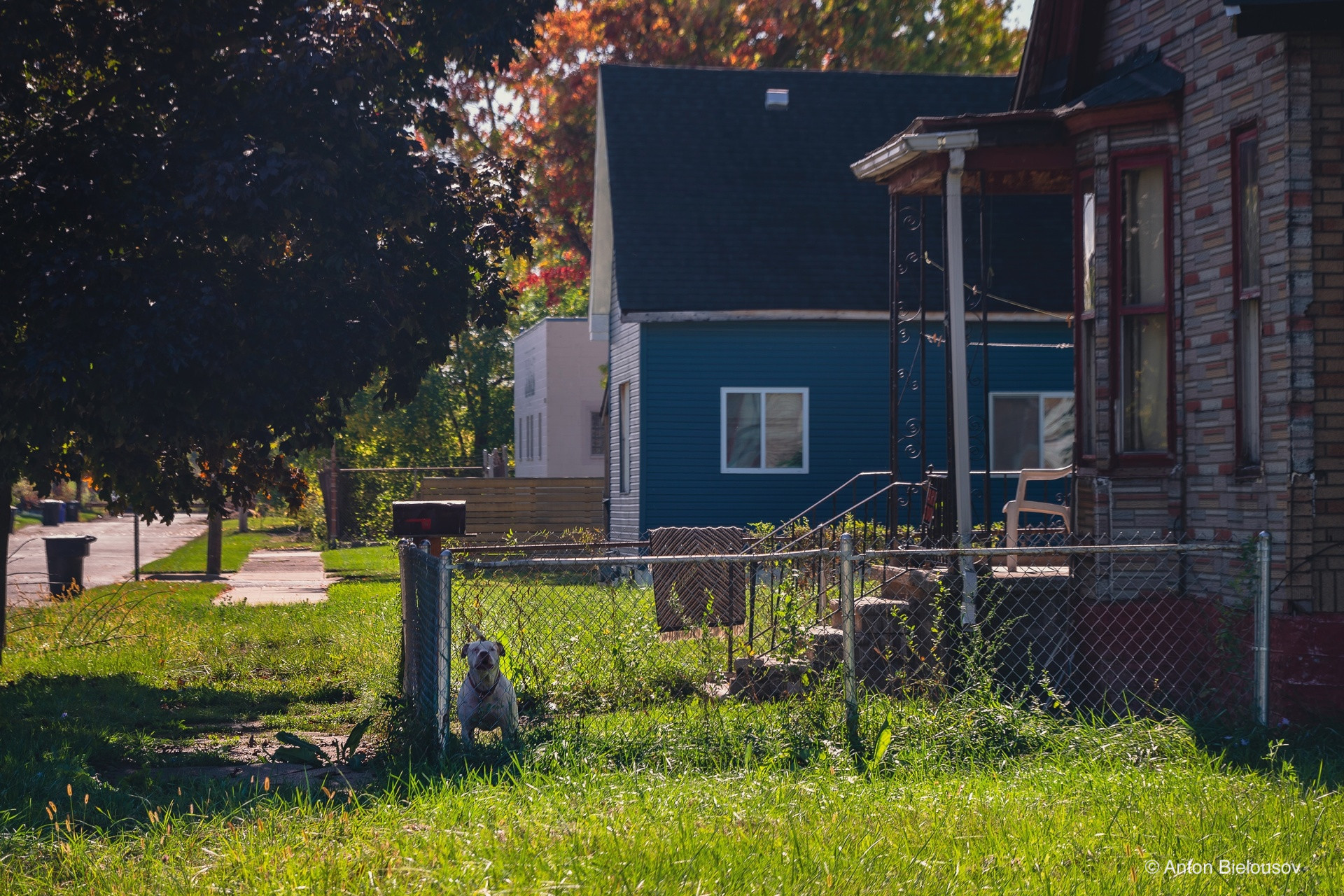
It all started here, on these very couple of blocks of Corktown (between Rosa Park (12th), Trumbull, Grand River, and Michigan Ave), where the wave of robberies, vandalism, and violence began back in 1967. It’s as if the entire city’s collapse started with a spark in this area, setting the stage for chaos.
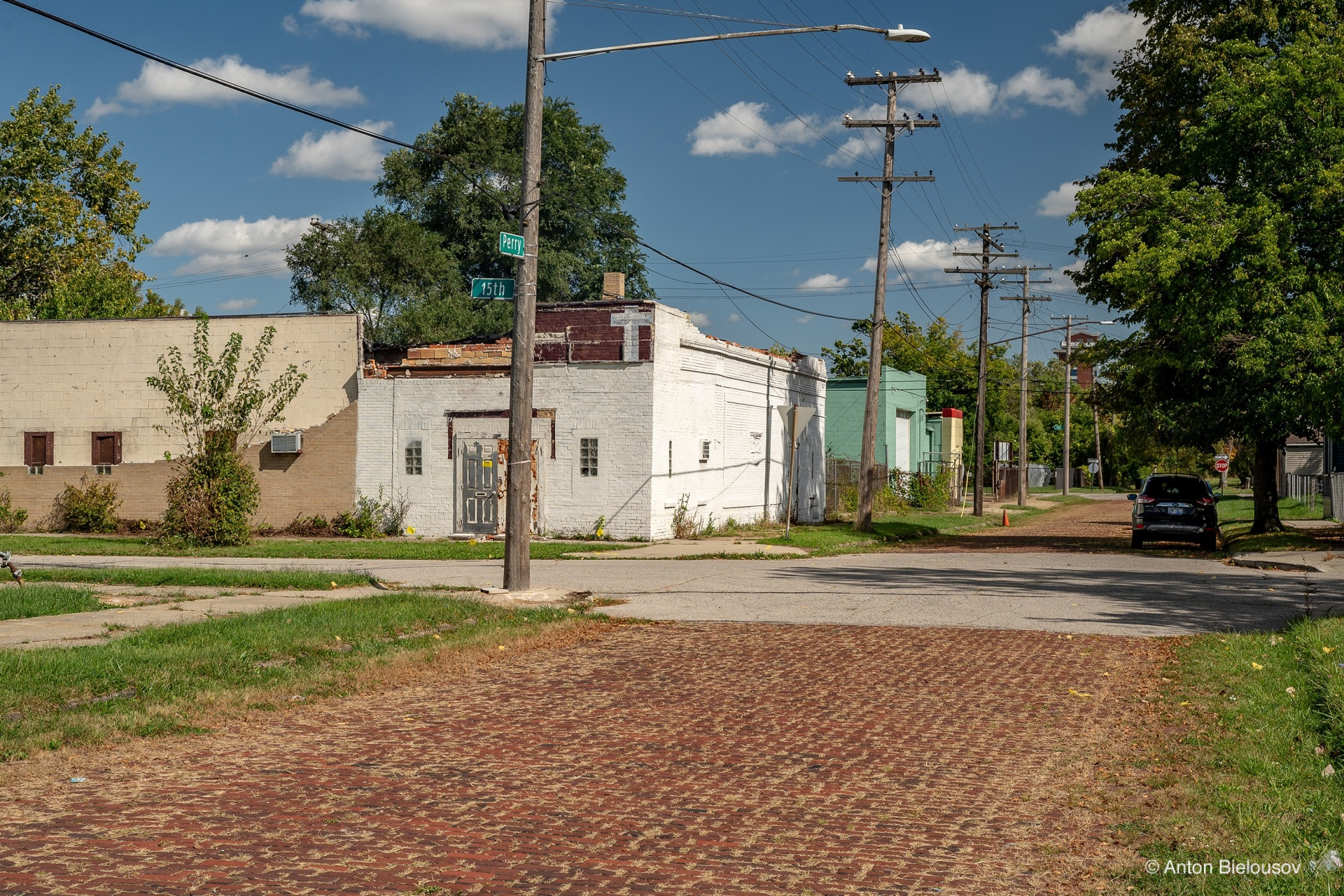
Right at the heart of this neighbourhood is one of the only two brick paved streets in the entire city—Perry St. (the other one, of course, is the Michigan Ave.), and it has been preserved in the decaying state since the notorious events.
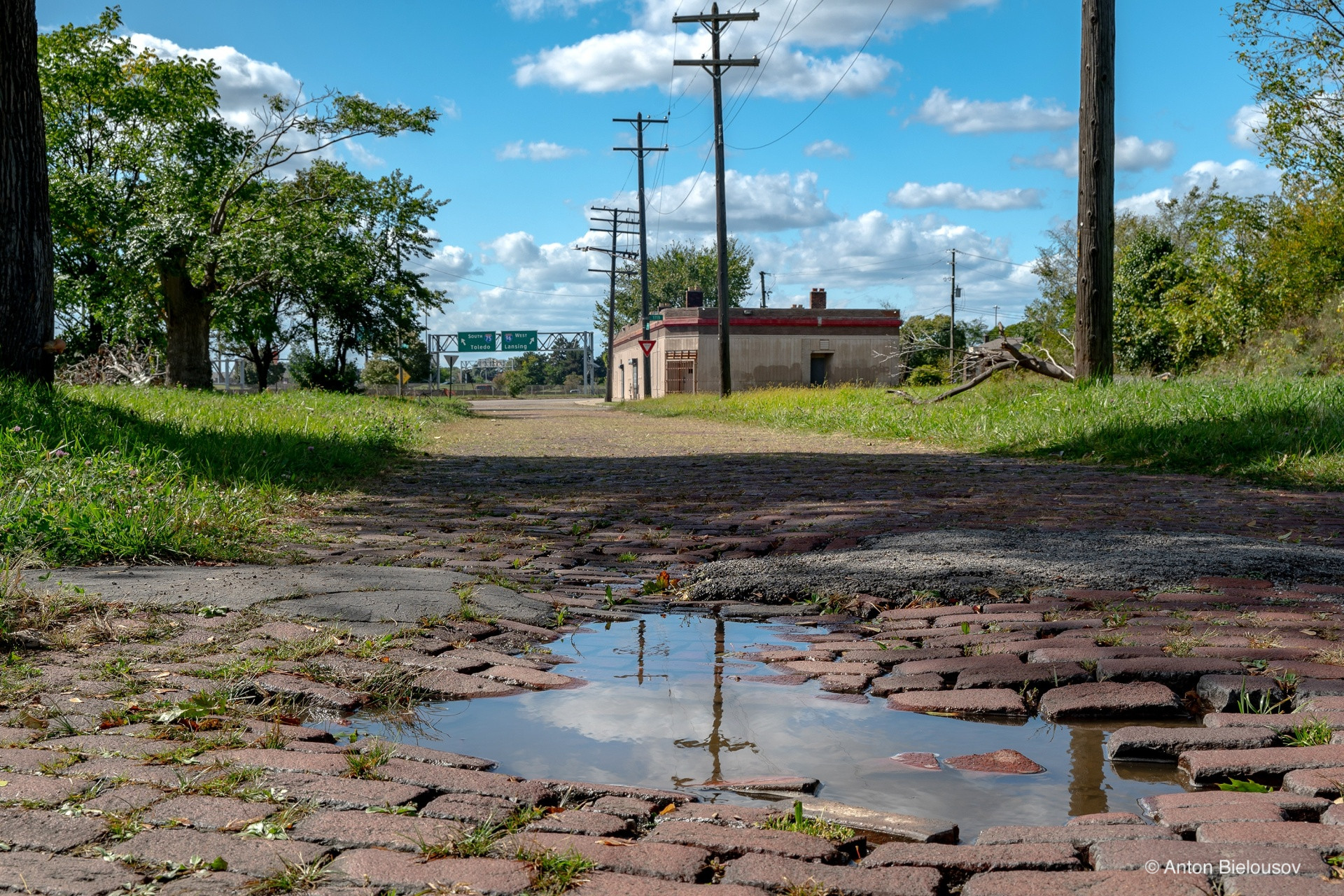
Abandoned stores.
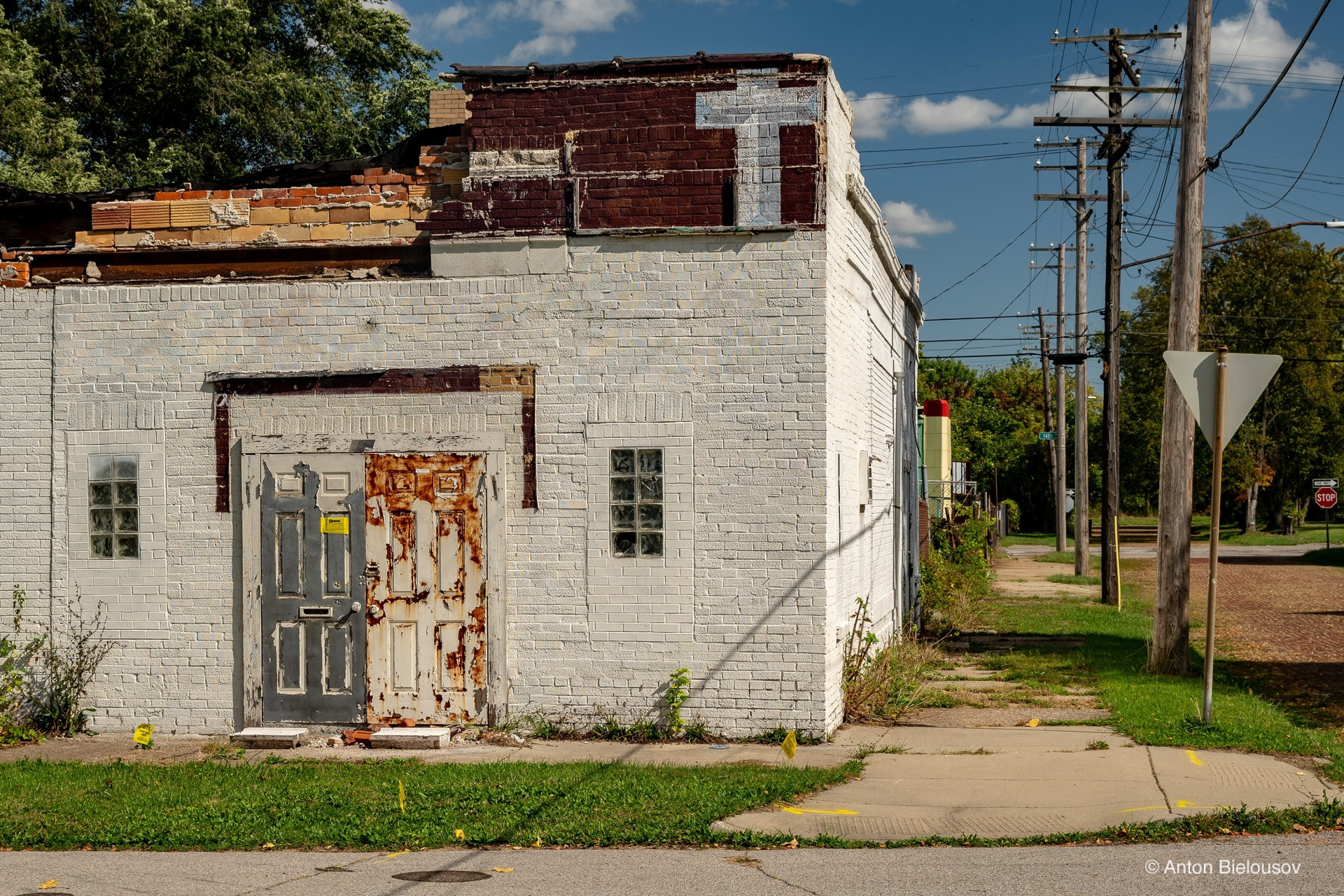
Liquoir and lottery.
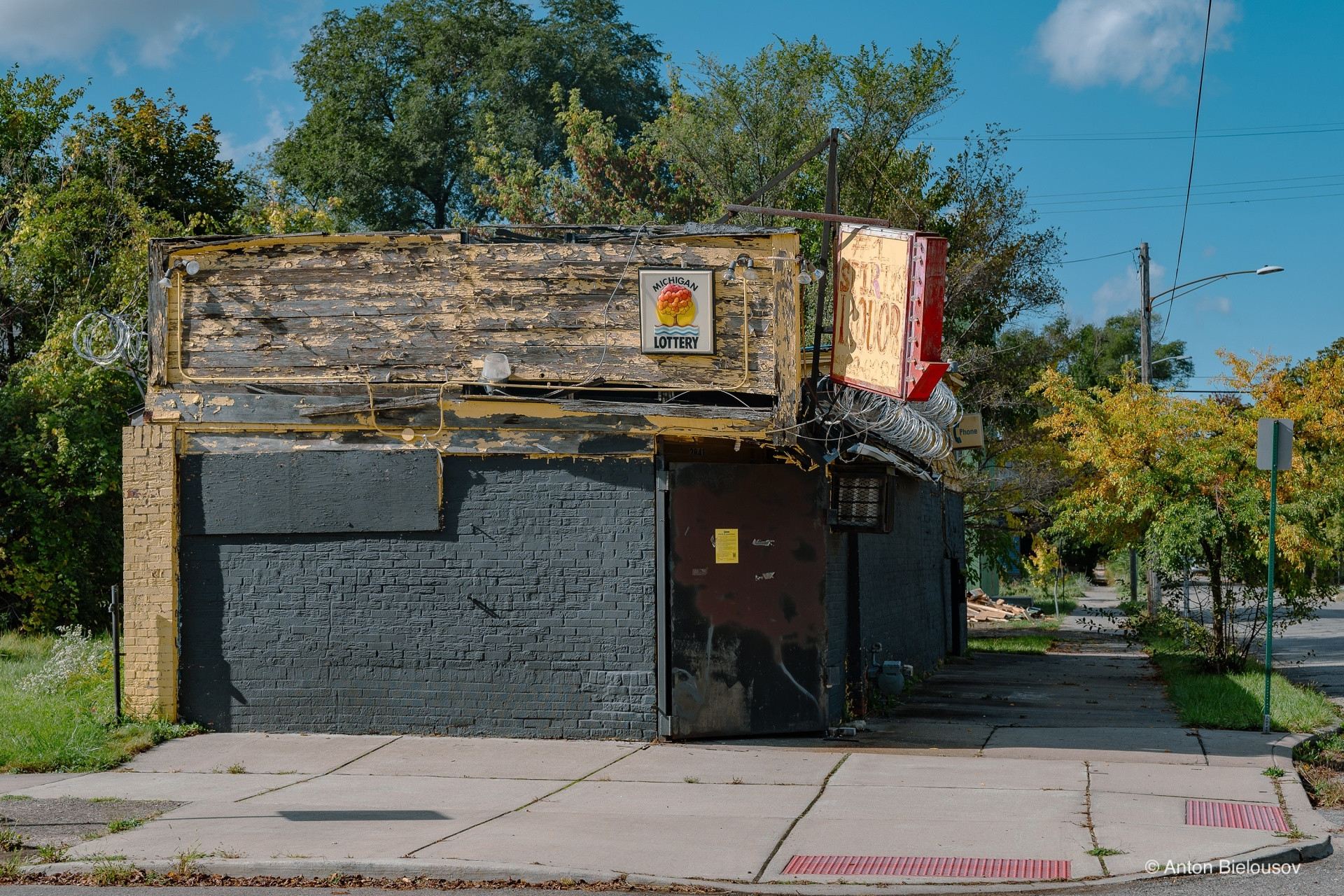
Detroiters are obsessed with buying lottery tickets. In every store I walked into, without fail, someone in front of me was buying a ticket and enthusiastically discussing their chances and hoping for a miracle, despite knowing the odds are stacked against them.
This is where the exit from the Matrix was.
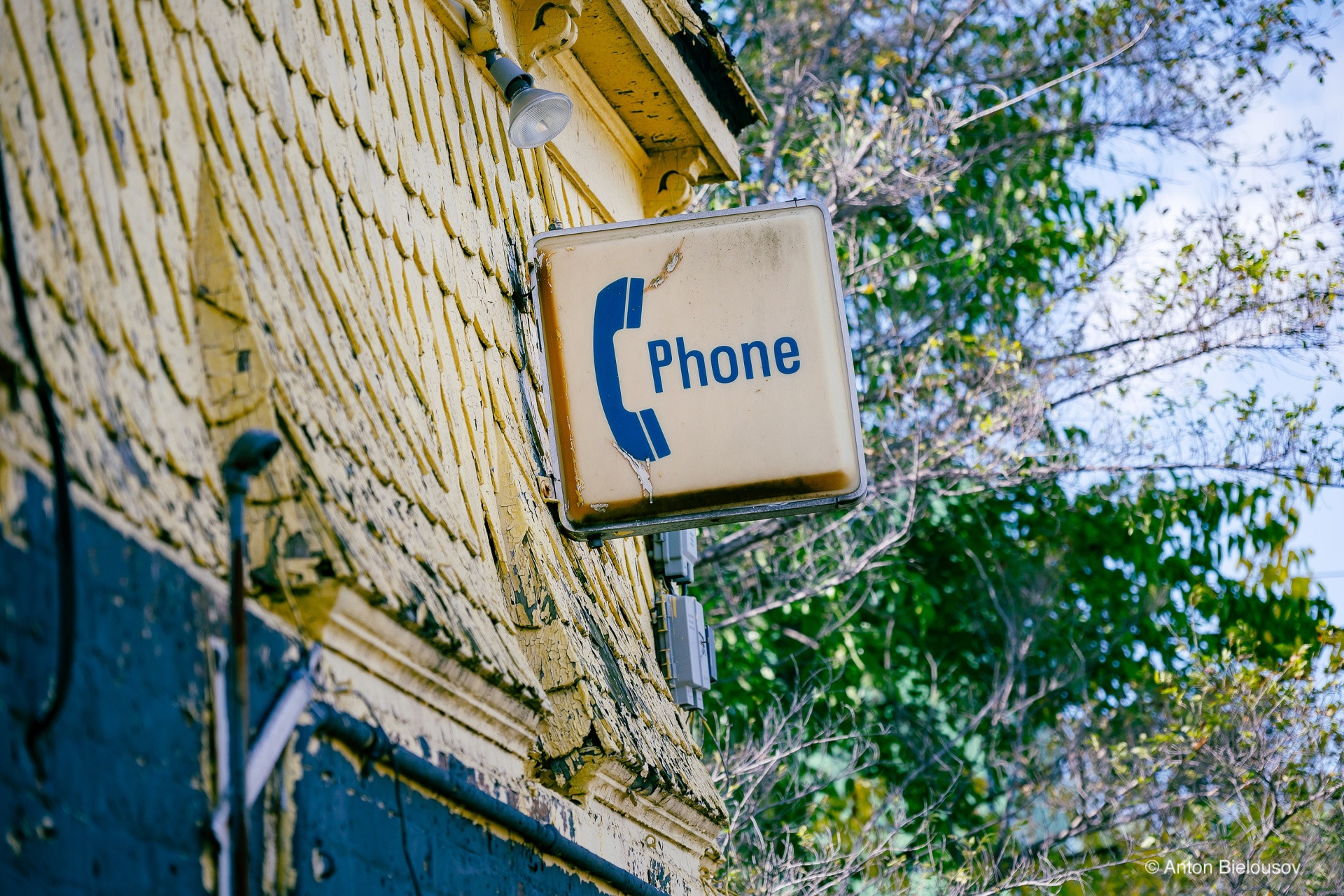
Some boarded up churches.
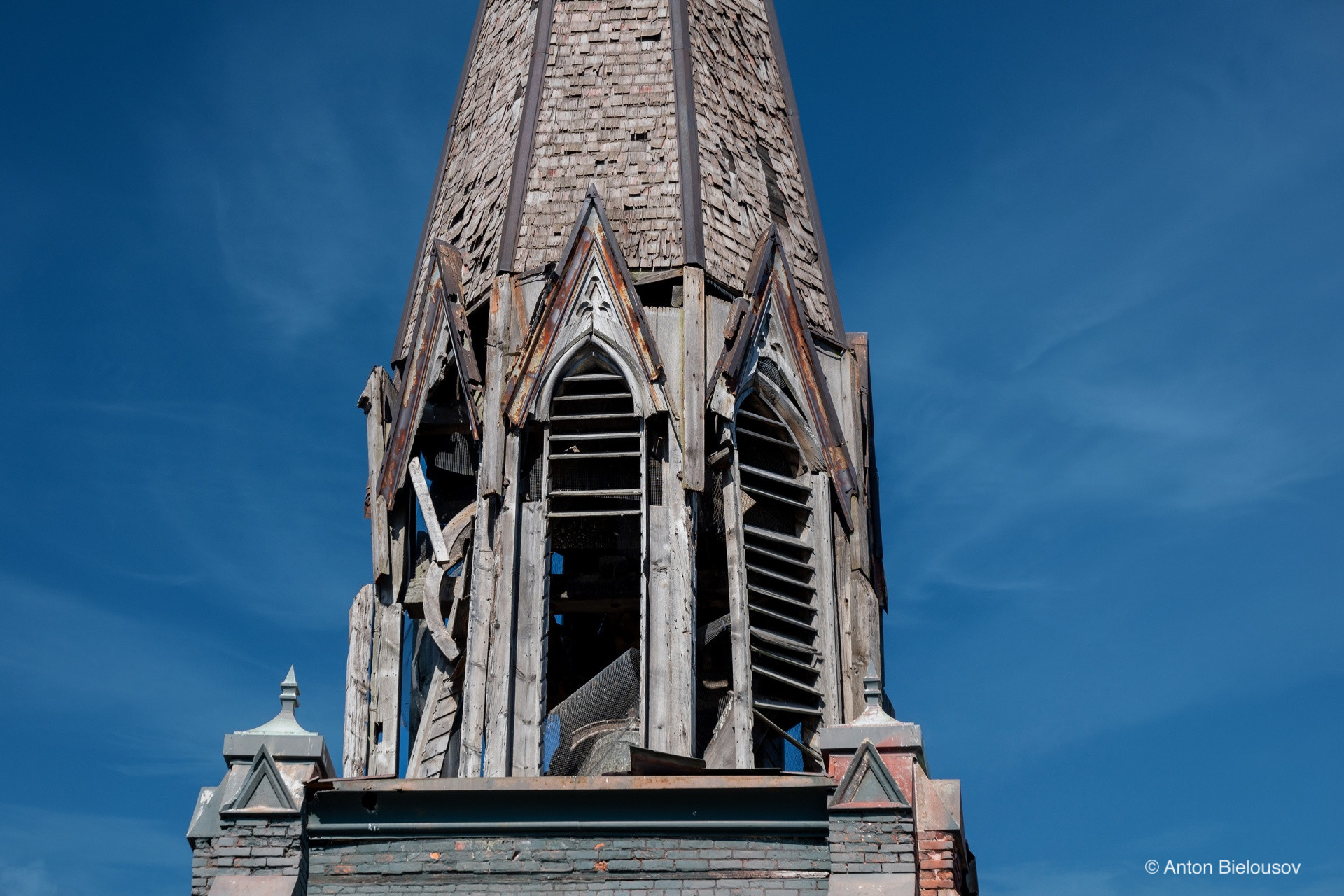
There was roughly a dozen of them, but the number is declining as peaople either return to them or level them down to the ground.
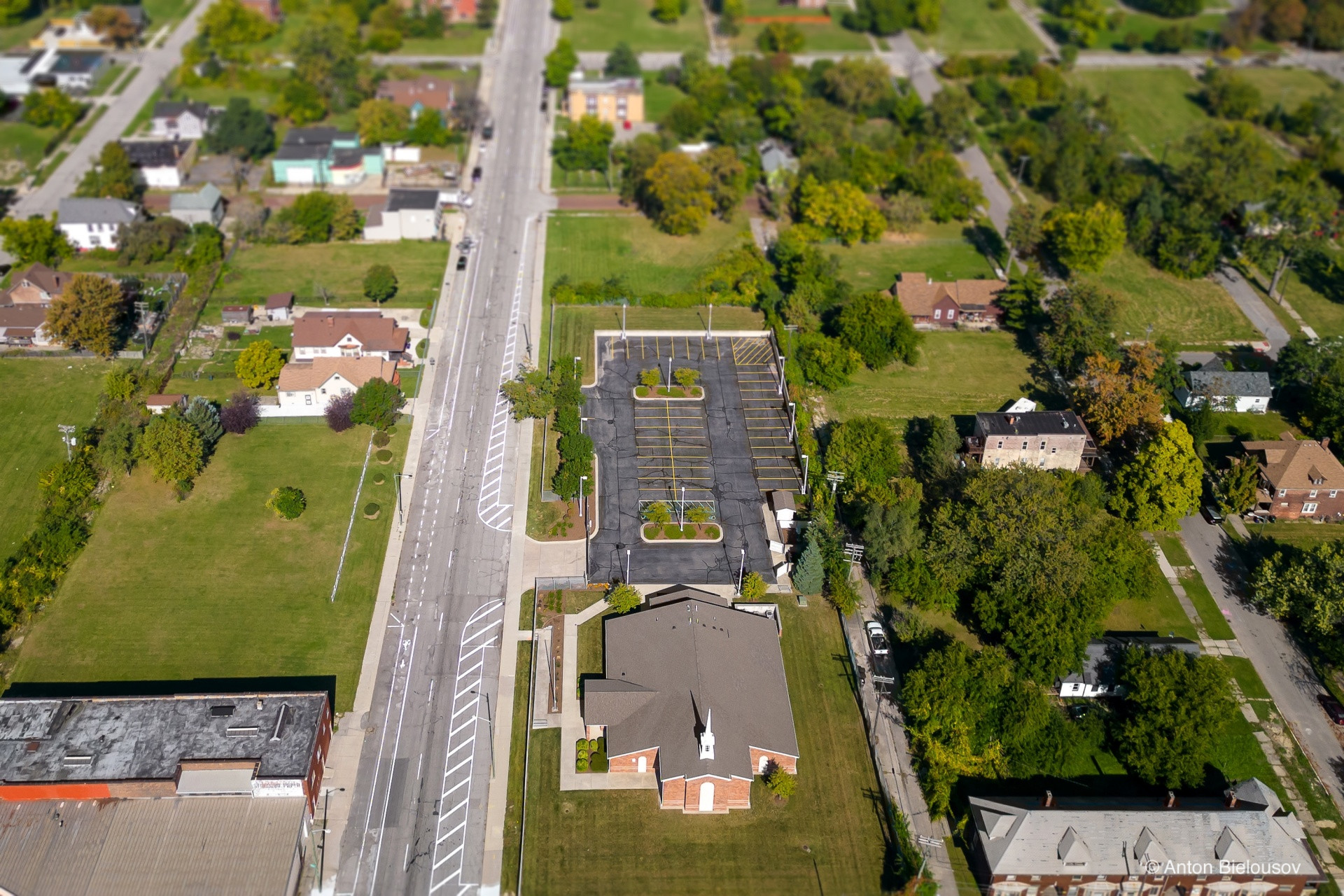
Abandoned auto repair shops where you’d expect to see a mechanic from the 50s waiting for a customer who’ll never show.
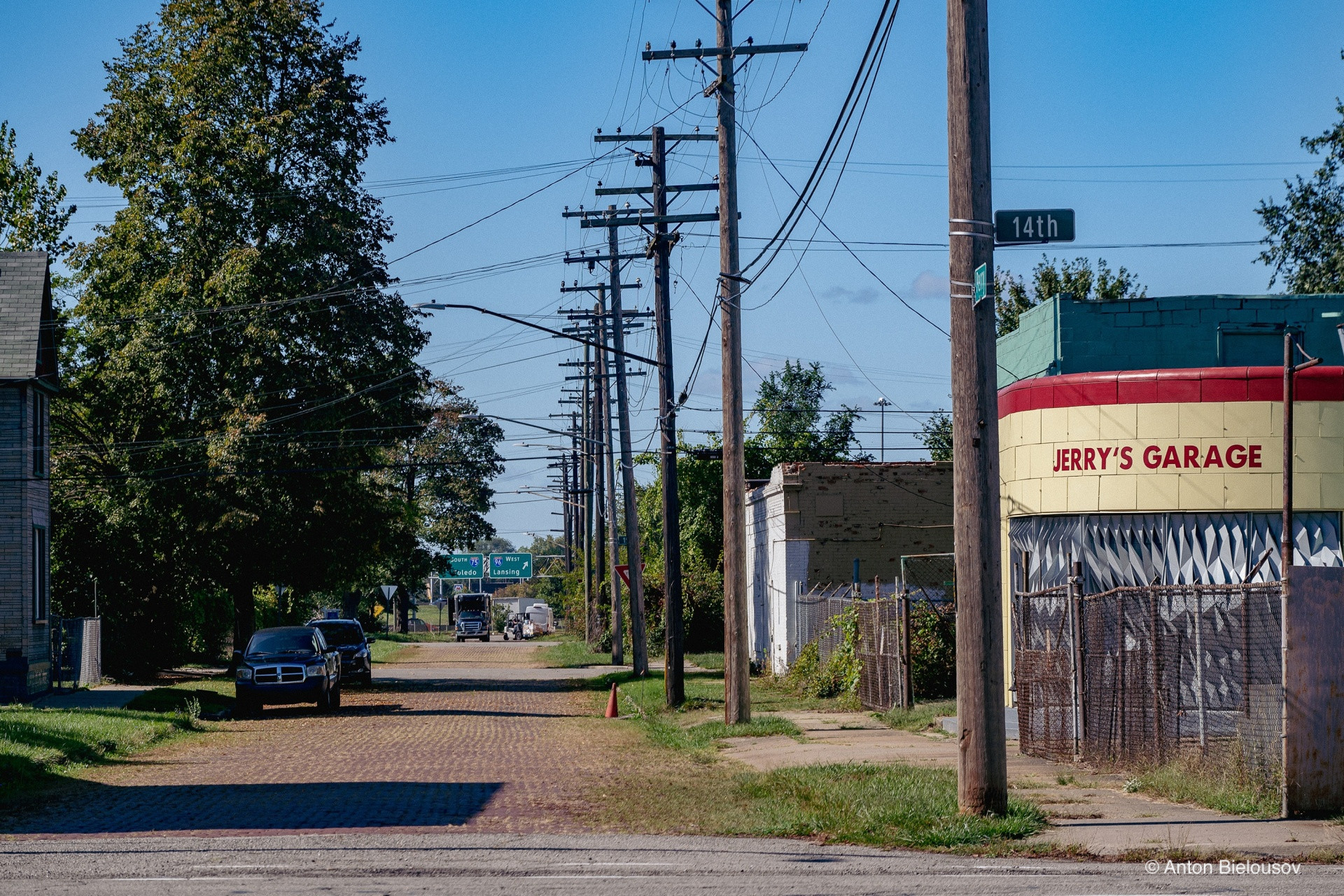
The post-apocalyptic wasteland vibes were so strong, I couldn’t resist popping the Fallout soundtrack in my headphones while wondering through the empty streets. The illusion of being the last survivor in a world long forgotten as so easily achievable here in Corktown.
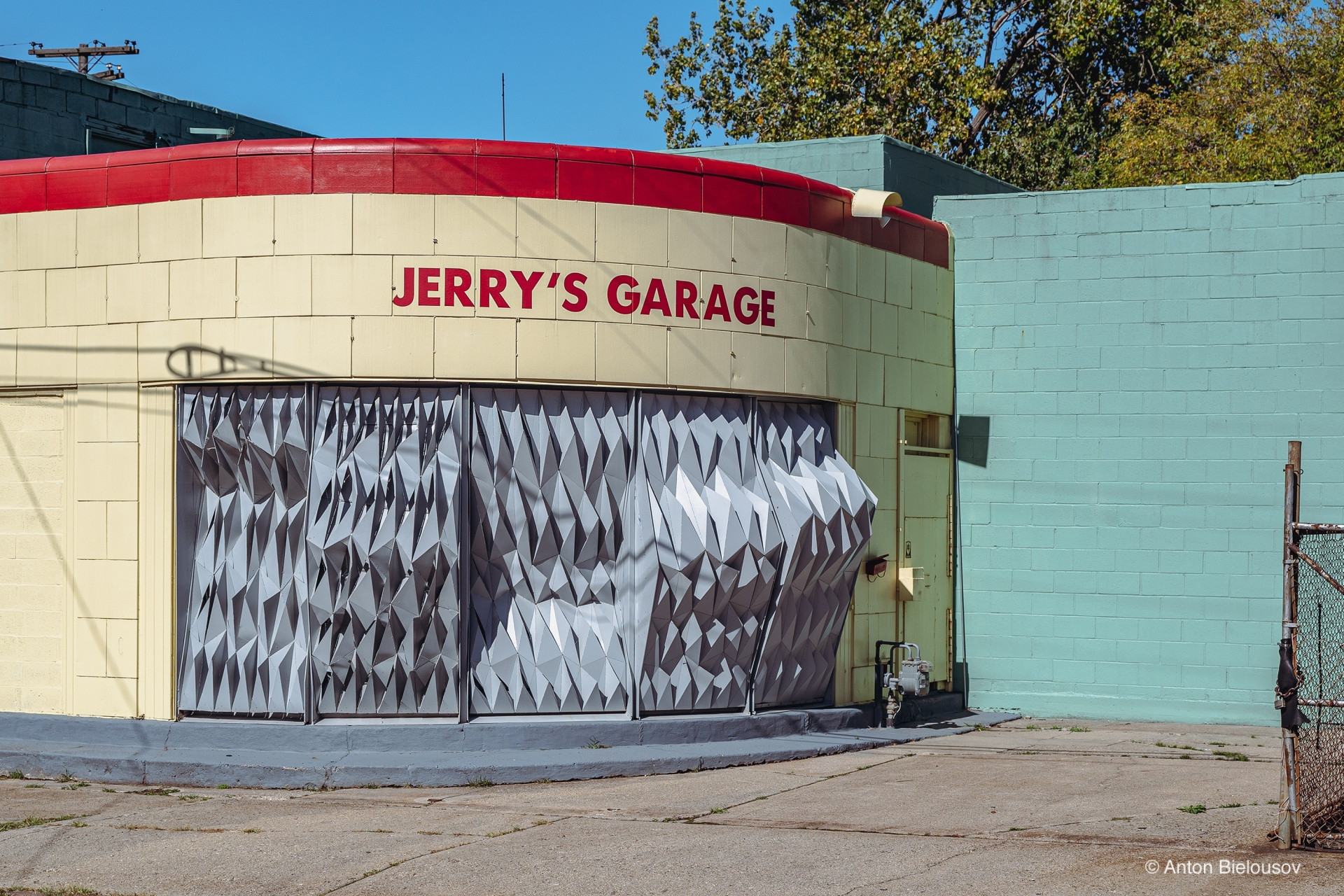
Empty buildings, rusted fences, sidewalks and parking lots overtaken by grass and bushes, rounded corners of architecture straight out of 60s Art Deco style. It was like something straight off the screen, or rather, as if the creators of the game were inspired by Detroit itself.
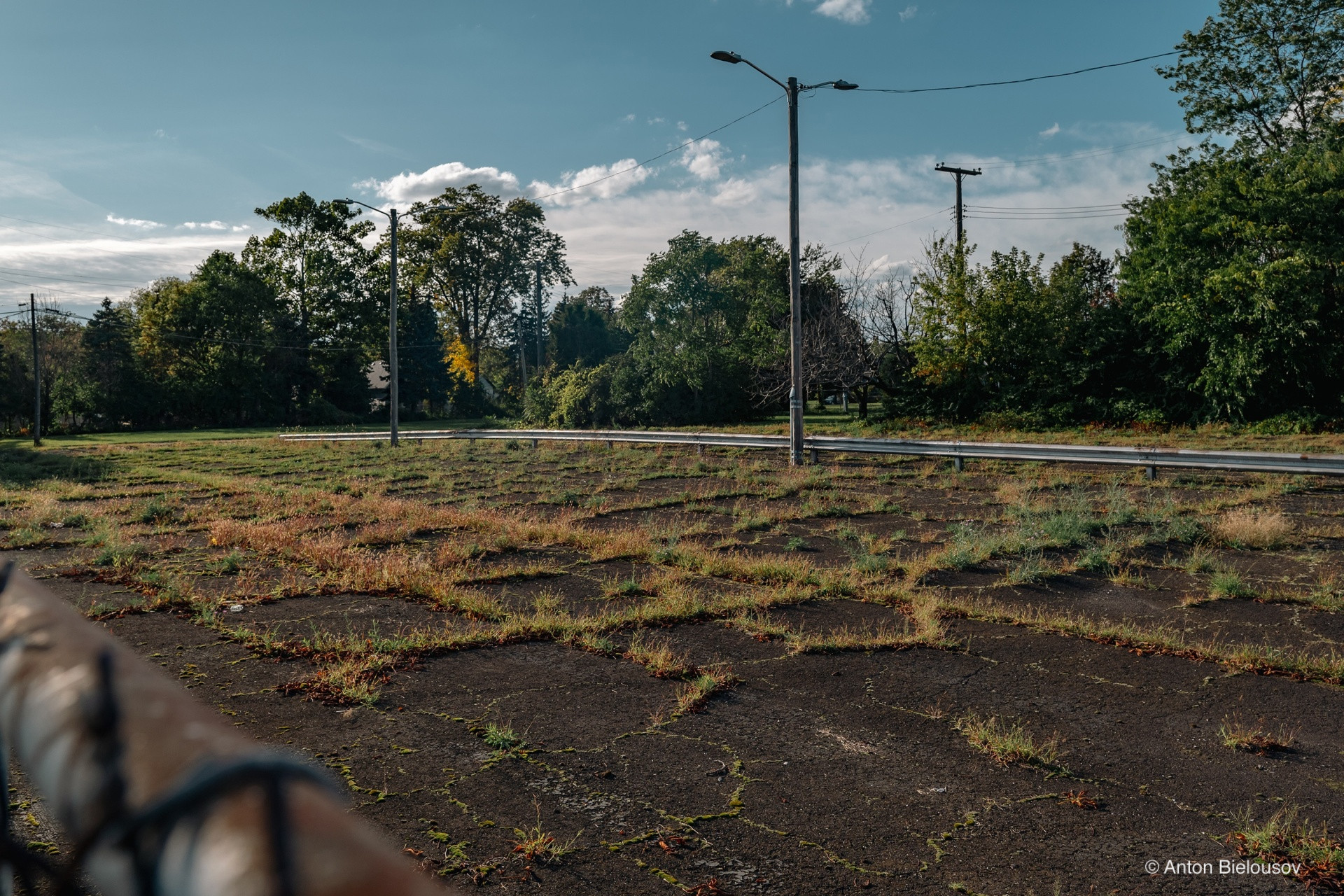
Perhaps the only thing missing from all this was a nuclear fallout shelter.
But wait—scratch that, it’s actually right here, smack in the middle of the district. Because, of course, in a place like this, even the glooming apocalypse seems to have had a hand in shaping the city.
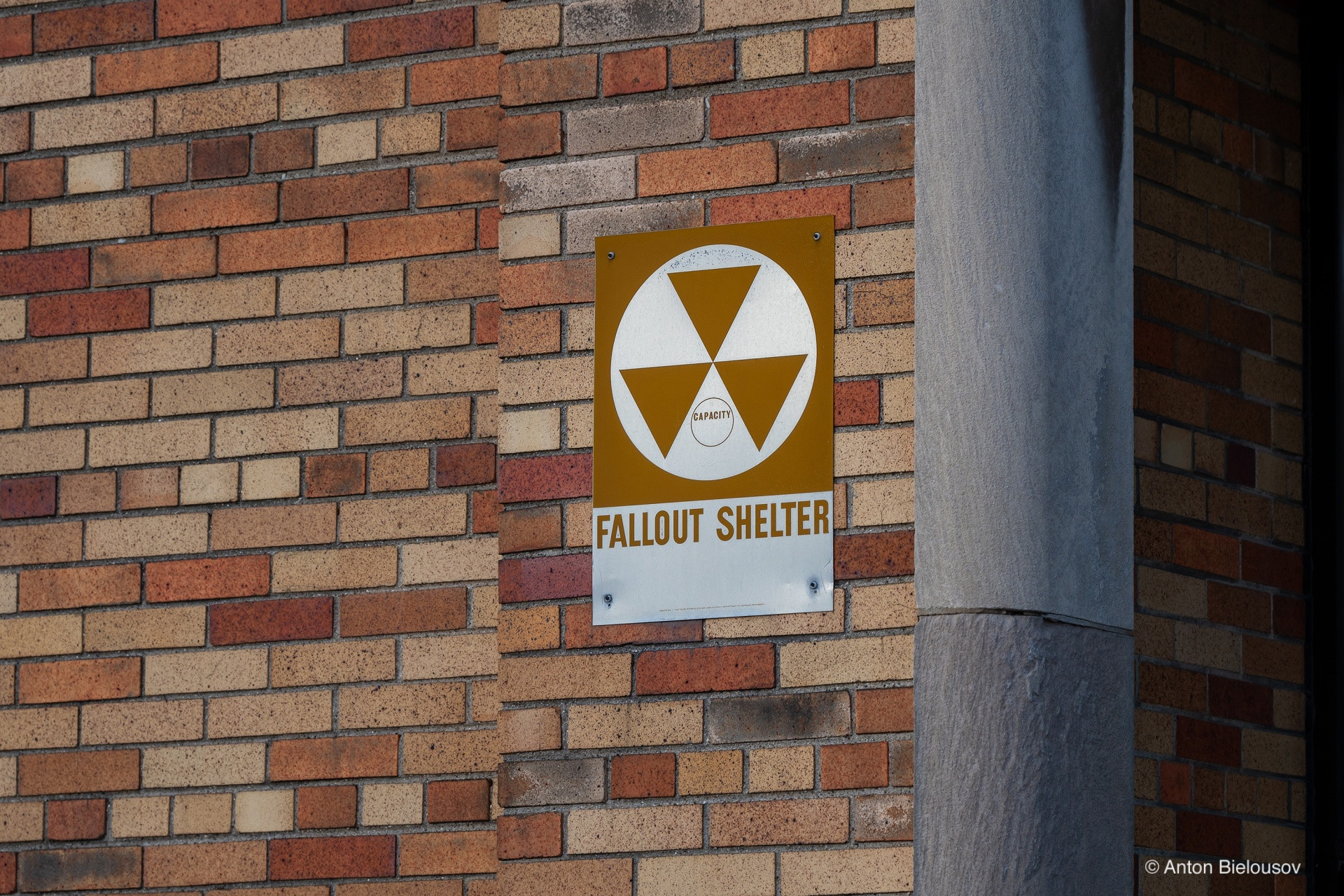
Abandoned factories and plants at every turn—some of them were probably around in Henry Ford’s day. Not that long ago, they were the perfect hideouts for gangs.

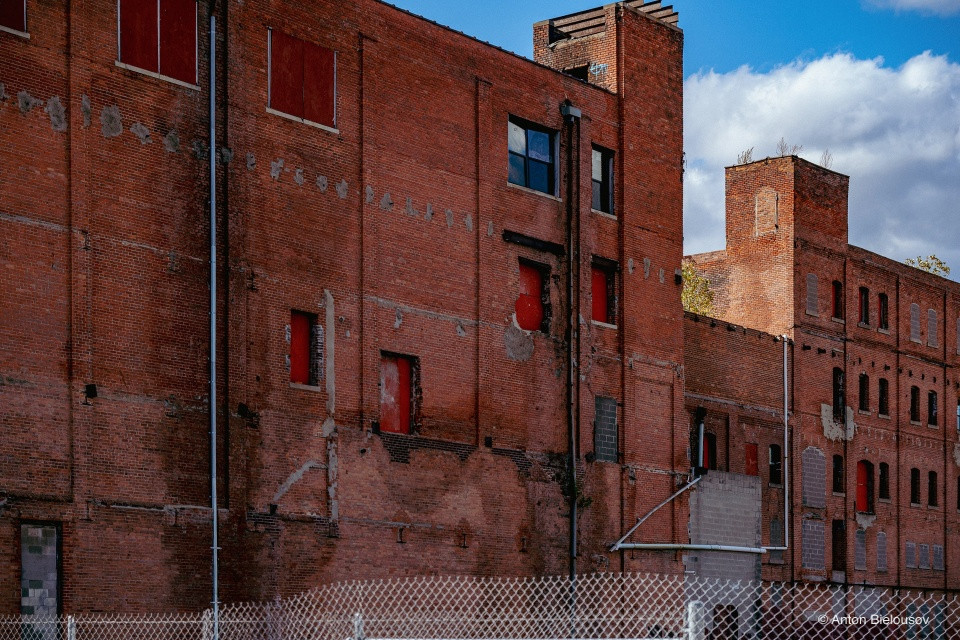
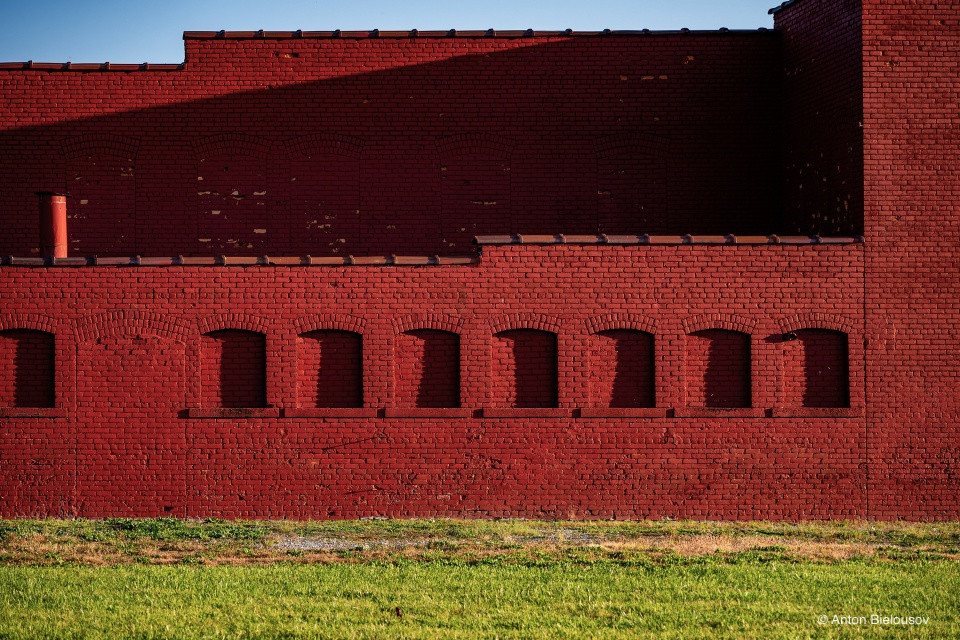
Abandoned warehouses.

That awkward moment when the antique shop itself becomes the antique.
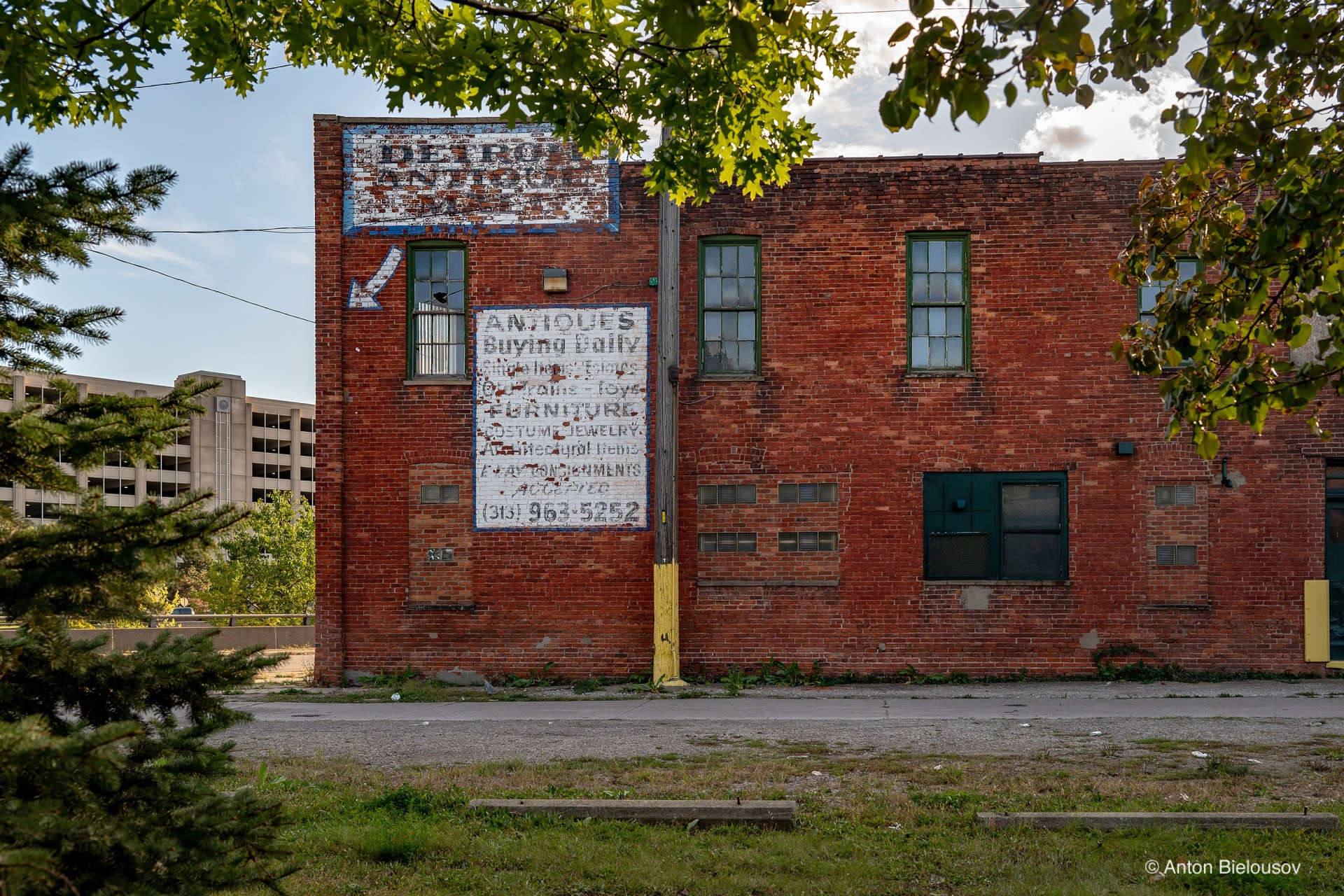
An abandoned variety store.
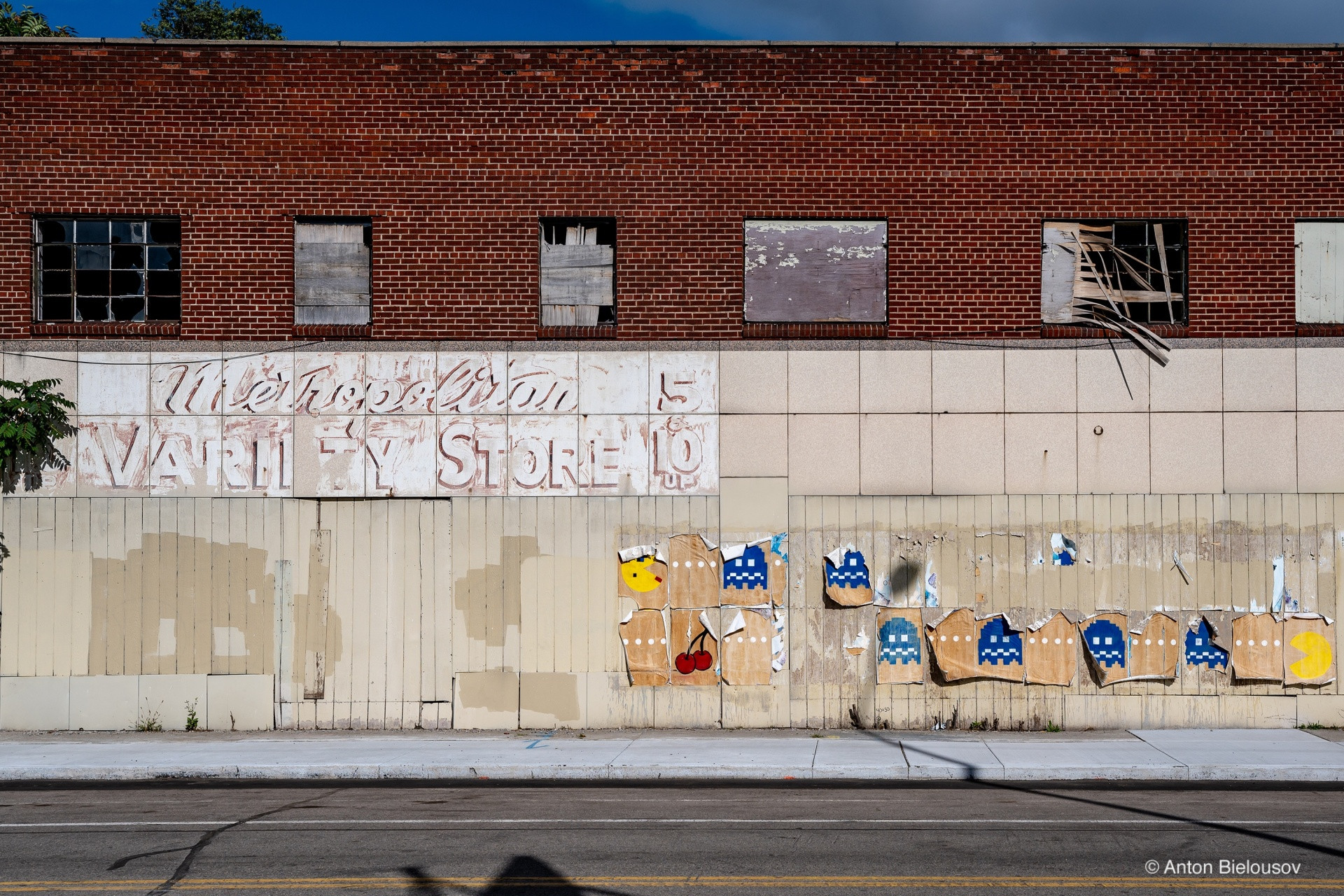
Even Packman ain’t forever.

And yet, the beautiful—that remains eternal. It just clings on.
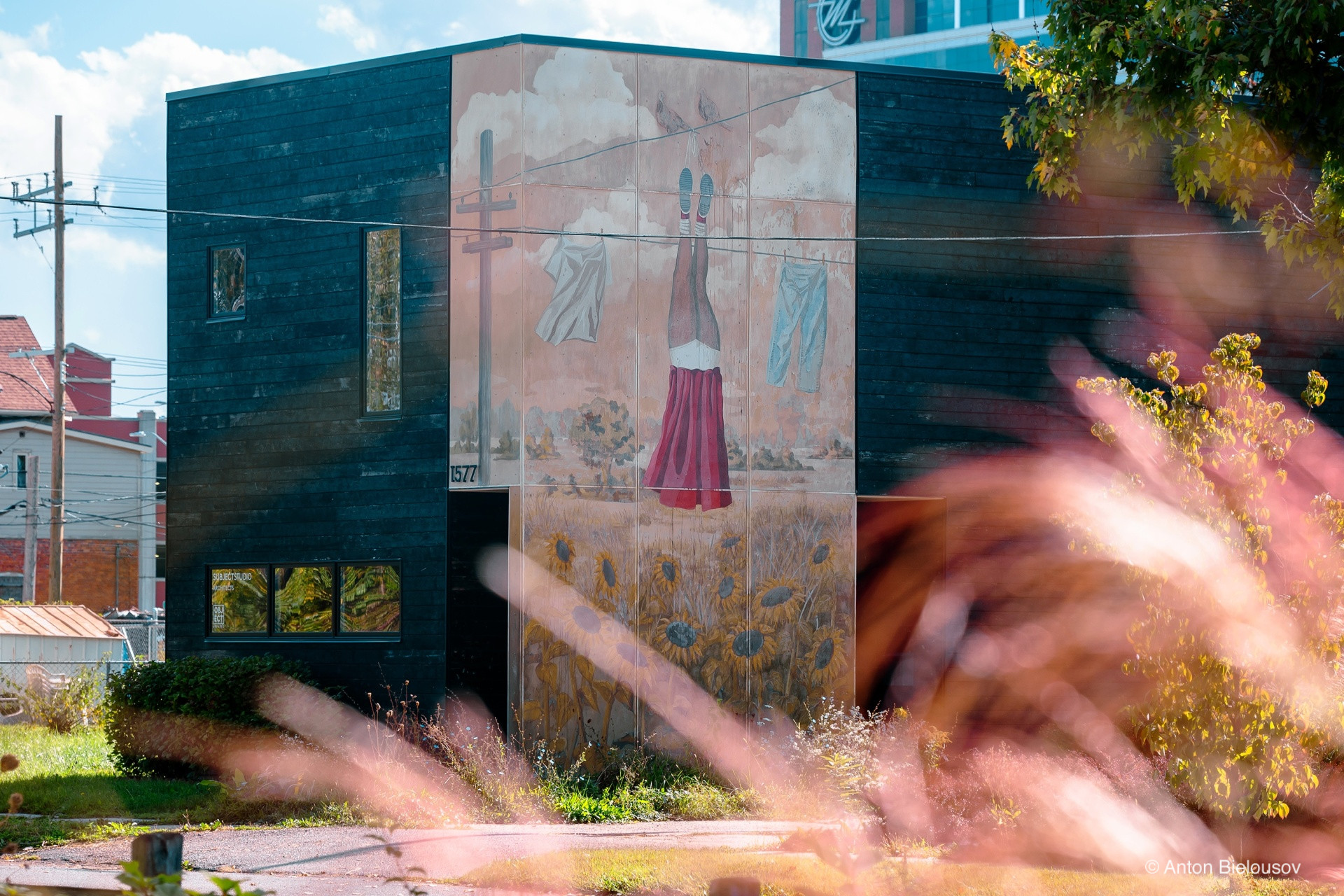
Behind the abandoned houses, there are overgrown alleys, consumed by weeds and neglect.
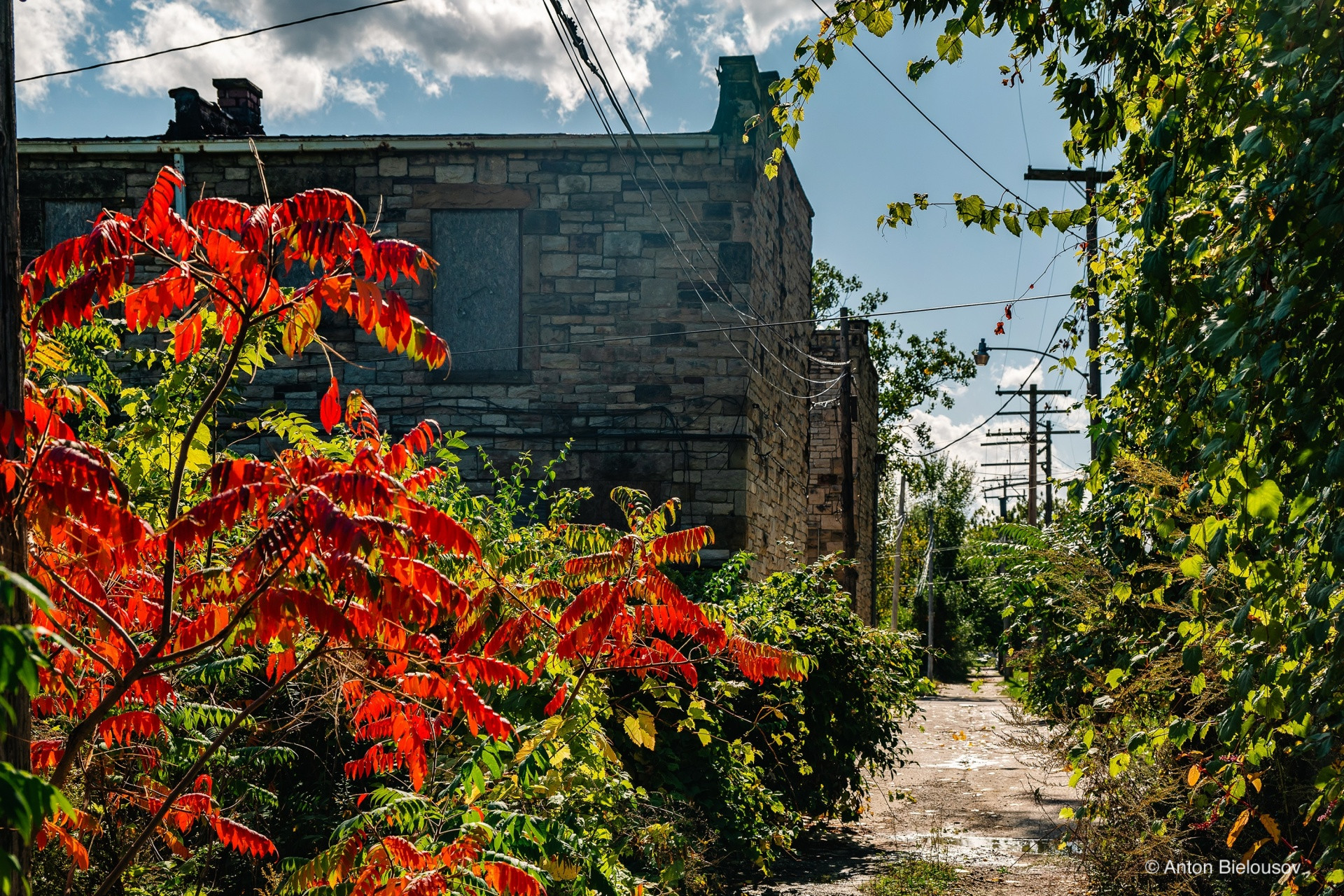
In some places, the sidewalks are so overgrown that walking is no longer an option—not that it matters, since the roads are completely empty anyway.
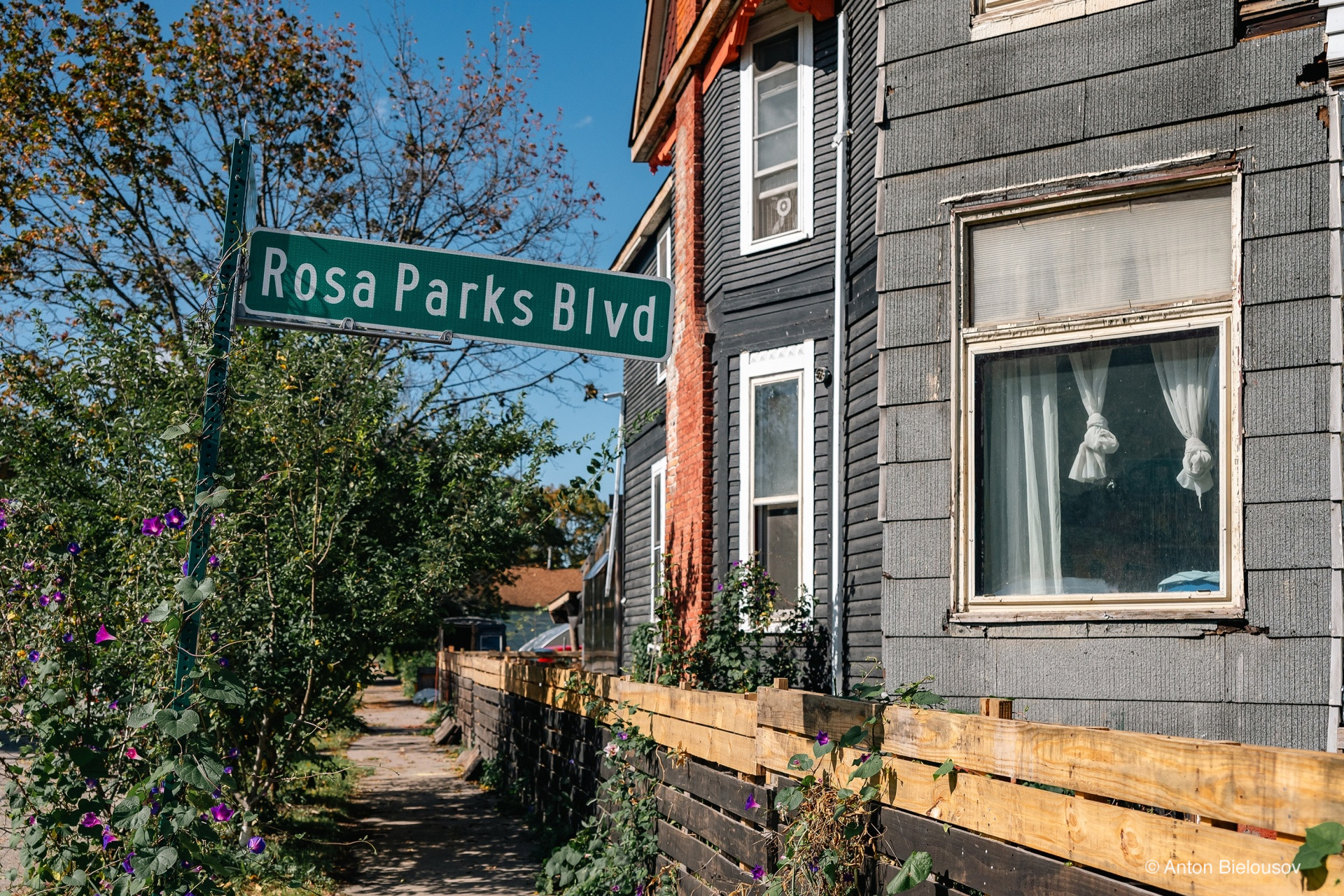
The sidewalks lost their battle with nature long ago. Slowly but surely, the city is being pushed out of itself, reclaimed inch by inch by grass, trees, and time.
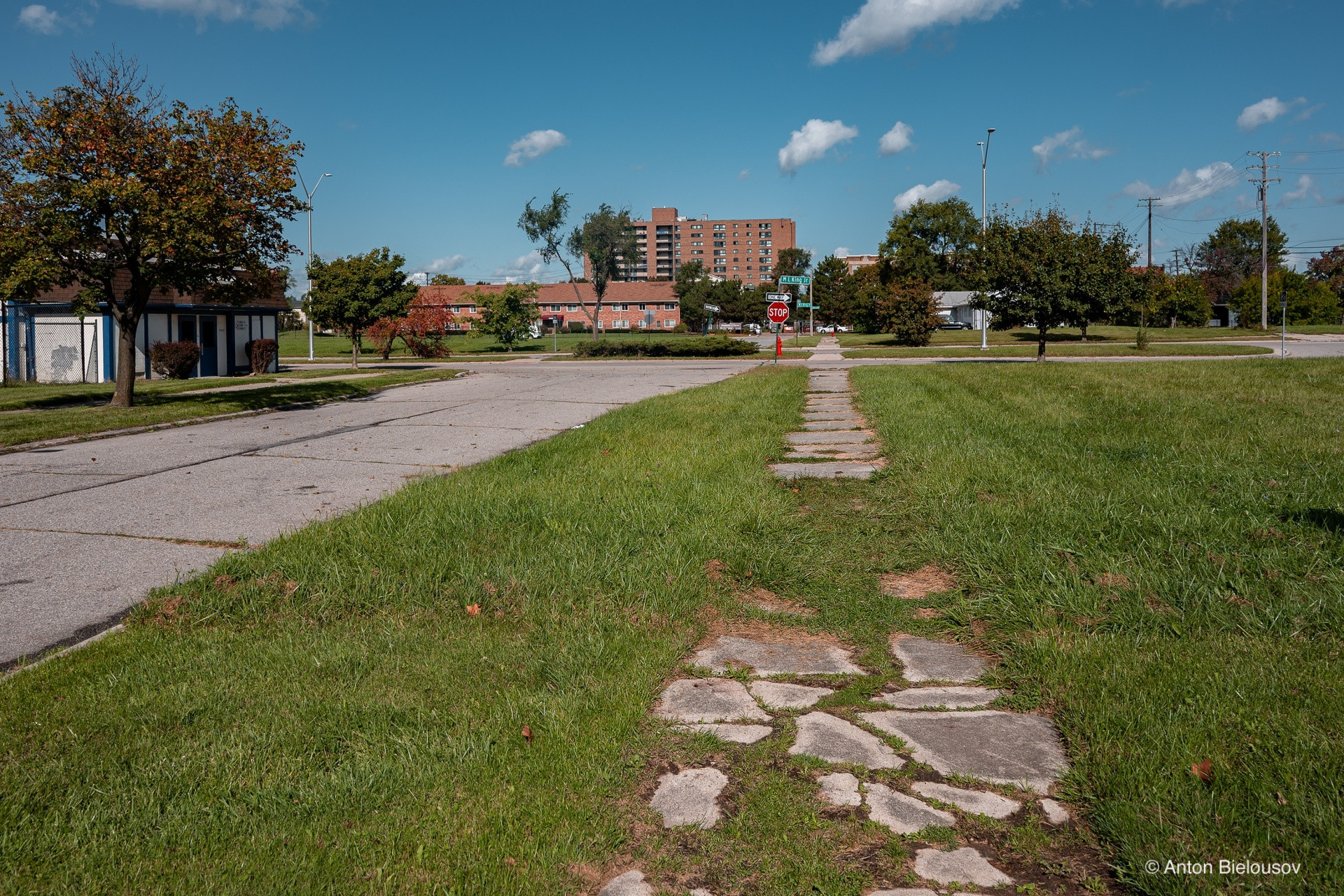
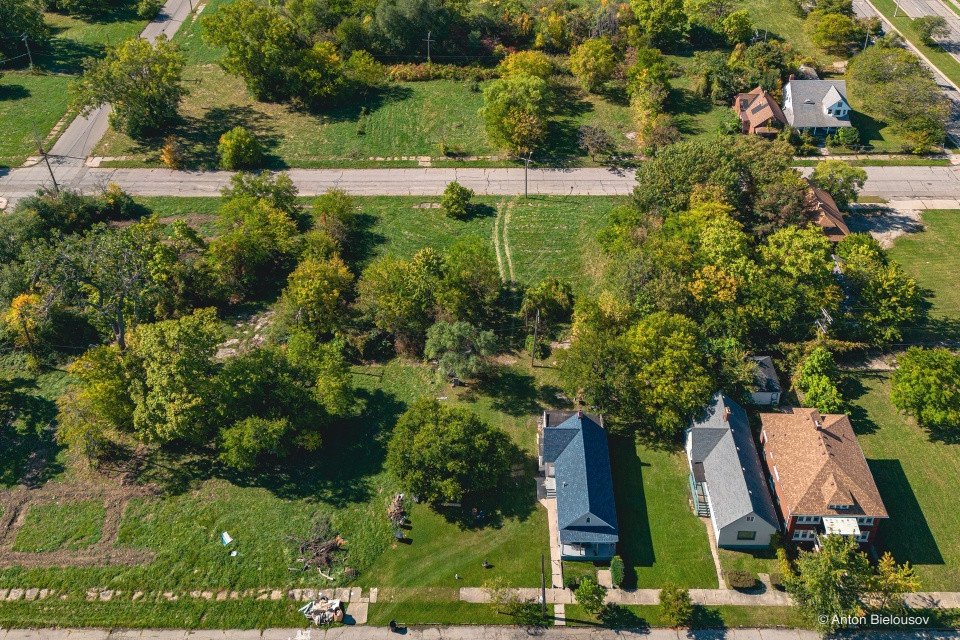

The city only maintains the pedestrian infrastructure around intersections. You know, just in case. For the future.
So you can find short stretches of real nice sidewalk—brand new, leading absolutely nowhere—fully equipped for wheelchairs and the visually impaired.
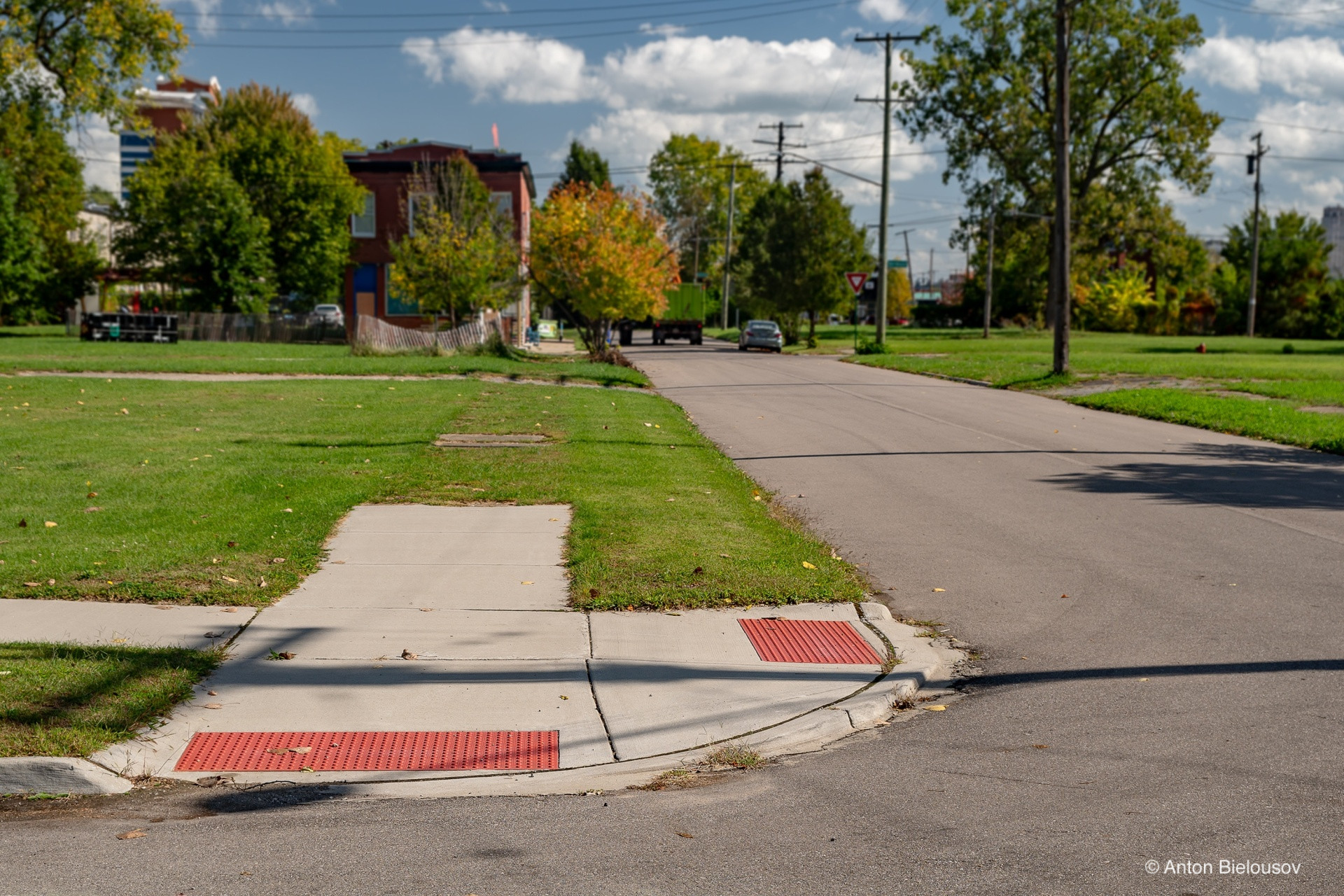
And that future isn’t as far off as it seems—the cheap lots that just recently could be snapped up for mere thousands are already marked for new development.
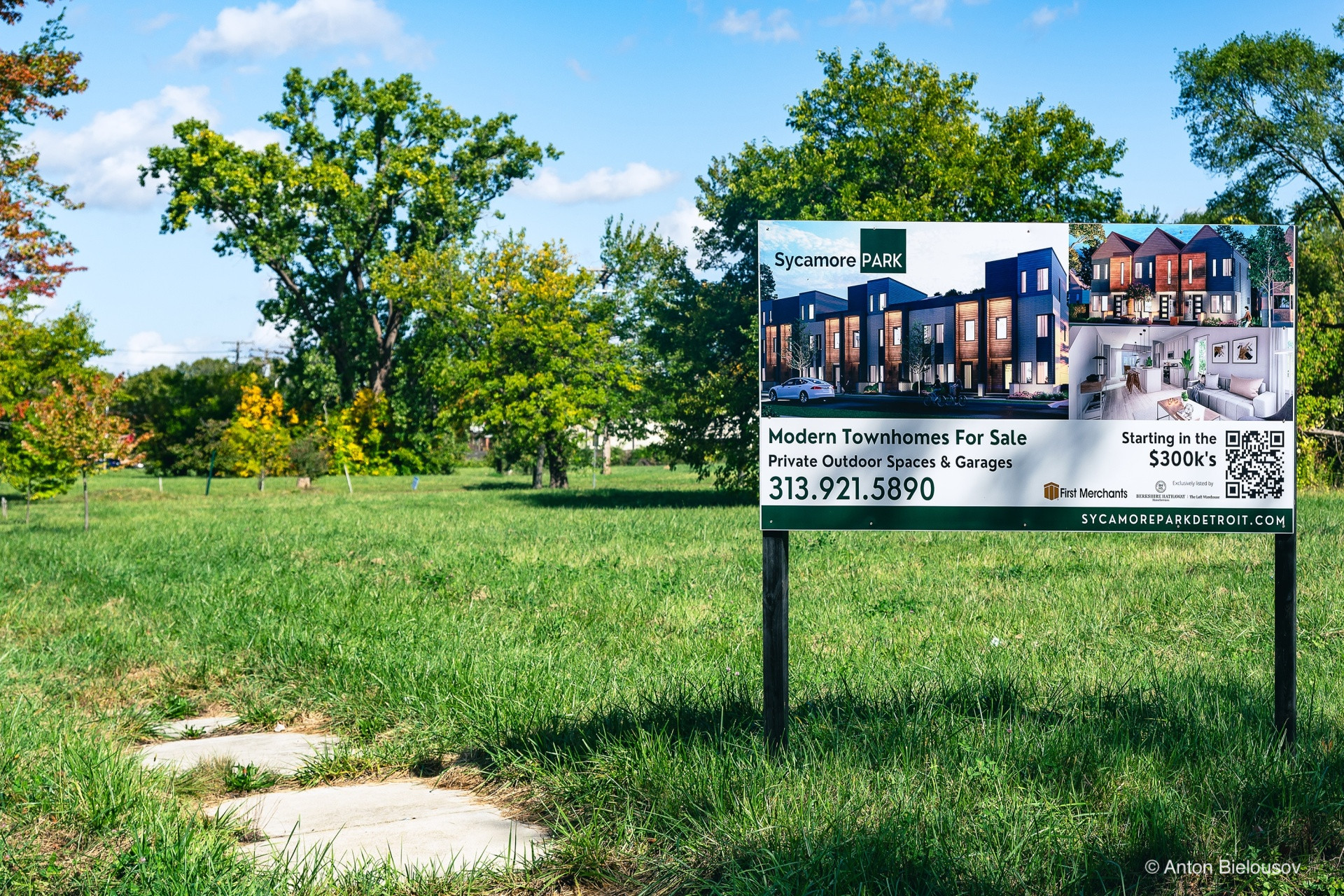
Boarded-up houses and empty lots aren’t just left to rot—they’re mostly owned by banks, quietly scooping them up, waiting to sell the whole lot in bulk to some eager developer. It’s a slow game, but one day, all this emptiness will have a price tag again.
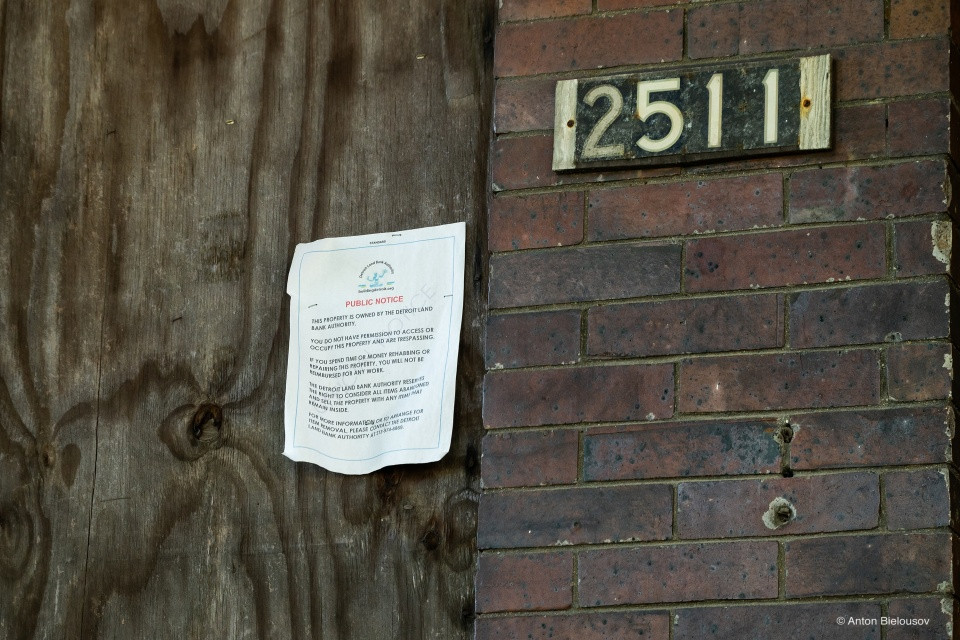
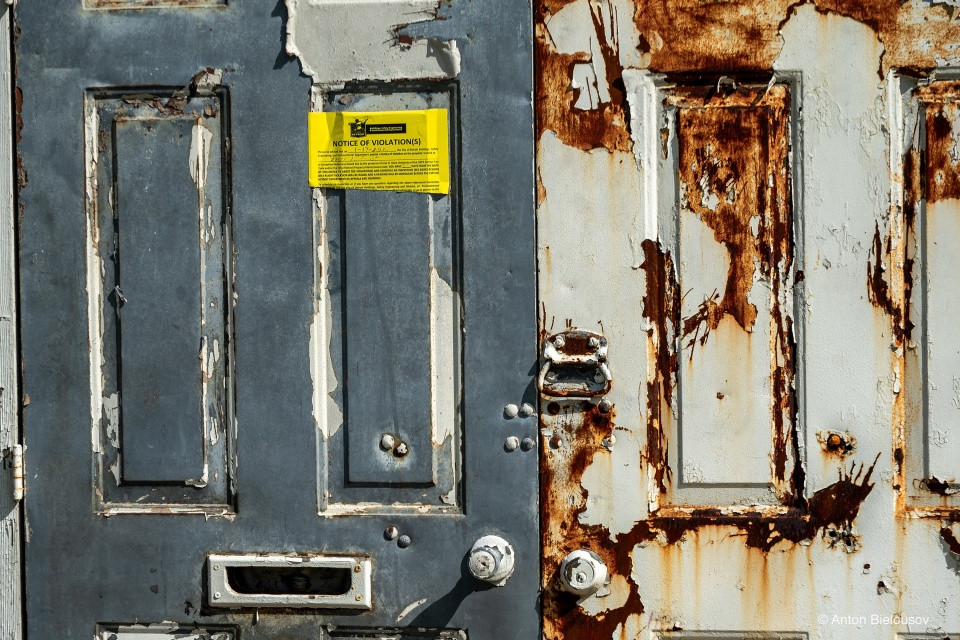
For example, the rumor has it that this hotel right here was sold not too long ago for… $1. Yes, you read that right. Less than a cup of coffee.
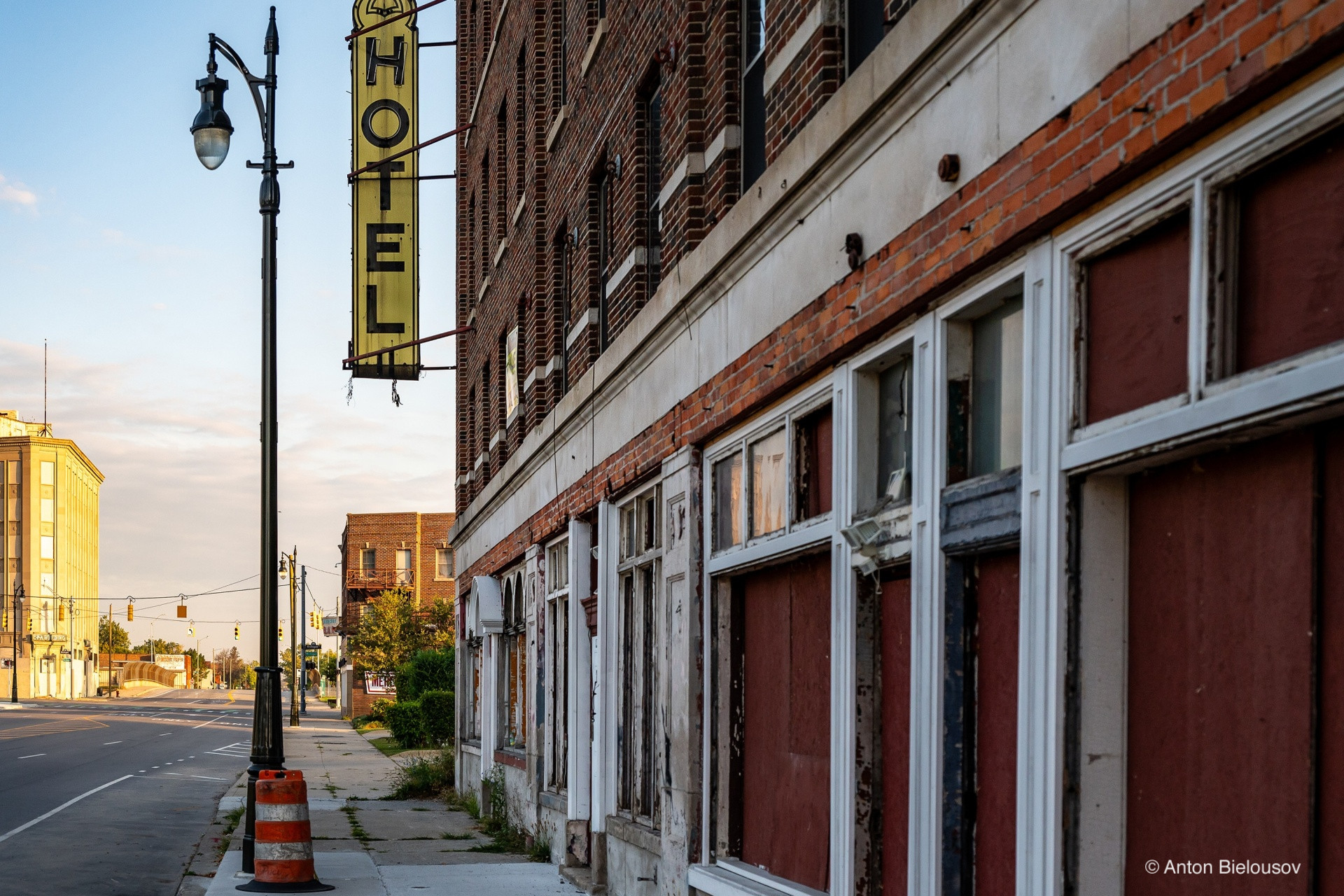
And this one is currently on the market—for a $1.75 million.
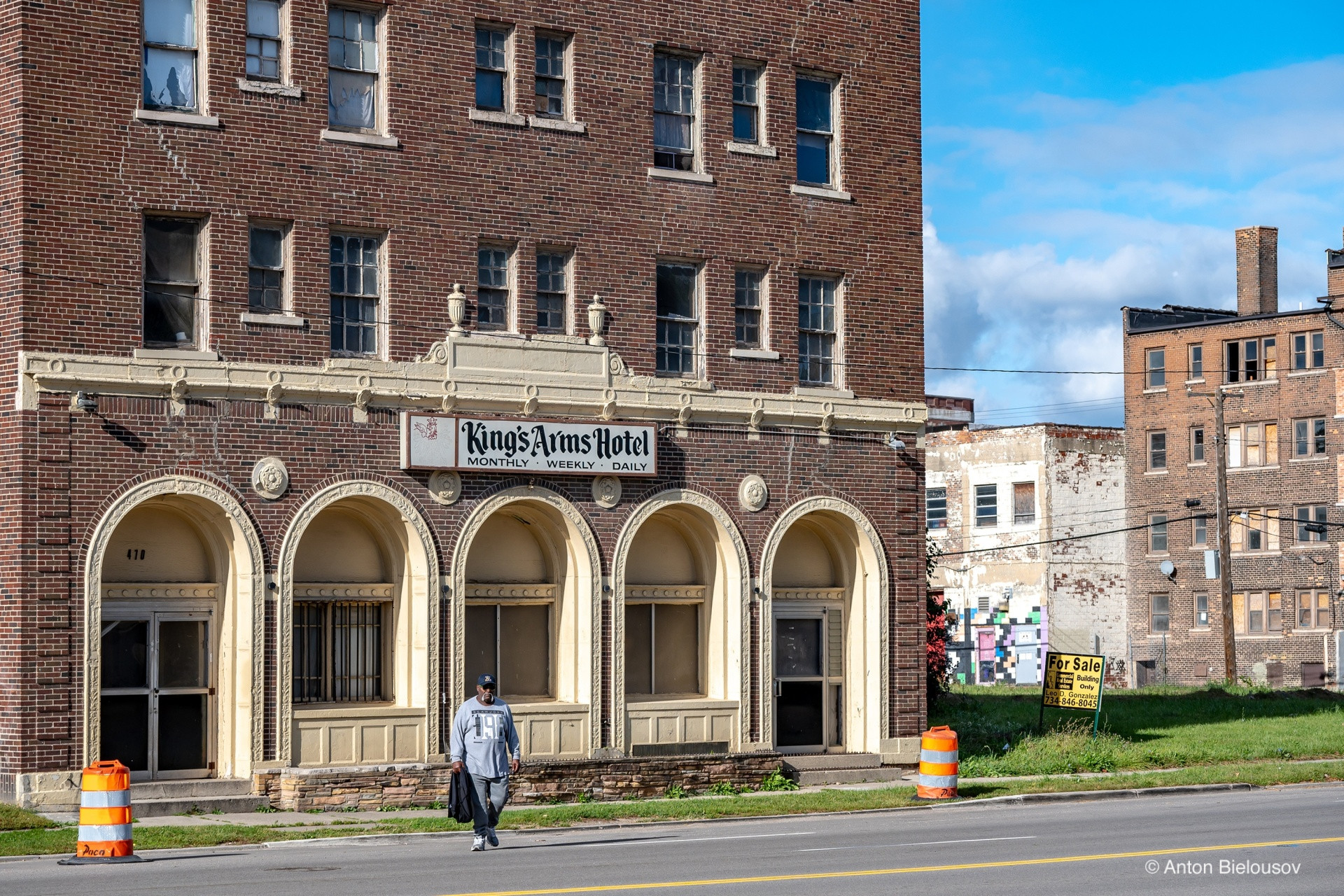
Closer to downtown, brick apartment blocks replacing the old neighborhoods.
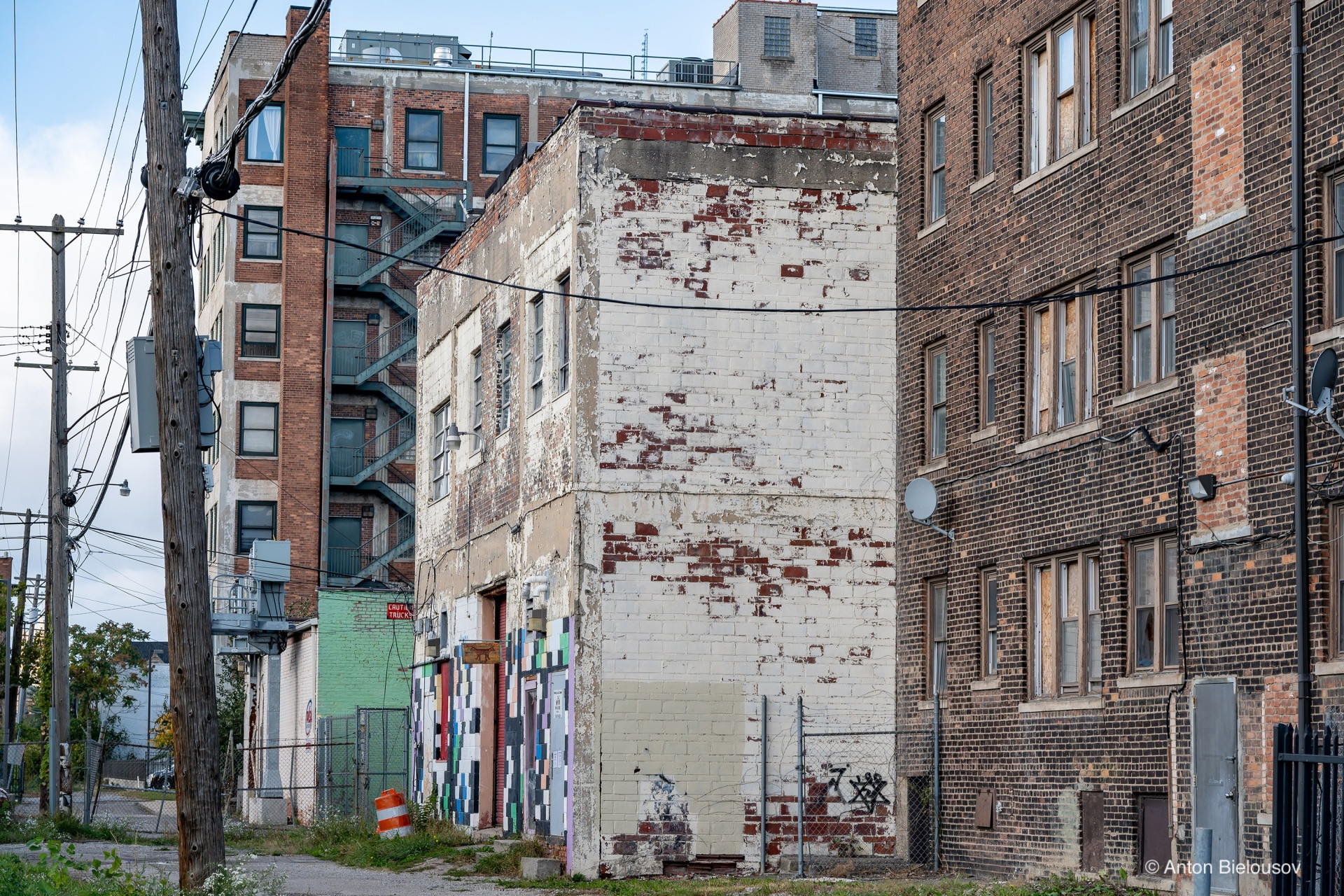
Somewhere around here, a woman stepped out when she saw my camera. She told me that every other night, just across the alley, there’s… let’s call it lively activity—drugs, booze, the occasional gunfire. Frankly anything but ron-n-roll. And her window is practically within arm’s reach of it all. She said she’s called the police more times than she can count, but nothing ever changes.
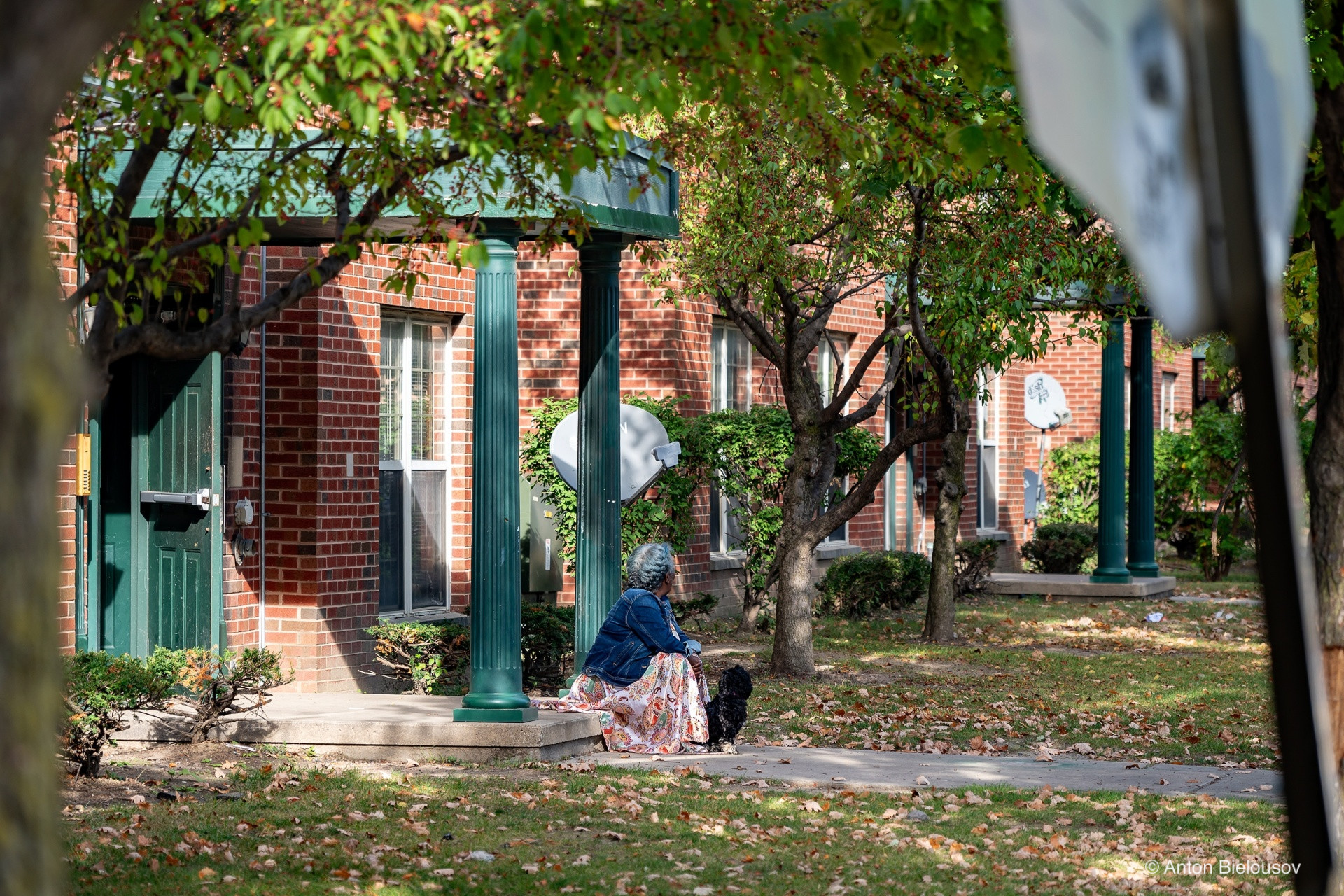
I explained, of course, the best way I could, that I have nothing to do with the city, but I promised that I’d pass the message along. So, here I am. Passing it along.

The old railway workers’ union building (Conductors’ Protective Assurance) is now abandoned for decades. In its final years of use, it had a drive-through ATM—right there under that little canopy on the left.
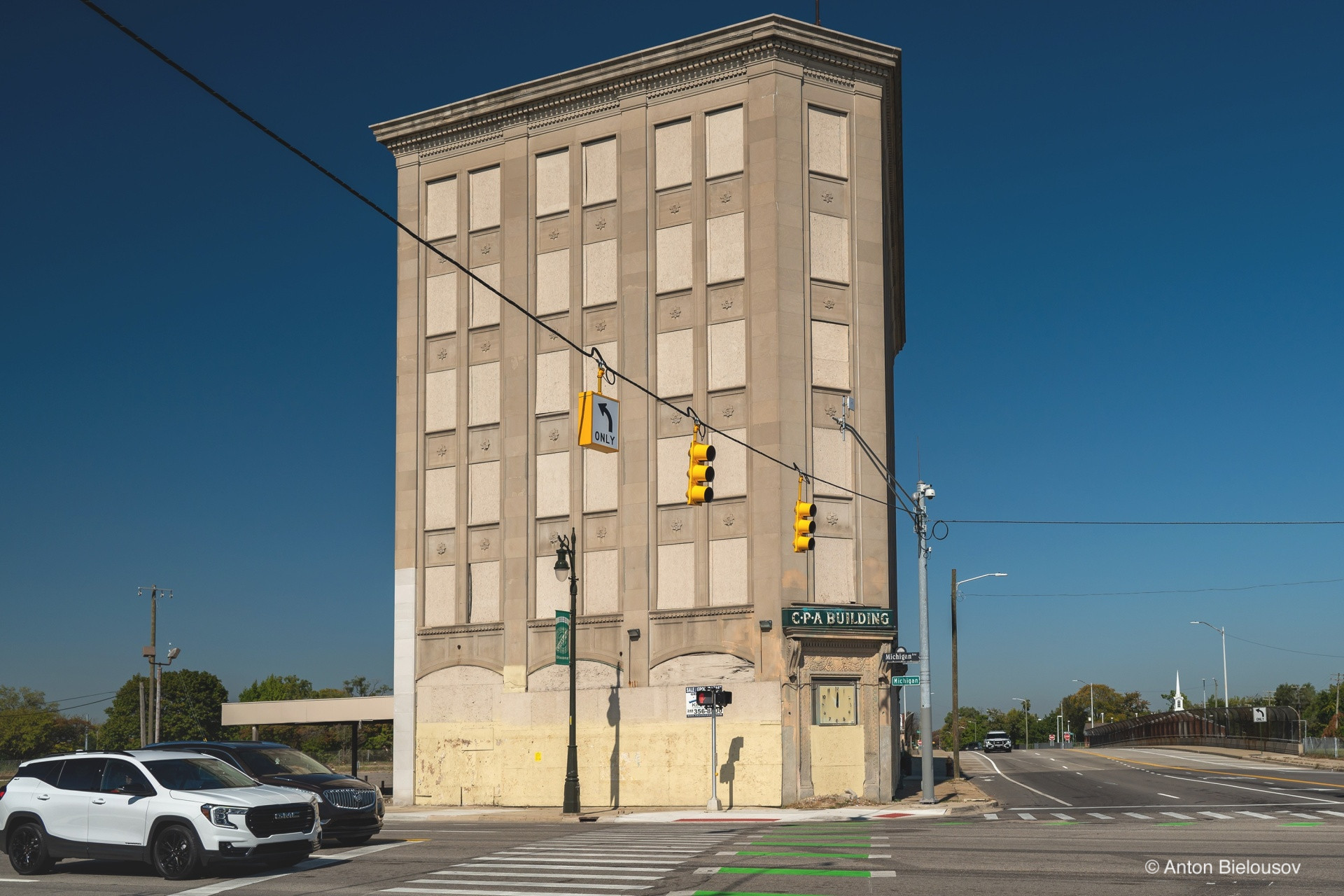
In 2014, a development company purchased the building with plans to demolish it due to its poor condition, but the Detroit city council stepped in and blocked the move. Now, it’s up for lease.
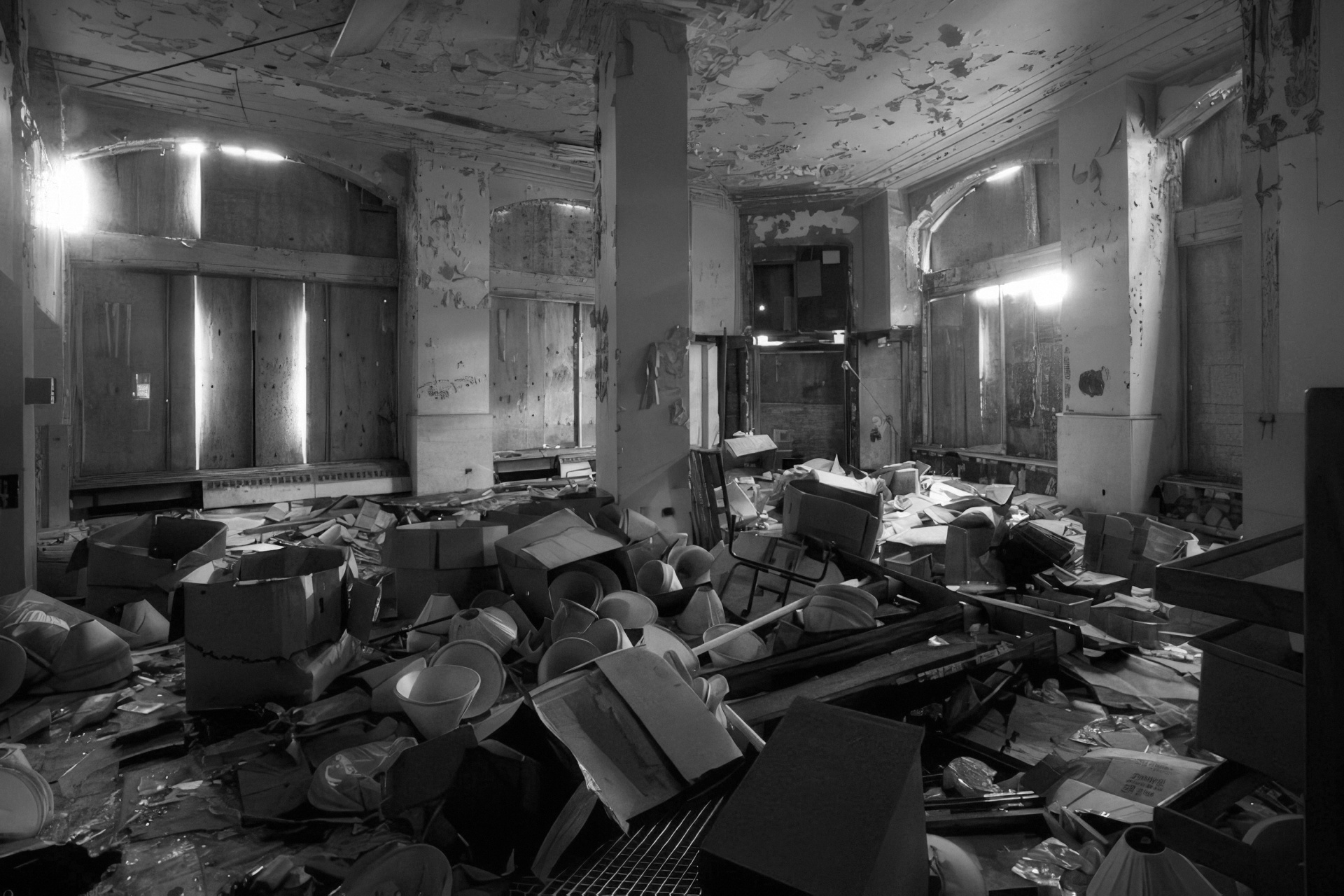
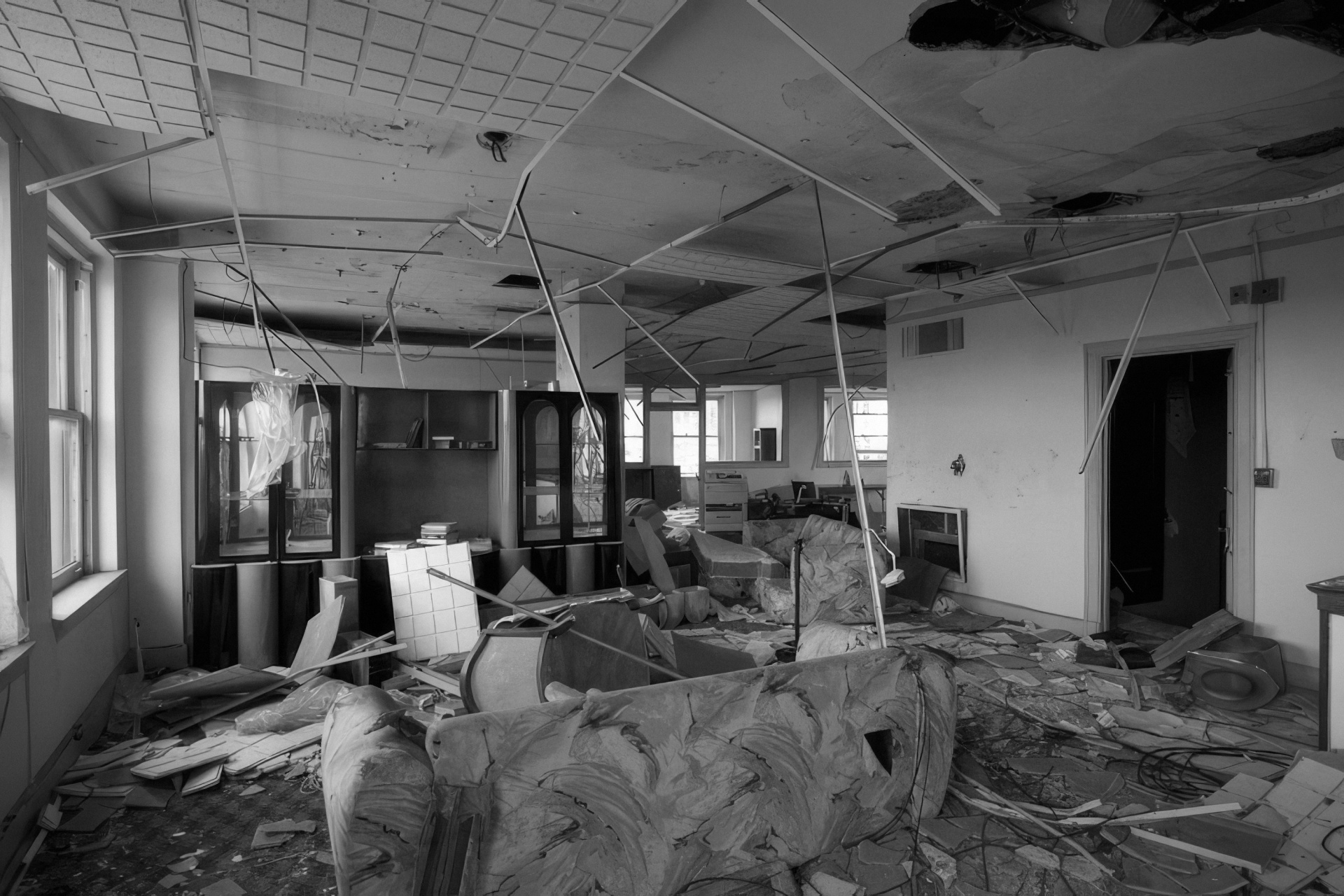
The sign on the insurance building has outlived the company itself.

Michigan Central
The most iconic historic buildings of the Motor City is the Michigan Central.
Completed in 1913 and was the grandest railway stations of its time (standing 230′ tall).
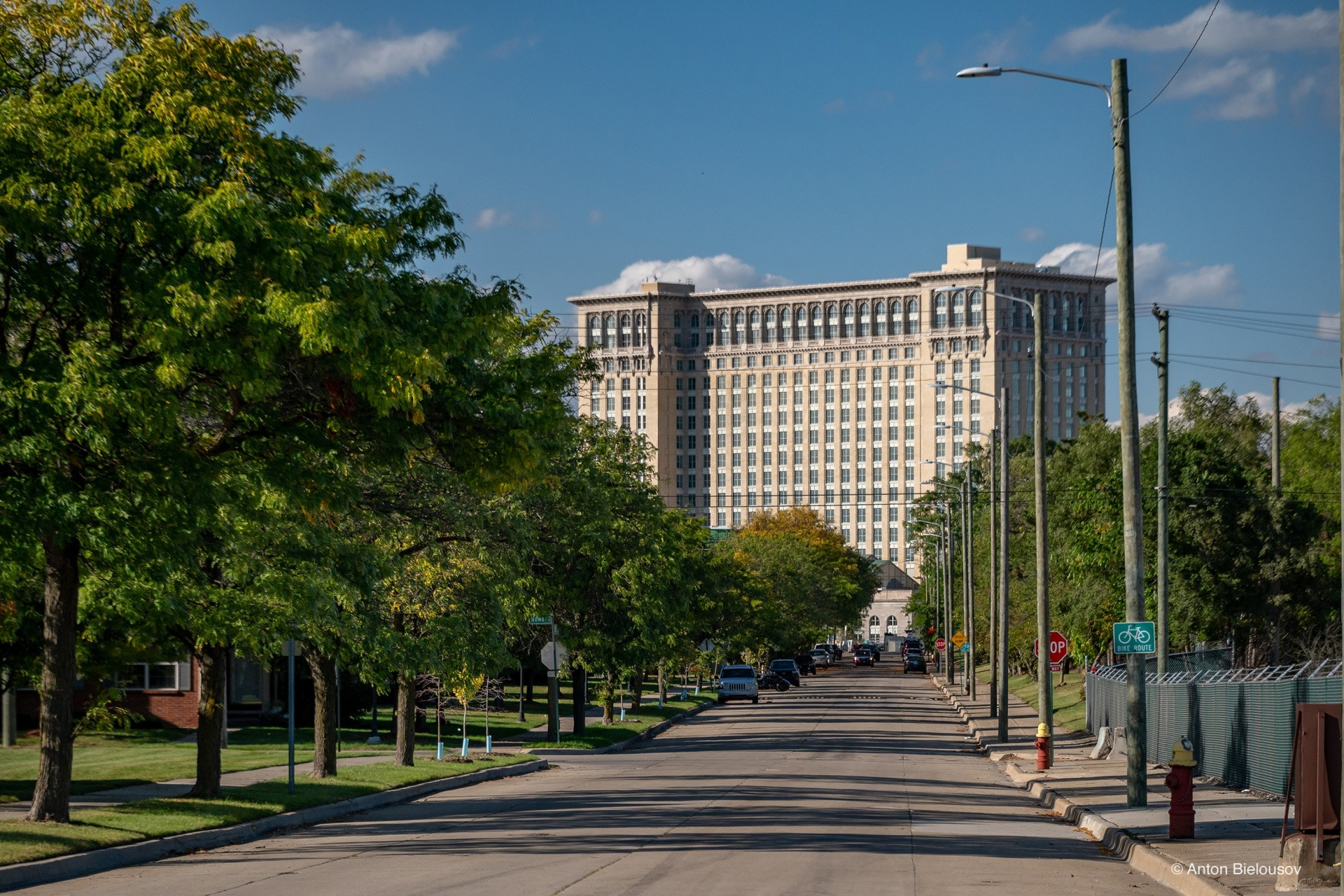
But by the 1990s, the Michigan Central Station had become less of a transport hub and more of a five-star resort for local crime syndicates. At some point when Top Gear creew was shooting its episoded here in 1997, the star of the show, Jeremy Clarkson fond himself staring down the barrel of a gun just for entering the building.
“It’s a long, complicated story but we were trying to do some filming and some people thought we were trespassing on their turf. It was pretty nasty. And this time, 100 yards from where that happened, I was having dumplings in a goose broth.”
— Jeremy Clarkson [The Drive]
After its closure in 1988, the station sat vacant and deteriorating for over 30 years, becoming an infamous symbol of urban decay… or a ruin-porn, depends how you look at it.
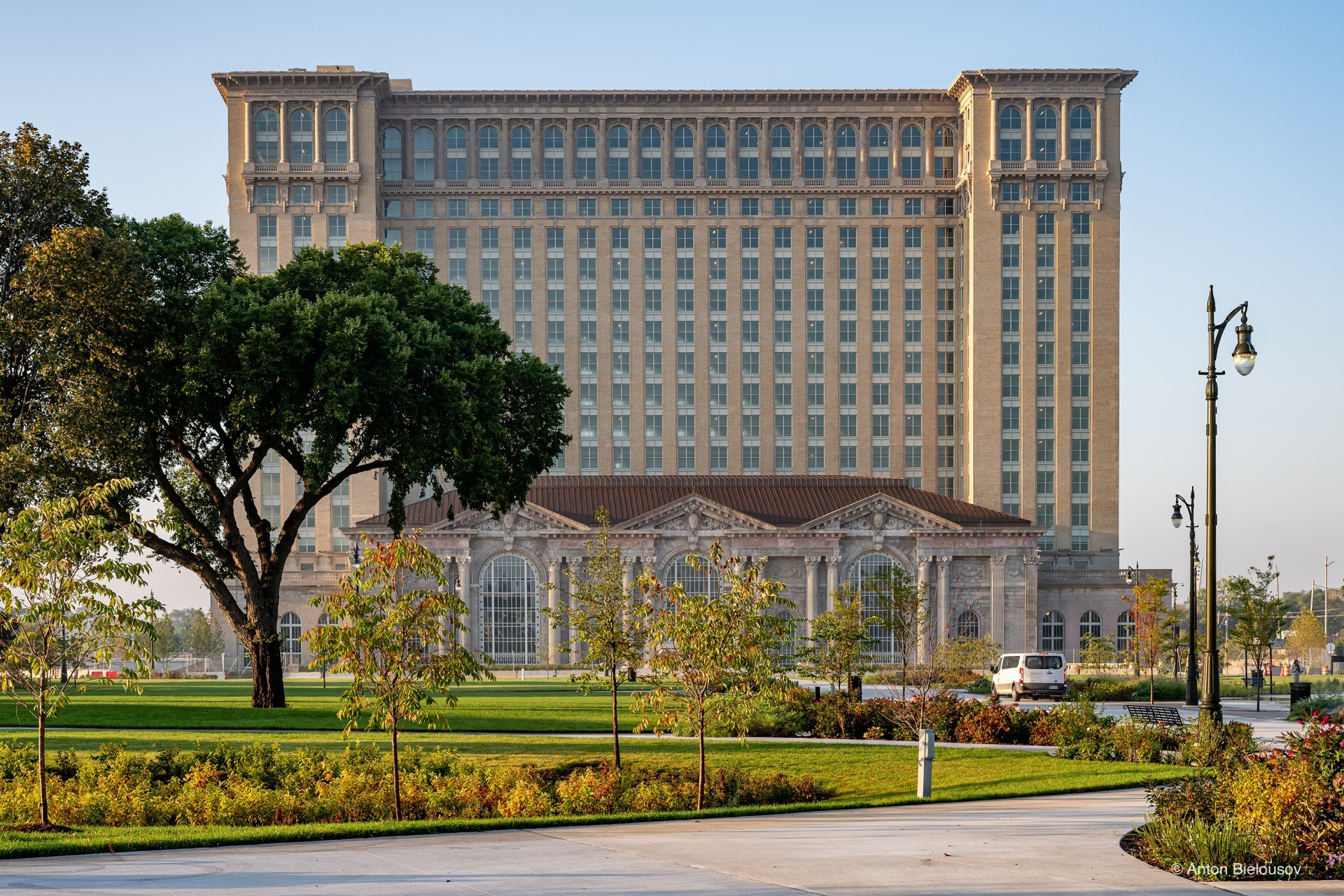
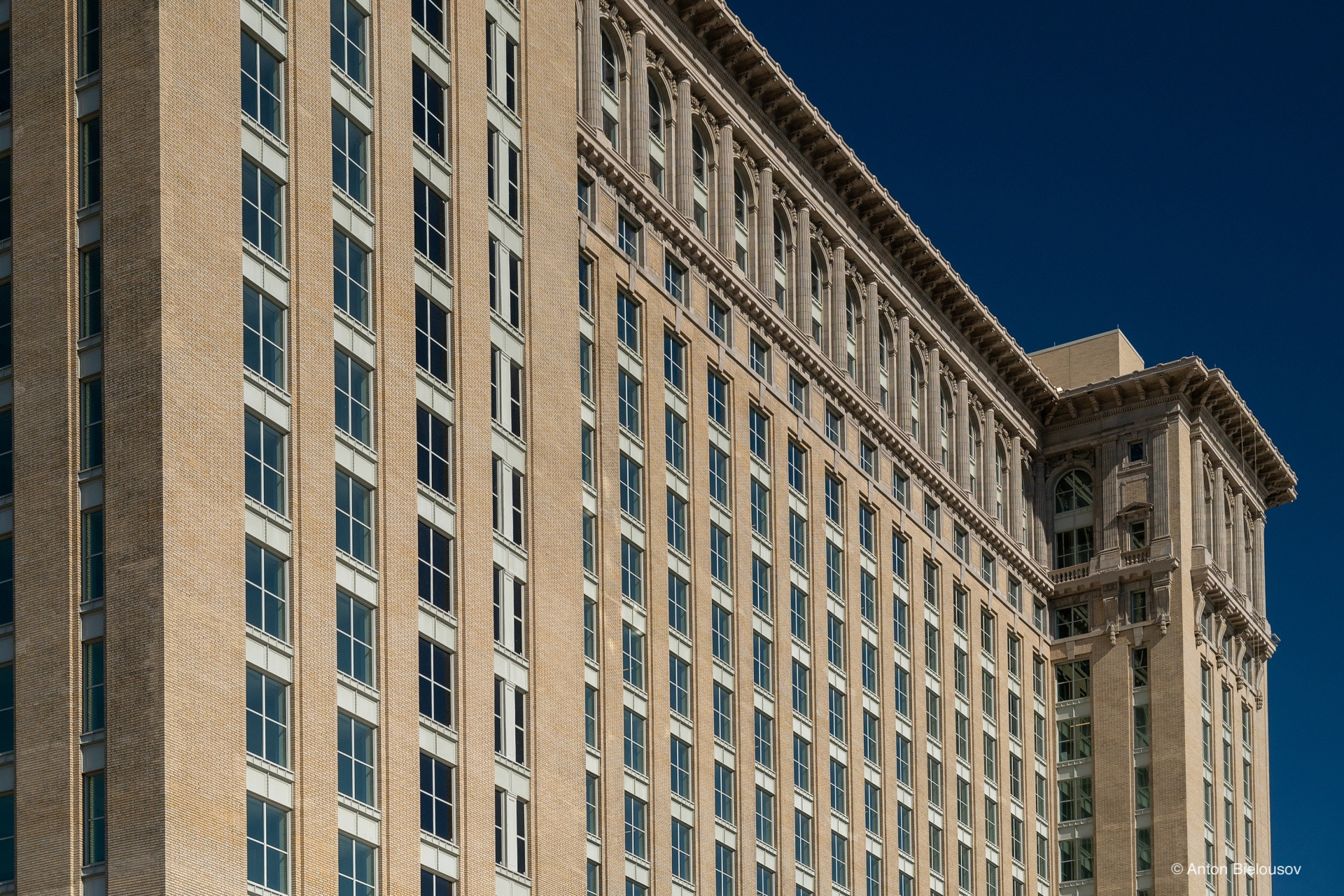
There’s a rumored tunnel that once connected Michigan Central Station to the nearby Detroit River, though its existence has never been fully confirmed. This mystery has added to the station’s allure over the years.

Not too long ago, you could visit the old station on a guided tour and soon, it’ll be welcoming visitors legally again. Right now, though, it’s a hive of activity, with workers frantically trying to scrub away decades of neglect and make it look a little less… well, post-apocalyptic.

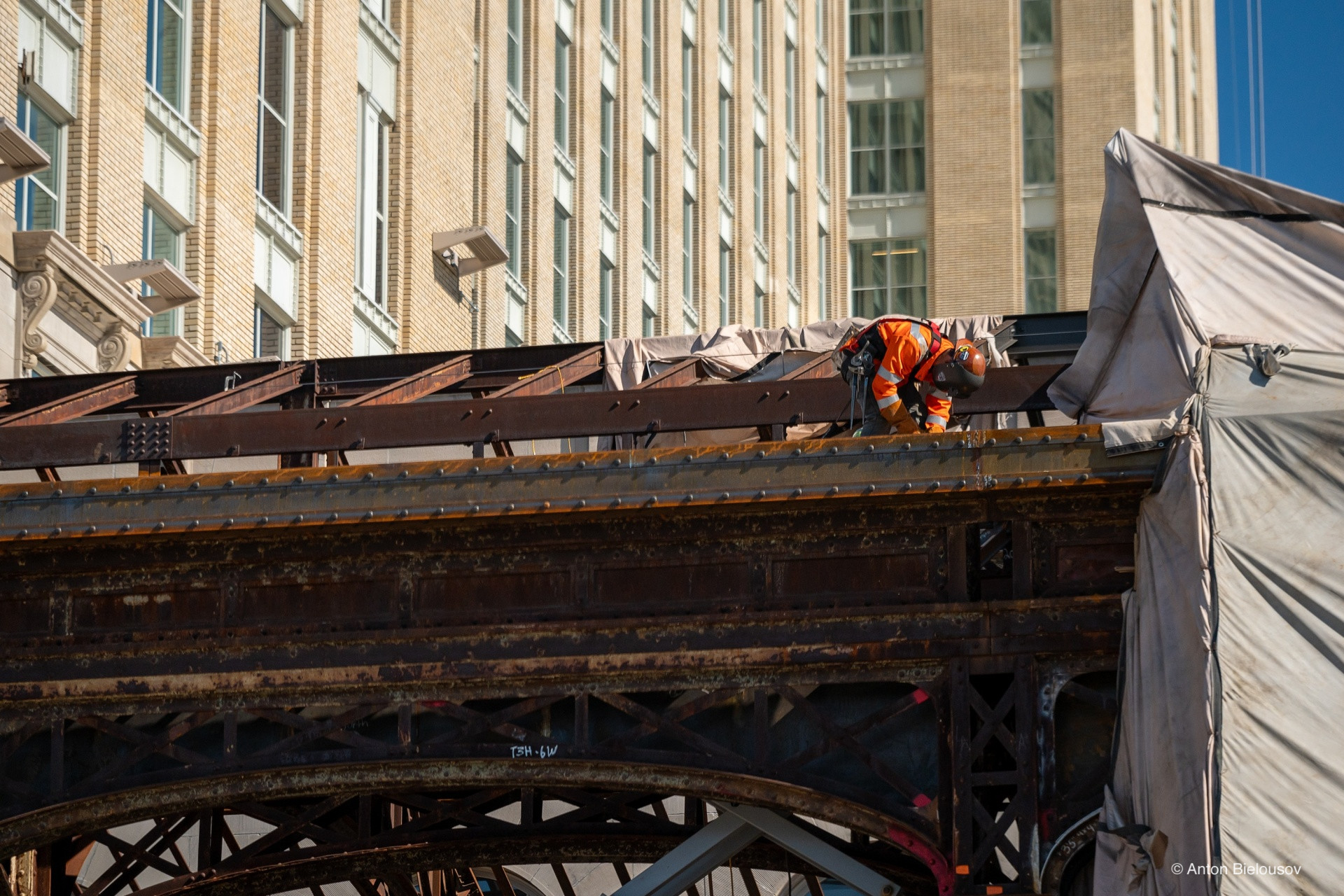
Work’s been going on for 7 years now, and from my utterly unqualified perspective, the end’s almost in sight.
UPDATED:
In the summer 2024, the grand reopening finally happened—it was a big deal for the city with with celebrities, a concert, and, of course, fireworks. It is now open for the public.
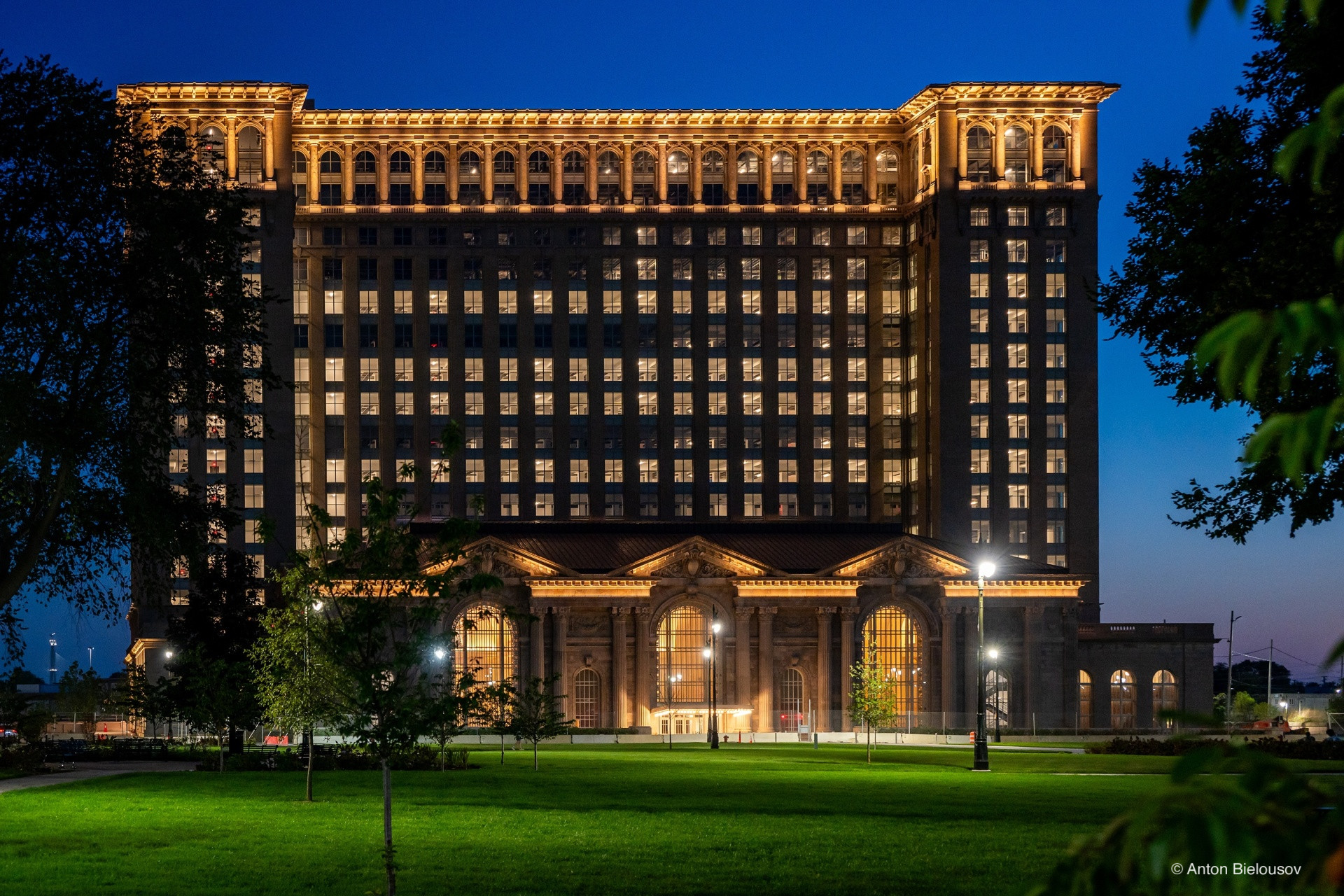
A staggering $740 million was allocated to restore this historical building and its transportation infrastructure!
The approach to this project is more like an archaeological dig than an architectural renovation. A whopping $4 million was spent just on restoring the ceiling tiles, each one meticulously marked to ensure it would return to its original spot after restoration. It’s like putting together a jigsaw puzzle, but the pieces are made of plaster and cost more than most people’s houses.
If you have a chance to visit the city, I say you must come and check it. I sure will.
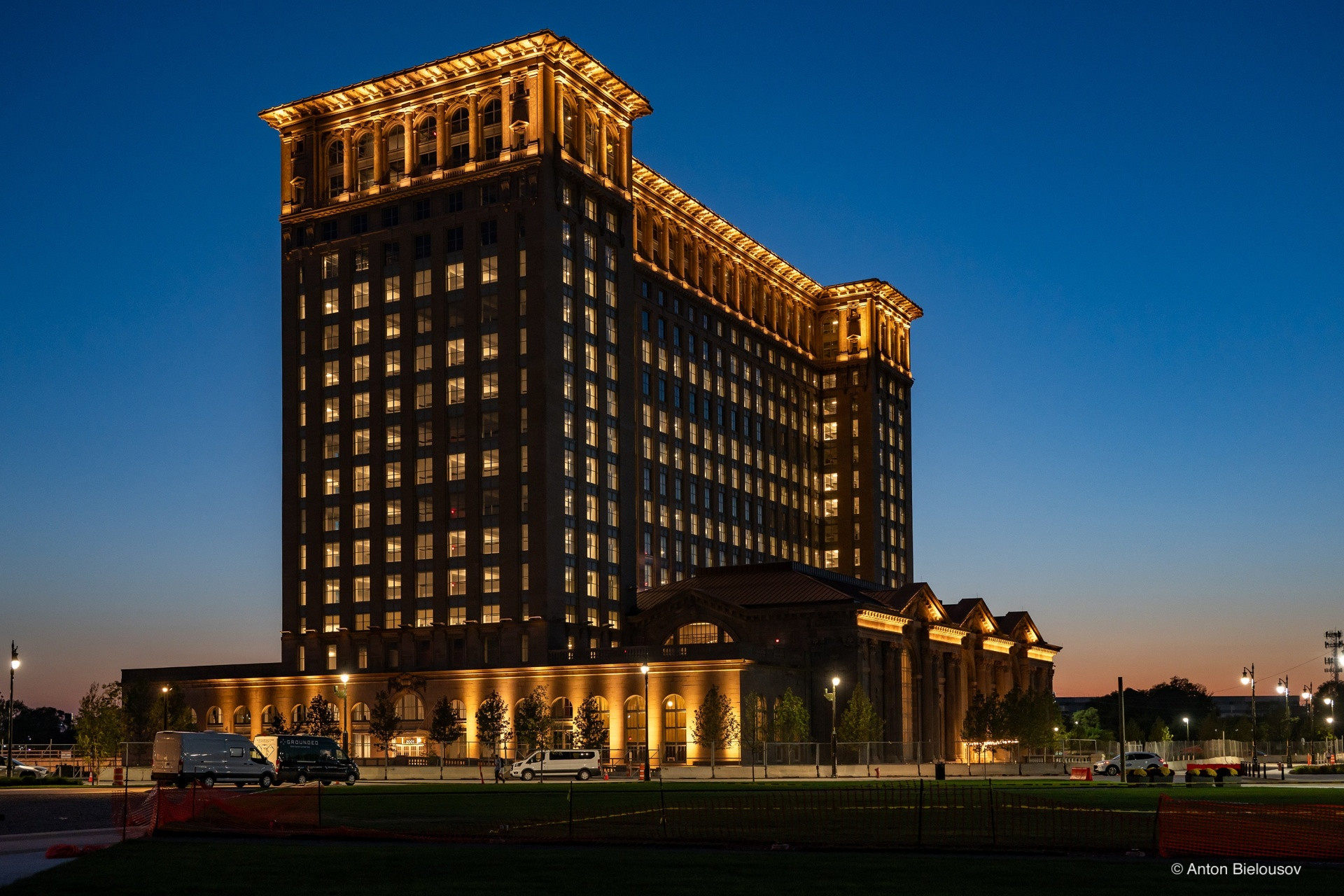
In front of the station building, there’s a park with benches designed as swings. They’re the kind of thing you’d expect to see on a children’s playground, but here, they’re part of the ‘redeveloped’ urban charm. And if you take a stroll down the city’s main street, you’ll find more of them.
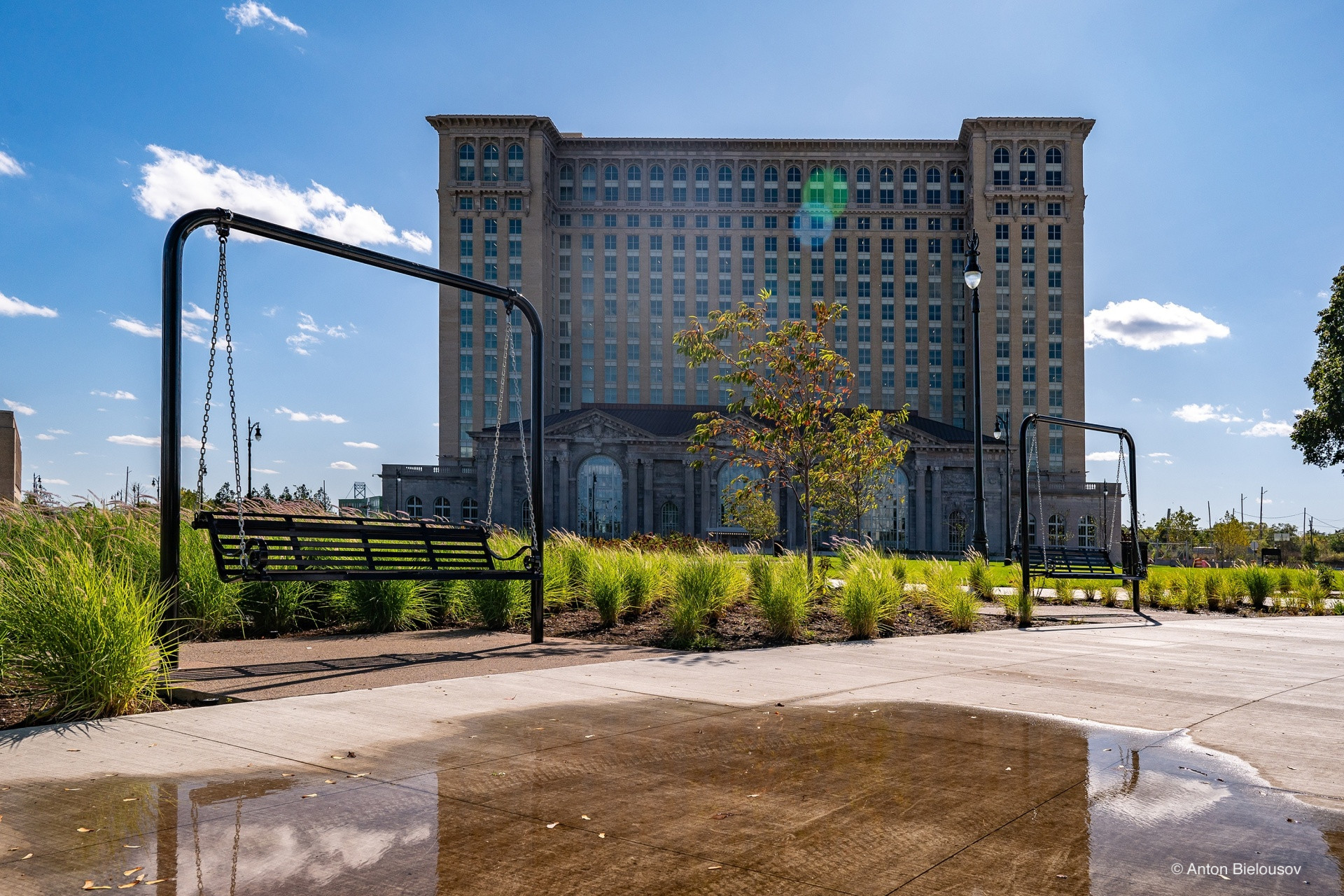
Thanks to the massive investments in the transportation hub, businesses are slowly returning to Michigan Avenue. There’s a prevailing belief in the city that this area will soon undergo rapid development, and those who’ve staked their claim early won’t be left wanting.
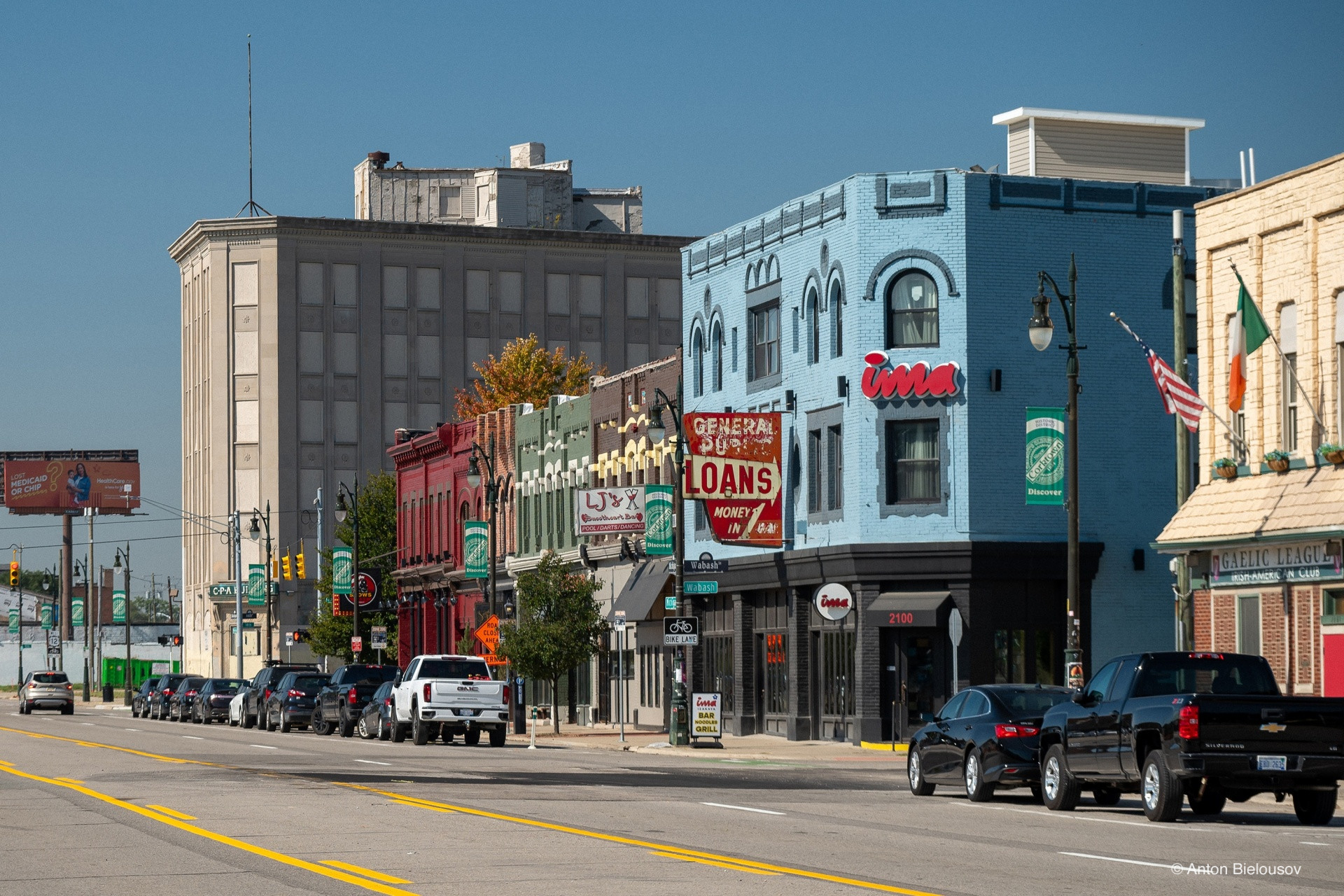
And not just the businesses, the Lord himself is awaiten any moment now.
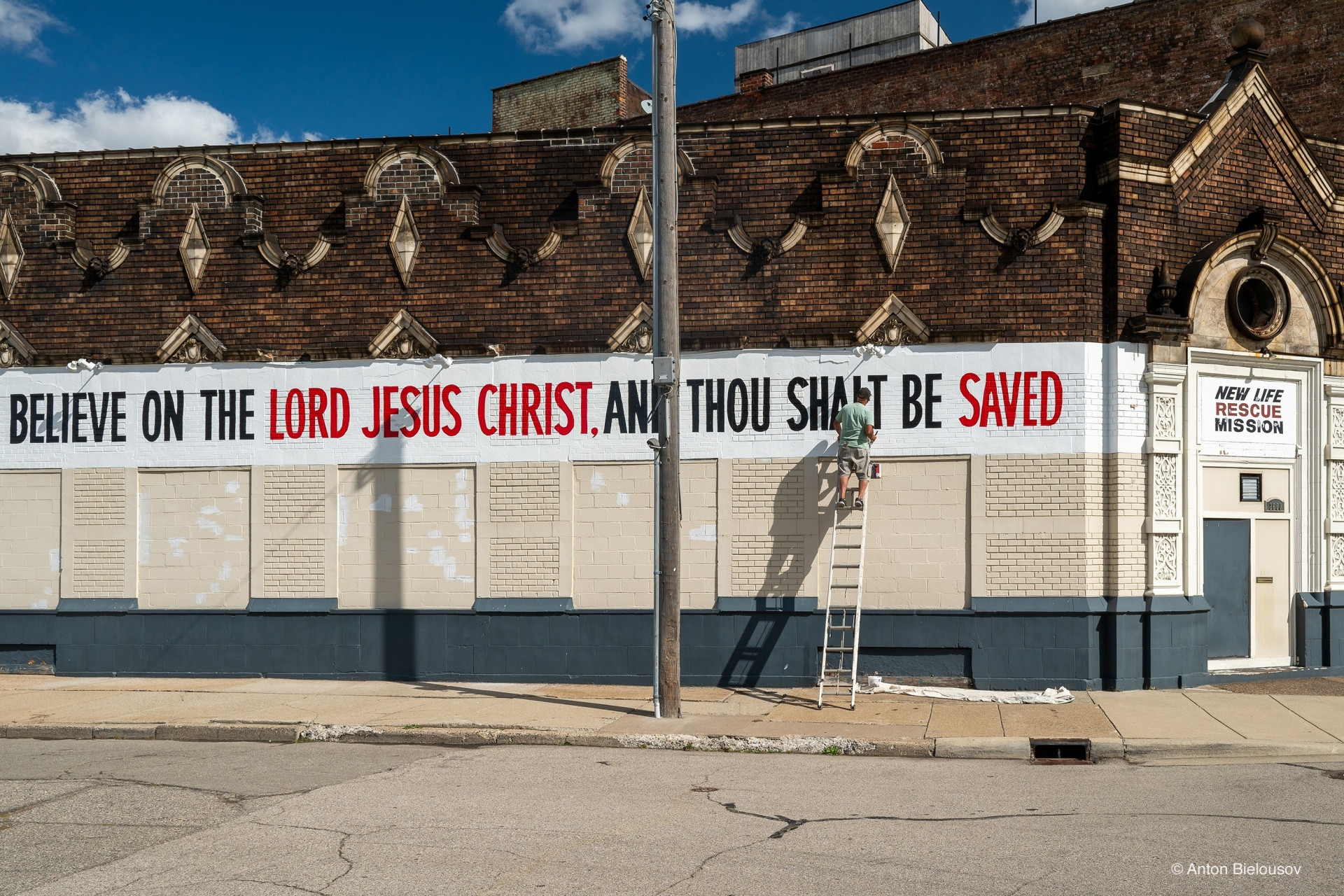
The history of the sity unfolds as you walk its remnants, I have to admit, sometimes sketchy streets. But this is exactly what I do in this blog and this is what I encourage you to do, staying safe of course.
Michigan Theatre
You’ve definitely seen the photos of that grand old Detroit theater—the one that’s now a multi-story car park.

Because, of course, when faced with a stunning piece of historic architecture, the logical thing to do is shove a bunch of Toyotas inside it. Although given that it was build right on the spot where Henry Ford’s first workshop once stood, maybe it didn’t really have any other fate after all?

Anywho, the 4,000-seat capacity thetre, was constructed in 1925 in the French Renaissance style. You can tell, eh?
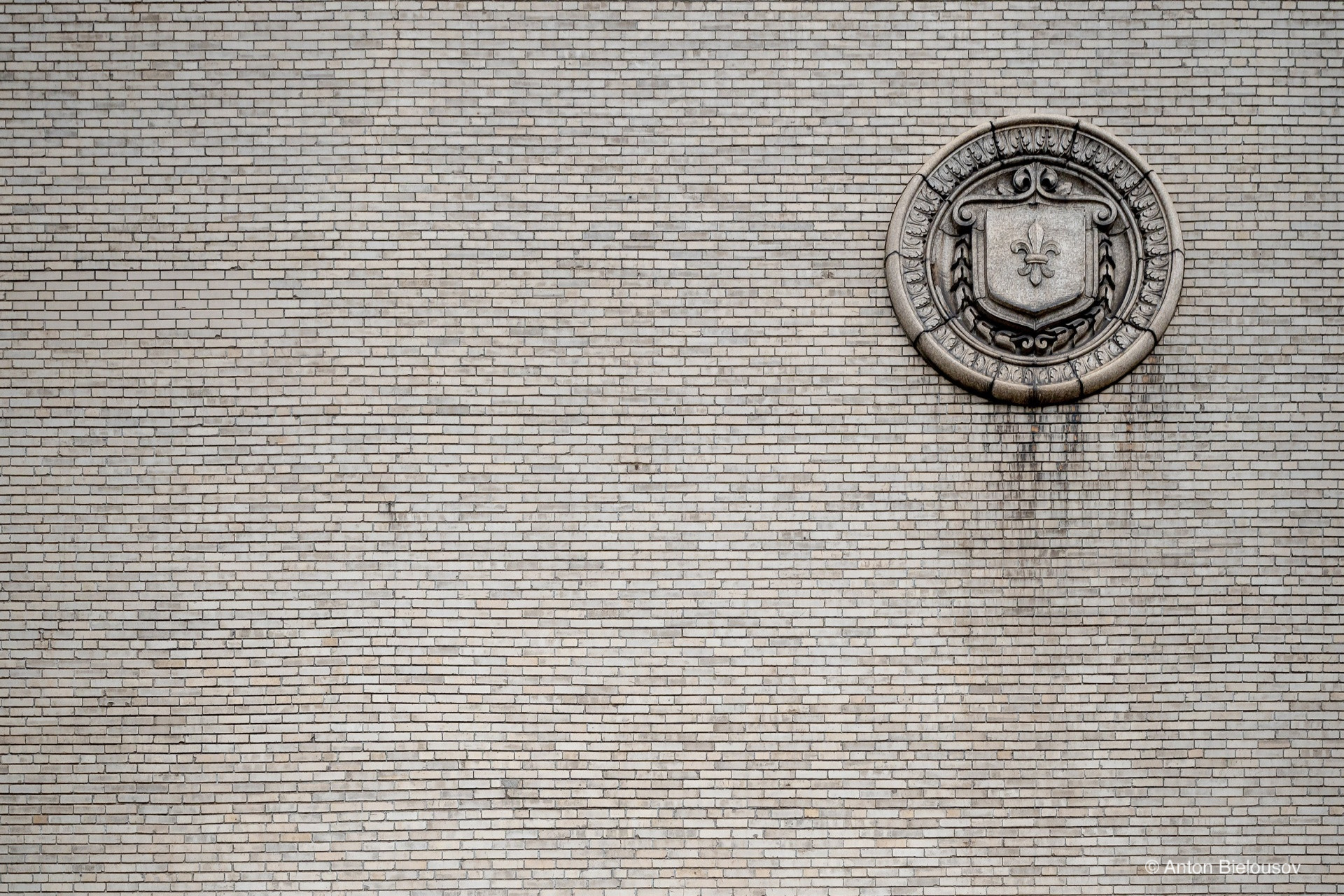
But the thing is that it was designed as part of a complex with an adjacent 13-story office block.
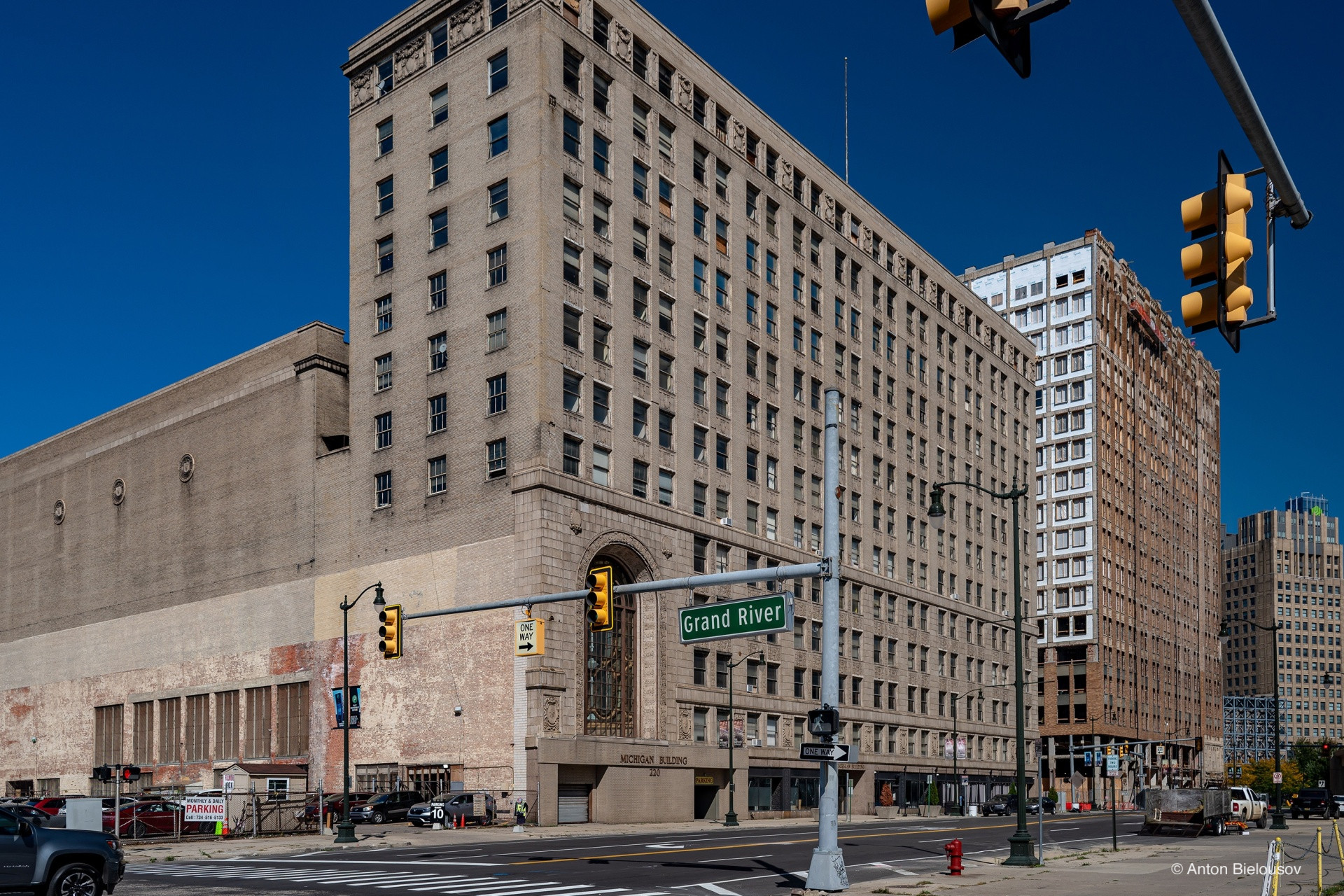
By 1967, the theater was losing money faster than a sports car on ice, so the entire complex was put up for sale. And the new owner? Well, they were only interested in the office space, of course. So by the early ’70s, the theater was left to rot, shut its doors, and by 1977, it was reopened as a car park.
I really tried to get inside, but unfortunately, due to the increasing risk of the facade collapsing, they’ve now removed the parking lot. And as for the security guards at the office building—well, on a weekend, they weren’t exactly on the job, so no chance of slipping them a cheeky little bribe to get in. It’s almost as if they didn’t want me in there at all. Imagine that!
Still you can sneak peek from the outside.

Stucco ceiling. Check. Because, of course, when you build something grand in the ’20s, you don’t just stop at the basics, do you?
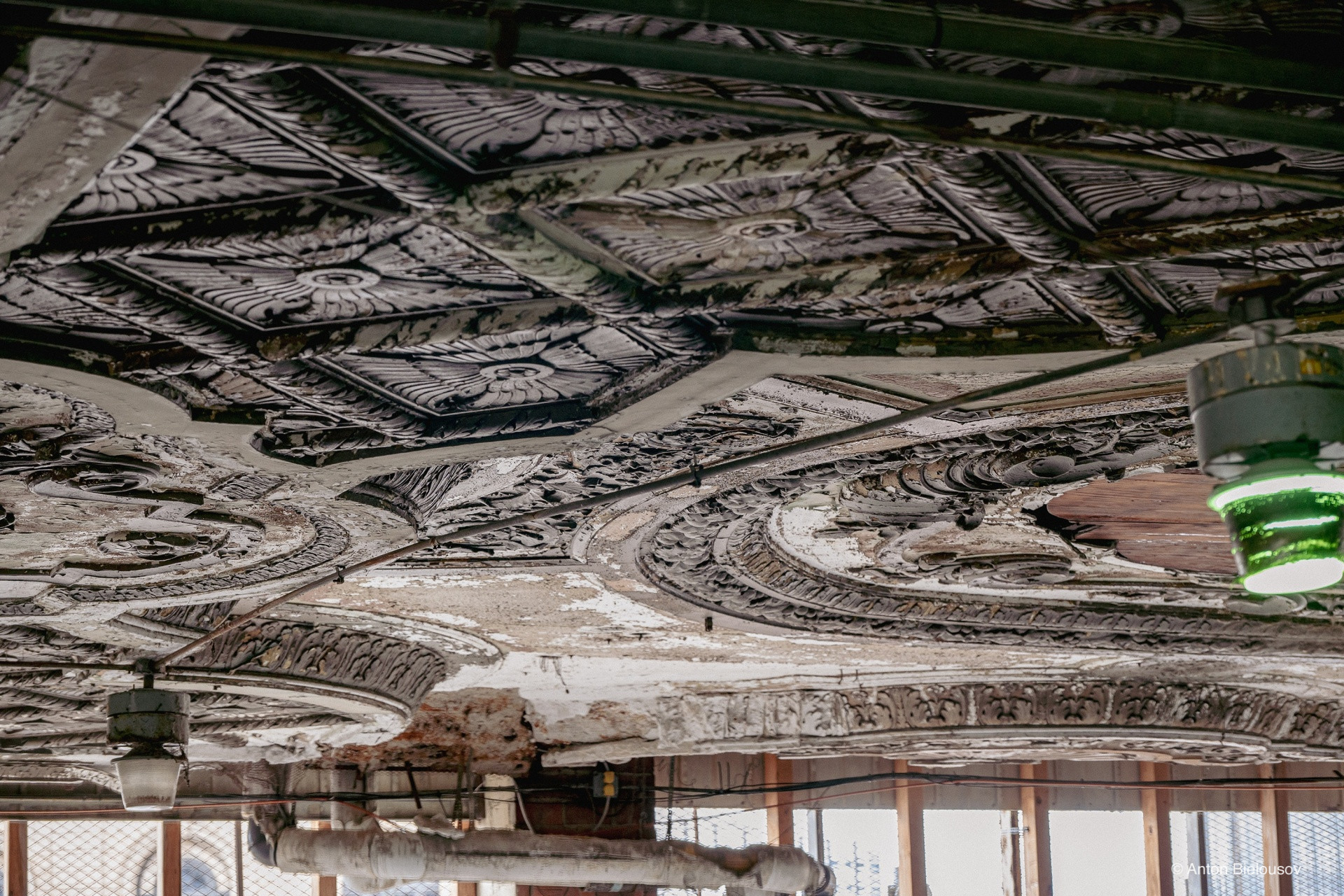
Not that Detroit had any issues with parking spaces recently anyways.
Today Detroit is home to about 78,000 abandoned buildings. That’s not just a handful of run-down houses, that’s practically a city of decay.

More than half of them are set to be demolished—that’s nearly a quarter of the entire city’s buildings.
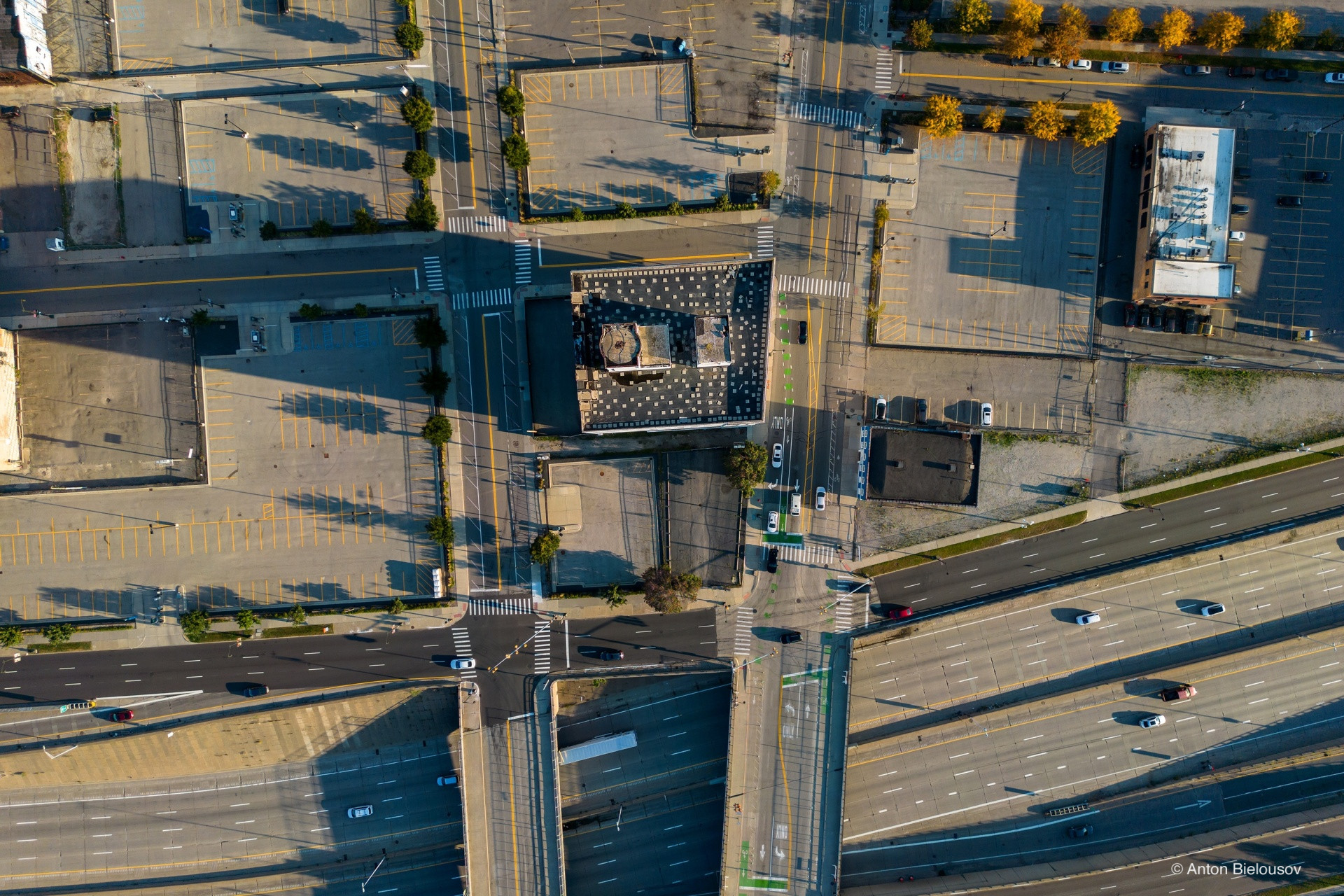
Ghost city’s “rush hour” on one of Detroit’s most historic streets—Michigan Avenue.
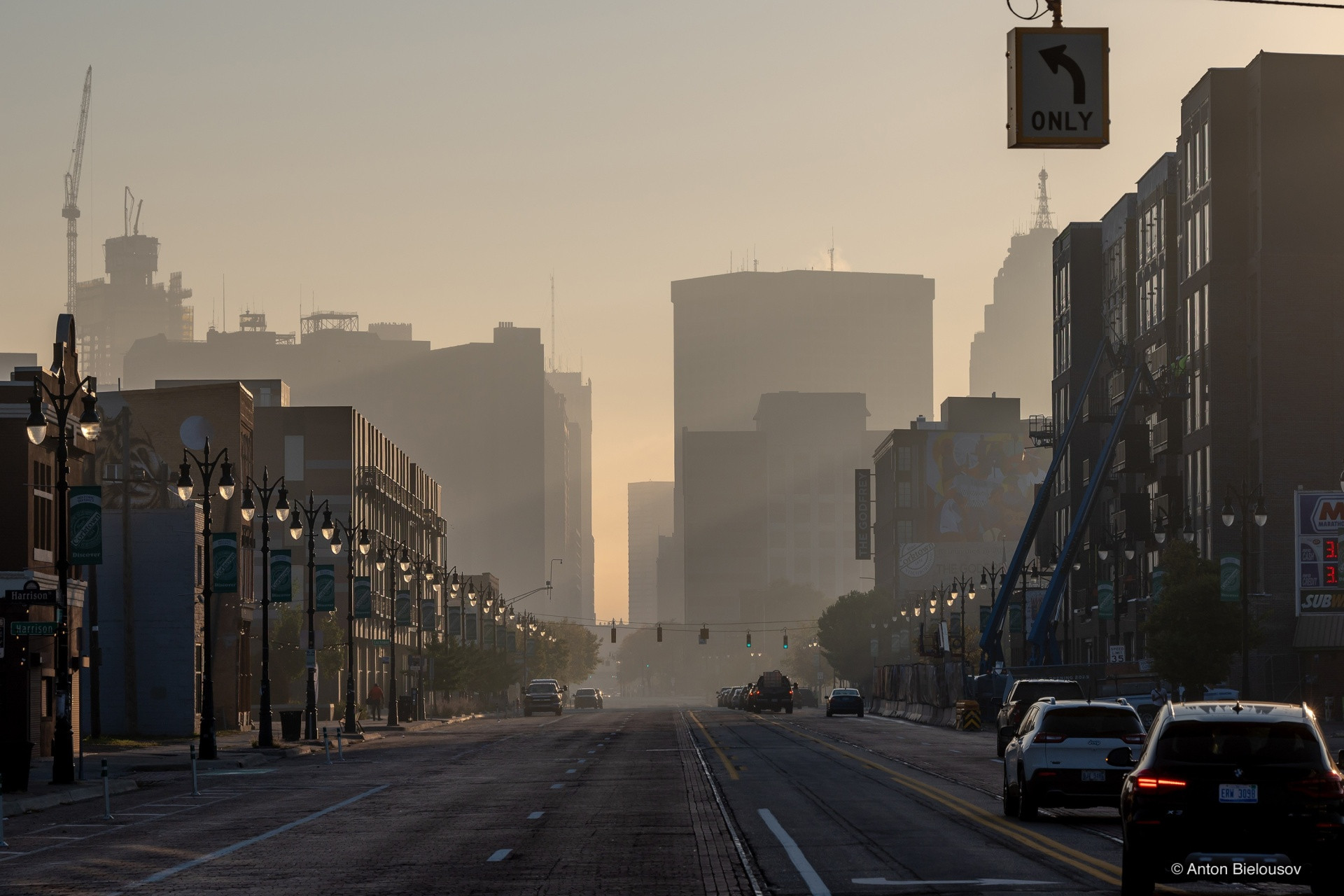
And once again, a post-apocalyptic backdrop—if you look at it from just the right angle.
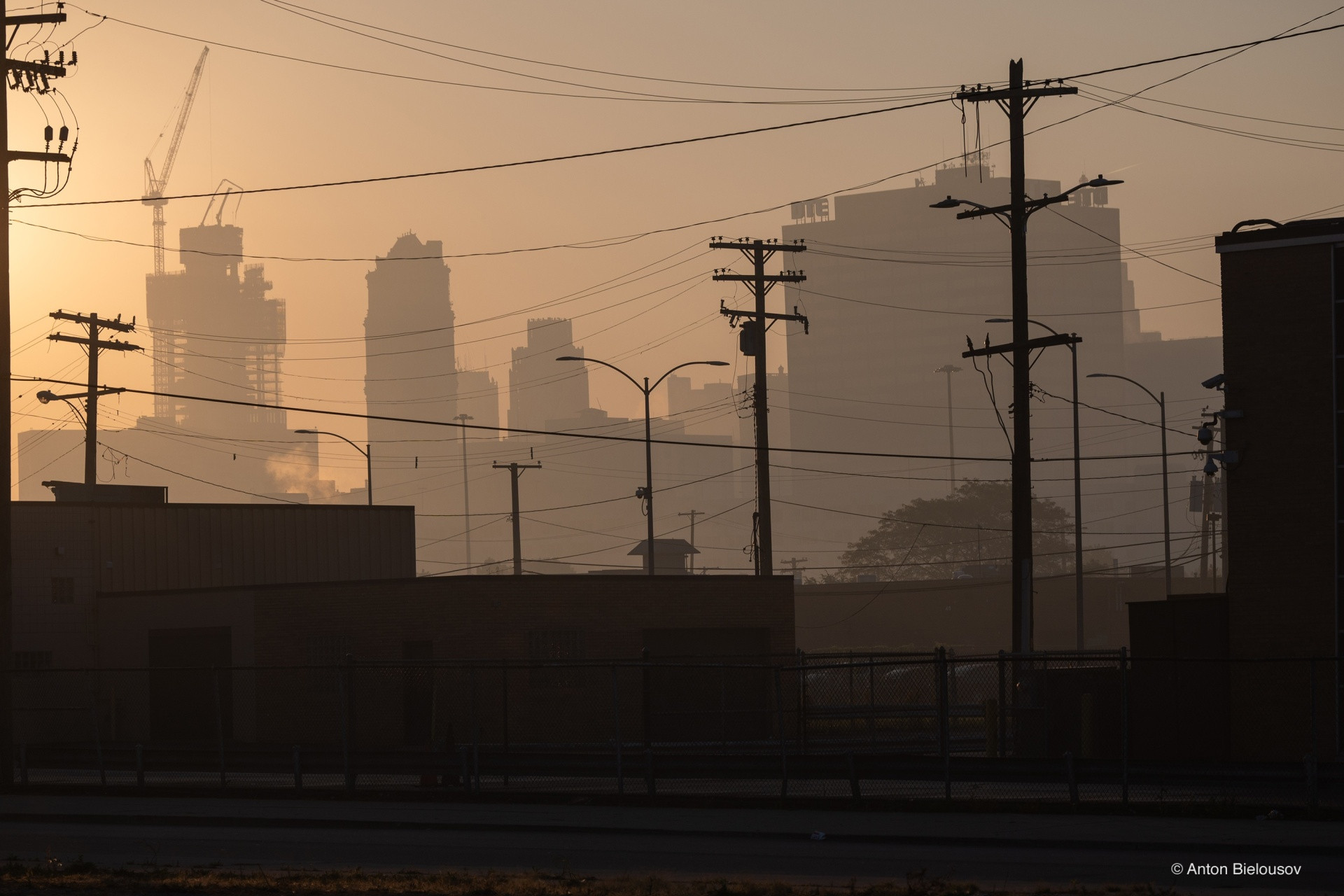
But let’s not forget—Detroit didn’t suffer a war with a neighboring dictator, nor was there some grand technological catastrophe. All these scars are from self-inflicted wounds.
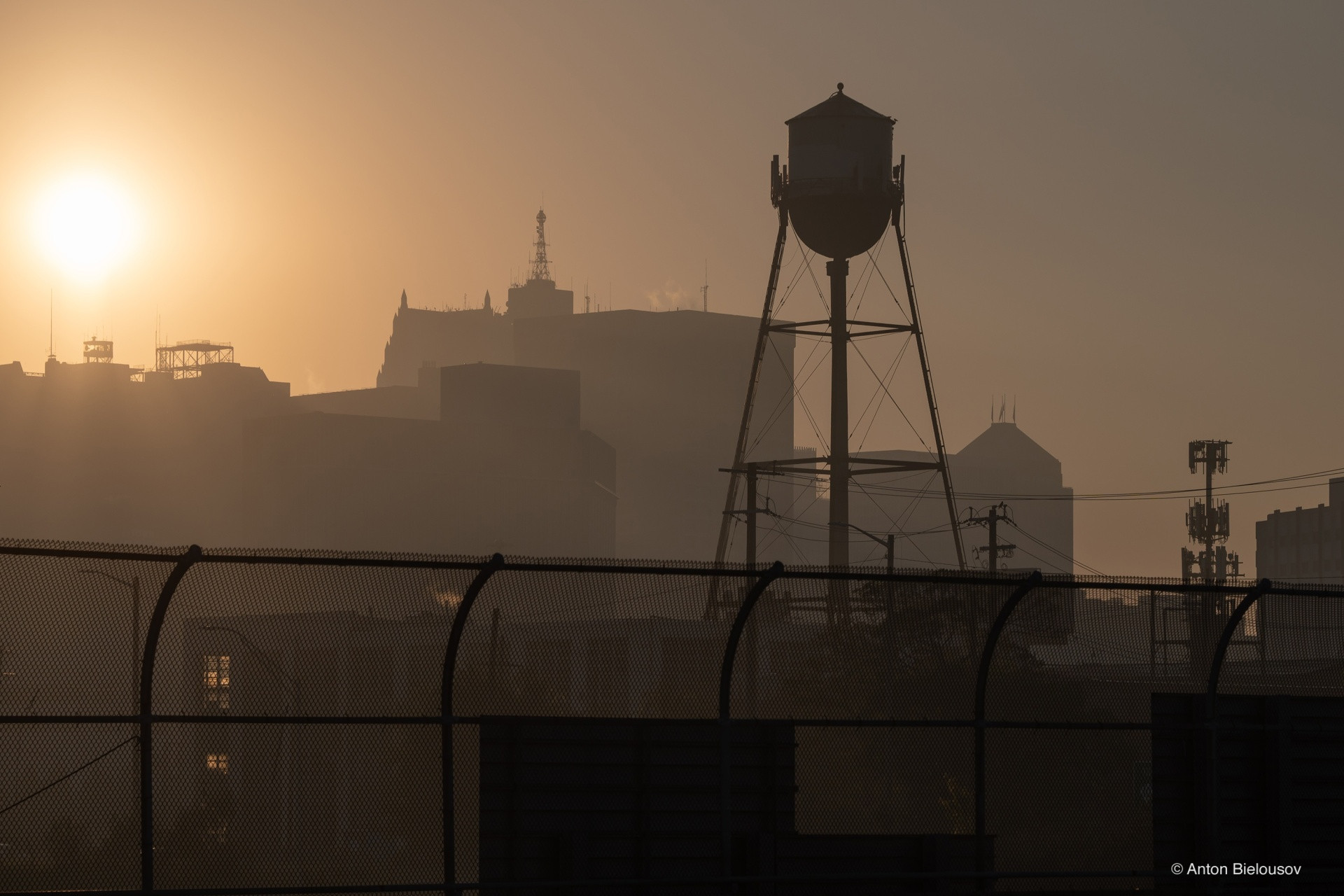
The hardest thing to wrap your head around is that nearly half of the skyscrapers in downtown are completely or partially abandoned too.
References
- Don’t be afraid of Detroit (RU)
- Lots of recoreded trespassing for good at detroiturbex.com
- Wayne State University, Walter P. Reuther Library: The Civil Unrest of 1967
- ENR Midwest: 112-year-old Train Depot Finds New Glory in Renovation
- Detroit Historical Society: The Spirit of Detroit
- Historic Detroit: Michigan Theatre
